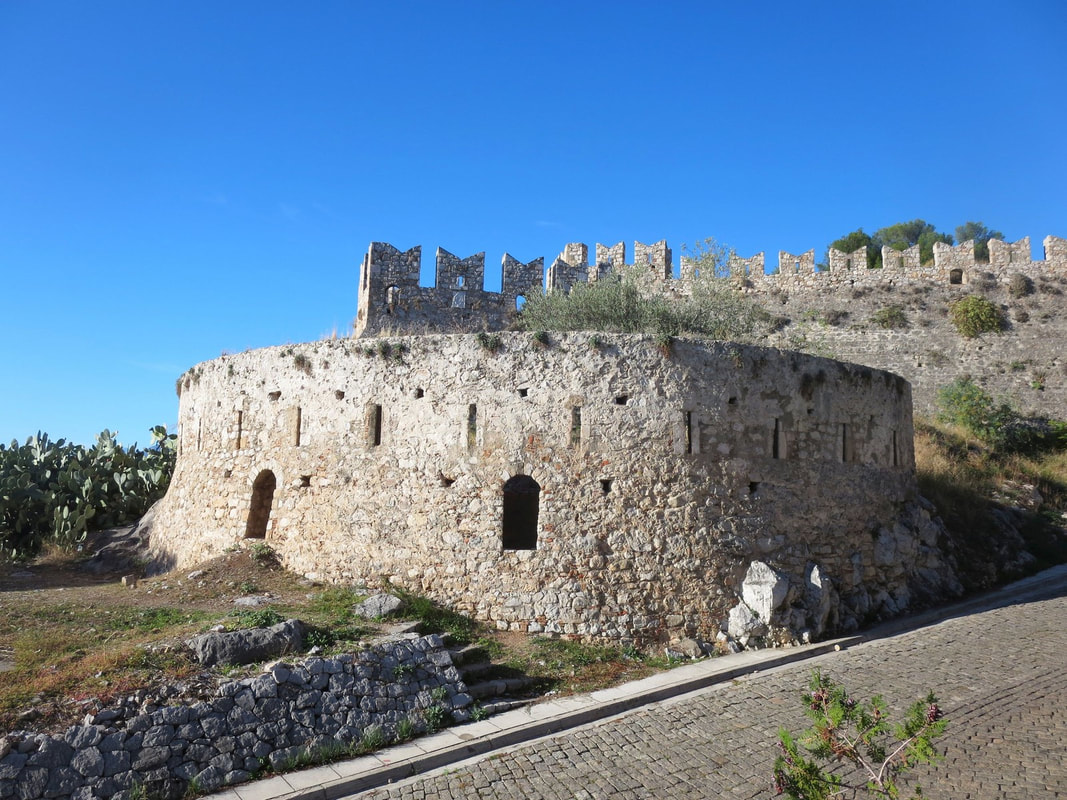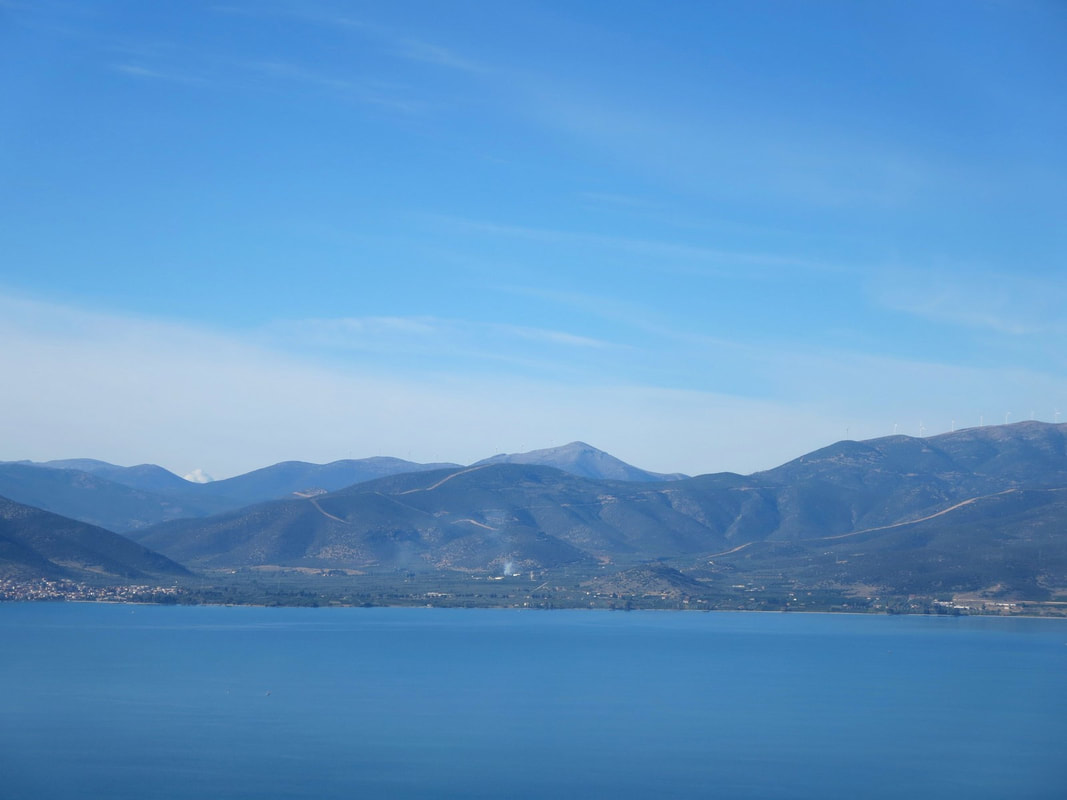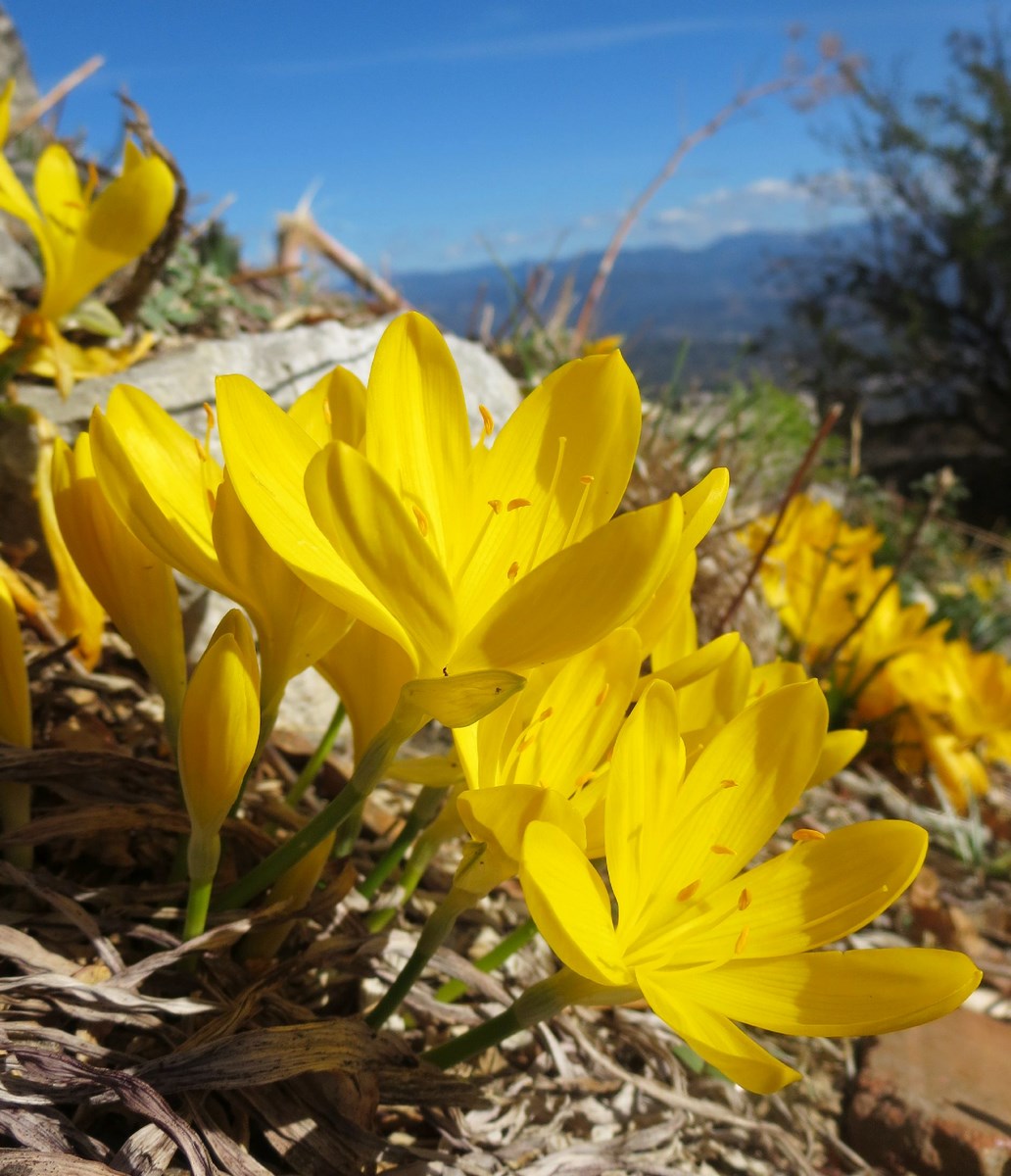
Autumn Flora of the Peloponnese
8-15 November 2017
Greece, southern Peloponnese
Main Aims and Objectives of Bursary Recipient
- To continue development of plant knowledge and identification skills of Mediterranean plant species
- To observe growing conditions of certain bulbous species, especially Cyclamen hederifolium, to aid understanding of how to cultivate these species more successfully, including replicating their natural habitat ex situ
- To share knowledge with work colleagues and the wider world of horticulture
Acknowledgements
I would like to thank the MPG Bursary Committee for granting me the funding which enabled me to go on this trip; without this generous assistance my involvement would not have been possible. I am extremely grateful.
Another big thank you goes to everyone involved in organising and leading the trip, from MPG people to our driver Yiorgos; it wouldn’t have been as enjoyable without their hospitality, generosity and humour.
A final message of thanks goes to the other trip participants, for being wonderful, joyous company and putting up with an over-enthusiastic youngster for a whole week. Some people were as unforgettable as the plants, you made my first time in Greece one I will never forget.
Journal
Wednesday 8th November
Weather: Rain, 16 ℃
We landed in Athens in the evening and were greeted by our friendly coach driver Yiorgos. Once on the coach it didn’t feel like Greece, darkness and rain followed us on the two-hour drive south to Nafplio in the Peloponnese. Most of the journey was on the motorway, it felt like we were still near London on the M25. There was a brief stop to look down over the Corinth Canal – even at night it was still impressive with the 86-metre-high sides lit up, stretching as far as the eye could see.
A late dinner was waiting in Hotel Agamemnon, the wine was welcomed as much as the food… Heather Martin greeted everyone and explained the itinerary for the following day: a free morning for people to spend as they wished, with the afternoon spent travelling further south to Sparta. I met my roommate for the trip, Ilona, and fell asleep instantly – it had been a long day.
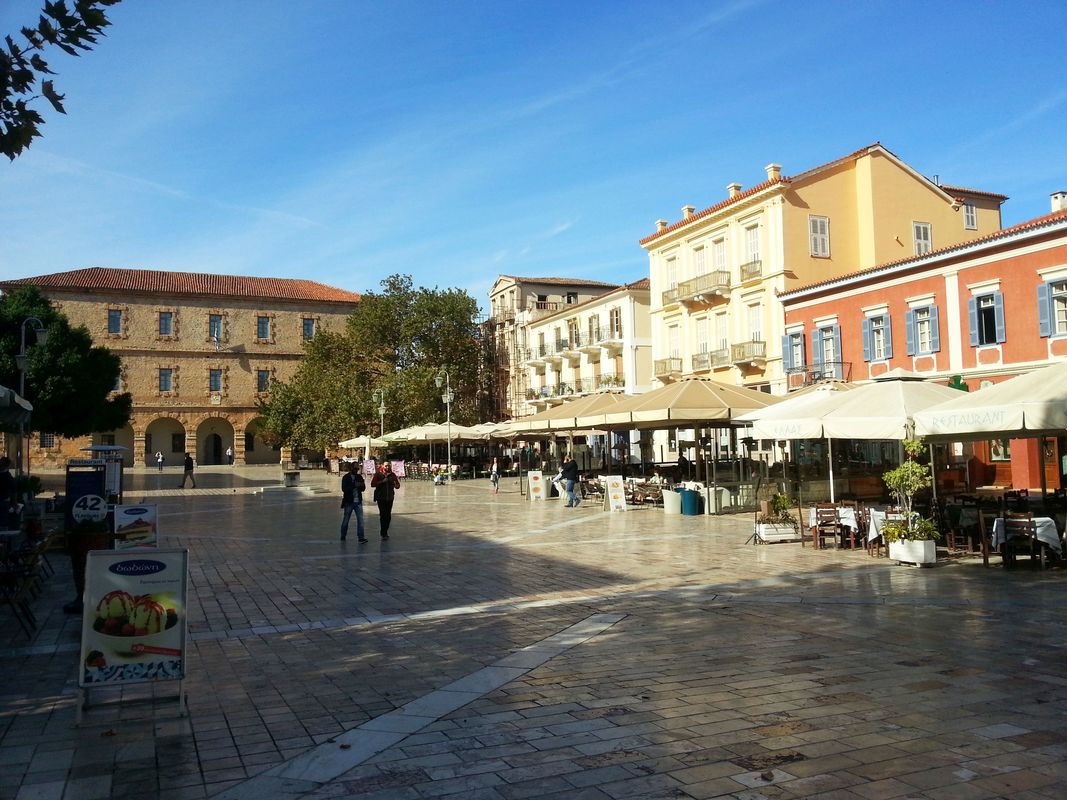
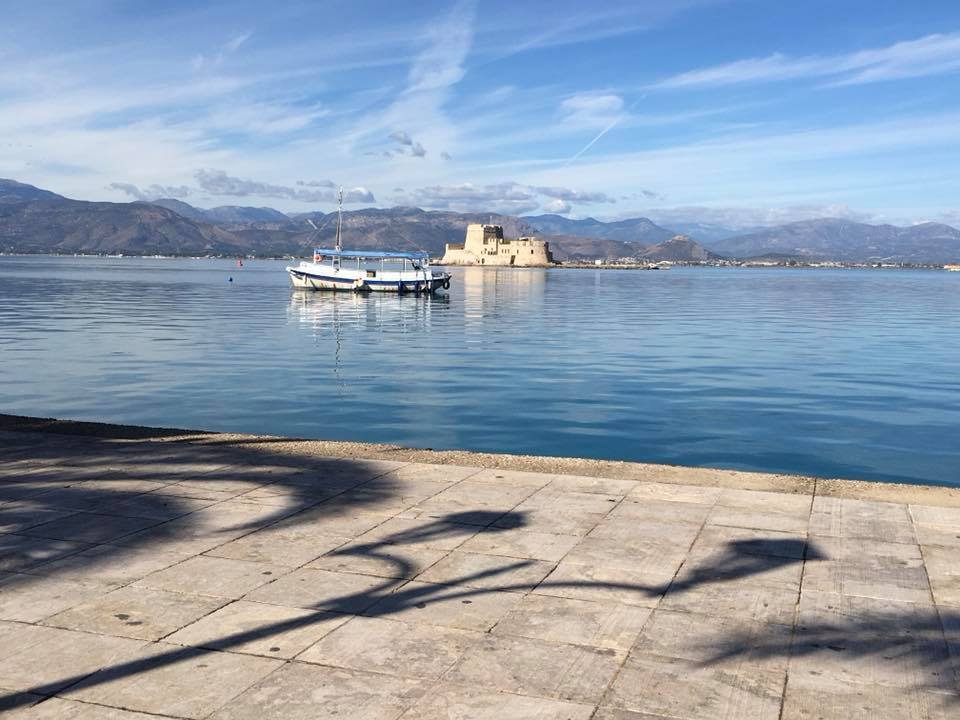
Thursday 9th November
Weather: Sunny, 20 ℃
I woke bright and early and was dazzled by my first ever views of Greece (in daylight); the sun was already shining and the sea was the stereotypical Mediterranean blue. After a hearty breakfast, including traditional Greek spinach and cheese pies, aka spanakopita, I set off to explore the old town of Nafplio, once the capital of Greece. It was one of the most memorable beginnings to any trip abroad, having time to relax after travelling and soaking up the surroundings.
Wandering around the labyrinth-like narrow alleyways, I marvelled at the architecture, vivid pink Bougainvillea adorning balconies, olive trees in every back garden, pots of basil outside front doors… it was heavenly.
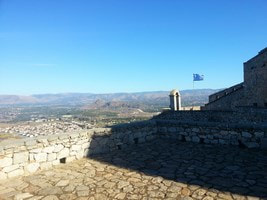
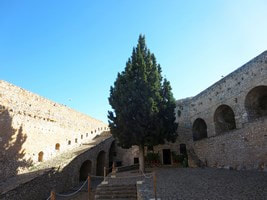
My next stop was Palamidi, the fortress which “floats above the city”, on a steep hill 216 metres high. It was built by the Venetians between 1711 and 1714 (an extraordinarily short amount of time), the ascent to the top definitely worked off breakfast. There are around 900 steps to climb, with each step the views of Nafplio and the Argolic Gulf became more incredible. I spotted my first cyclamen of the trip clinging to the rocks, a lone C. hederifolium.
I spent a good hour exploring the well preserved ruins of Palamidi with its evocative walls and buildings. I even sat in the freedom fighter Kolokotronis’ prison cell. It was blissful sitting at the top of the battlements and contemplating the surroundings; gorgeous views of Arvanitia beach with Nafplio as small as a toy town, the mountains of Arcadia framing the horizon, looming out of the hazy cloud like a mythical beast. The cerulean waters were reflected in the clear skies above, I could have been in a fairytale.
Before assembling at the coach I mooched around the cafes and shops, sampling the local Greek cuisine: double espresso coffee, followed by pistachio and honey and chocolate ice cream, dried figs and more spanakopita. We left romantic Nafplio behind us and journeyed south to Astros then over the Parnon via Agios Petros to Sparta – once one of the most powerful cities in the ancient world, with a couple of plant stops on the way.
We stopped in areas where John and/or Melvyn had been previously, hence there was plenty to see. Our first stop was a proposed half hour of exploration which turned into an hour…. There was too much to see. We scrambled up scree at the side of the road, at first it was hard spotting species amongst the rocks but once our eyes adjusted we saw plants everywhere
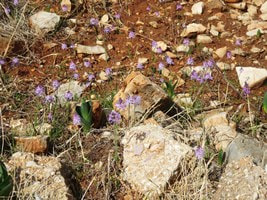
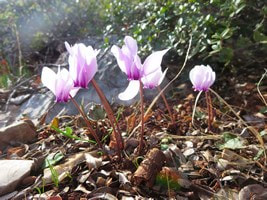
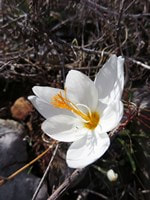


Prospero (syn. Scilla) autumnale was en masse, delicate flowers pushing out of the stones – it was hard not to tread on them. Our first crocus was Crocus boryi, flowers broad and pure white with a deep yellow throat. These camouflaged well against the beige-coloured rocks.
A cause for excitement was a suspected Crocus laevigatus, or it could have been an extreme form of C. boryi – these species are similar to each other, usually C. laevigatus has smaller flowers than C. boryi, with the exterior outer segments having one to three purple stripes. We all crowded around John for the verdict. At first he was unsure but, on examination with a hand lens, he declared it to be C. laevigatus.
Cyclamen graecum was everywhere, the broad, heart-shaped leaves were as attractive as the pink flowers. This species is normally found in terra rossa in full sun, which this site was. A few clumps of pink flowering Colchicum cupanii were found, I liked how it formed small posies on the ground. Sea squill, Drimia numidica, wasn’t flowering but even so its rosettes of glossy green leaves were still attractive.
Plants noted:
Colchicum cupanii
Crocus boryi
Crocus laevigatus
Cyclamen graecum
Drimia numidica
Prospero autumnale
We drove onwards, leaving the sea behind and weaving through the mountains. The vegetation changed dramatically with junipers and oaks becoming the backdrop – it’s hard appreciating the vegetation when the flowering plants are the main focus. We stopped briefly where we saw my favourite crocus of the entire trip – Crocus biflorus ssp. melantherus. This had eye-catching white flowers with distinctive dark striping on the outside tepals (fused sepals and petals), the anthers are black before dehiscing (releasing their pollen).
It was surprising to find Quercus coccifera with acorns, I had seen this before in Portugal but only in spring – here it truly looked like an oak. For me seeing the same plant at a different time of year is like seeing it anew.
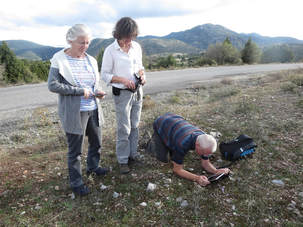
Members taking photos
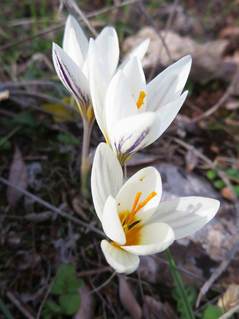
Crocus biflorus ssp. melantherus
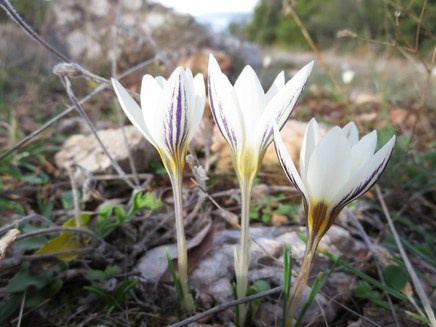
Crocus biflorus ssp. melantherus
Plants noted:
Crocus biflorus ssp. melantherus
Euphorbia rigida
Quercus coccifera
Ruscus aculeatus
The rest of the drive to Sparta was stunning; during the build-up for this trip I hadn’t once considered what the autumn colours would be like, the vivid display from the various trees was astounding. Rivers of fire snaked through otherwise evergreen valleys, the rich hues of gold and bronze from plane trees, chestnuts, poplars, oaks and smokebushes were magnified by the setting sun. John explained these pockets of colour often appear in valleys where it’s damp and the soil more acidic.
Crataegus monogyna, the same as our native hawthorn in the UK, had red berries, Clematis vitalba was easy to spot with its fluffy seeds. Erica manipuliflora was also seen, a heather with mauve flowers.
Plants noted for autumn colour:
Castanea sativa
Clematis vitalba
Cotinus coggygria
Crataegus monogyna
Erica manipuliflora
Fraxinus ornus
Juniperus drupacea
Lagerstroemia indica
Pistacia terebinthus
Platanus orientalis
Populus alba
Quercus pubescens
Robinia pseudoacacia
Sambucus ebulus
Just before Sparta we saw the Taygetos mountain range close up, a dramatic silhouette. Hotel Maniatis was our home for the next two nights, I enjoyed sharing with Ilona as we both have a love of Devon – she lives in Yelverton near my hometown. Dinner was pleasant and relaxing, I knew members from the MPG trip to Jordan in March 2017 so it was nice catching up with familiar faces but equally stimulating meeting new people. Heather encouraged us to swap around seats on the tables which was a fun way of socialising.
Friday 10 November
Weather: Sunny, 24 ℃
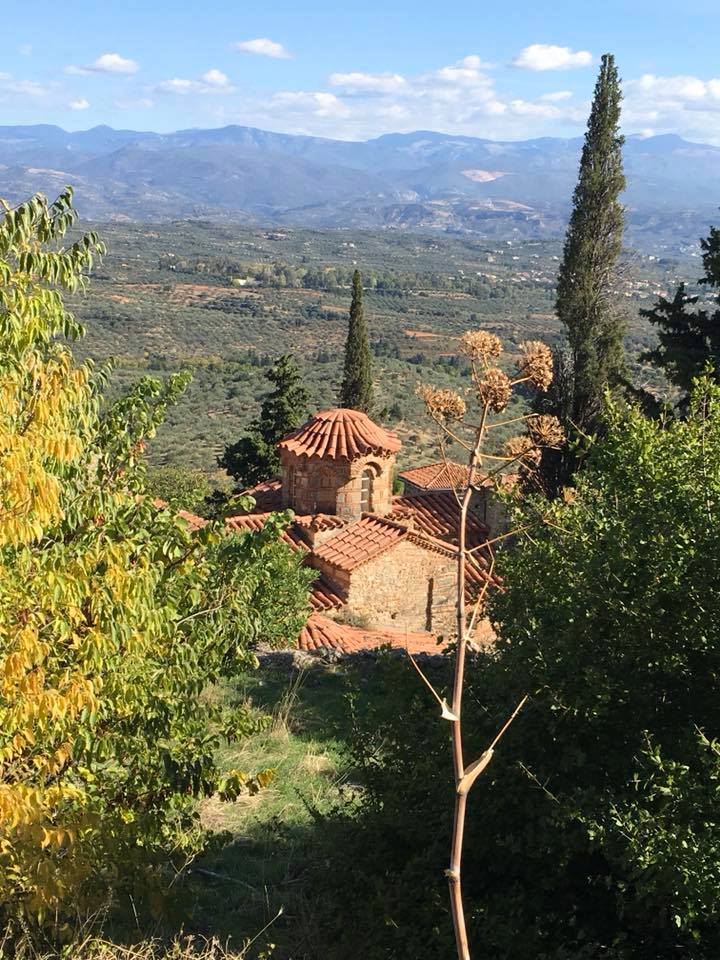
Mystras view – MJ
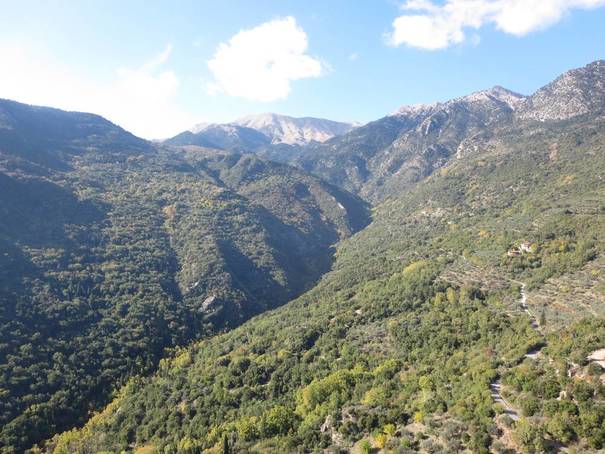
View of the mountains from Mystras summit
We visited the UNESCO World Heritage Site of Mystras, a relict townscape from the 13th century. It was founded by the French crusaders and then developed into a major centre of culture and trade in the 13th and 14th centuries. It is wonderfully well preserved, beautifully resting in the mountainside. Today Mystras is deserted, in the sense that no one lives here, with the exception of some nuns who we met on the descent.
Yiorgos dropped us off near the top of the site. The plan was to spend the morning exploring and then to meet up at the visitor centre for a picnic lunch. There was so much to take in, we stopped every five minutes to “ooh!” and “aaah!” over plants. Some members chose to climb to the summit, others didn’t. I stayed with John’s group, not just for the excellent company (!) but because he knew the names of every single plant we came across. It’s not what you know, it’s who you know.
One of the unexpected joys of seeing autumn flora is learning to identify plants with only foliage or seedheads and no flowers. This was the case for Lunaria annua ssp. pachyrhiza and Orobanche sp., both growing near each other with perfectly intact flower spikes and seedheads.
I took a particular liking to the rustyback fern, Asplenium ceterach (found in most places throughout the trip), its dark green fronds are rusty red beneath. Polypodium australe was coming into leaf, growing out of rocks above our heads – this has adapted to grow in Greece – it thrives in the south west of the UK too.
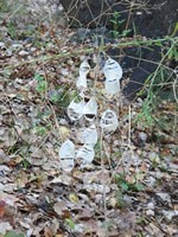
Lunaria annua ssp. pachyrhiza
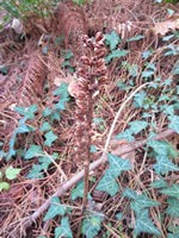
Orobanche sp.
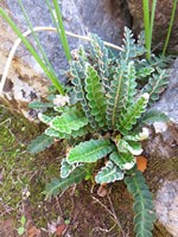
Asplenium ceterach
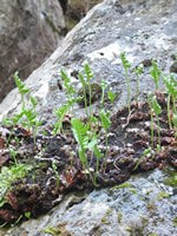
Polypodium australe
Several interesting plants we found not in flower included Campanula topaliana, Iris florentina (grown to produce orris-root, a scented substance used in perfumes) and the orchid, Himantoglossum robertianum. Miniature forms of Ficus carica were growing out of the rocks, the cutest bonsais I’ve ever seen. Eventually the steep, rugged track gave way to the summit, and the ruins of the defensive castle. The extensive views over the plains of Sparta were breath-taking, again the mountains made a sensational backdrop.
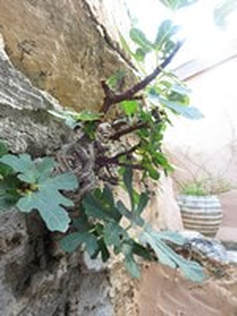
Bonsai Ficus carica
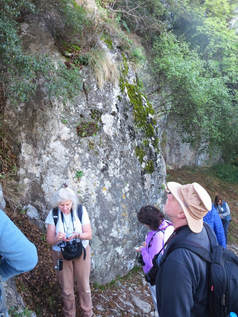
Members looking at Polypodium australe
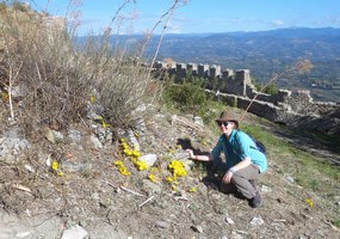
Becky Cross with Sternbergia lutea
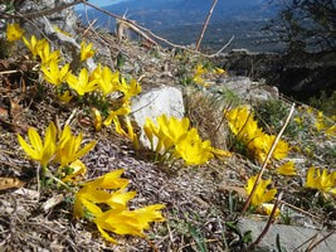
It was here one of my most memorable plant highlights was found, Sternbergia lutea growing en masse. They stole the show at Mystras, linear leaves a glossy green with flowers the brightest yellow I have ever seen – gleaming even more so in the sunshine. They truly were the flowers of smiles. At first we saw a few on the edge of the cliffs then we found many more among the ruins and rocks further down. Seeing so many flowering together made the effect even more breathtaking. It was hard to tear ourselves away from the golden treasures, however we saw many more gems on the descent to the visitor centre.
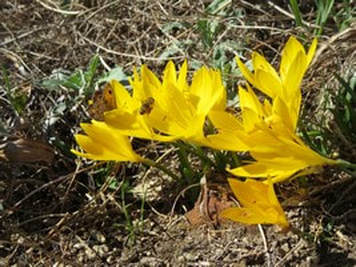
Sternbergia lutea
John said to try the fruits of Celtis australis, they tasted a bit like dates. Several specimens of Cercis siliquastrum were growing near the various buildings, Centranthus ruber was growing out of every crack and crevice – it’s native to Greece but more at home in our UK climate.
The focal points of Mystras are the Byzantine churches, mostly restored both inside and out, with exquisite frescoes. Walking along the worn pathways weaving through gates, streets, between forts, churches and monasteries, houses and palaces, was a real trip through history. It would have been easy to spend a whole day here, marvelling at the scenery as well as the plants.
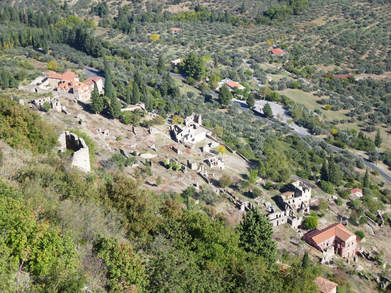
Mystras
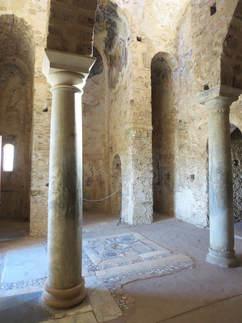
Inside one of the Byzantine churches
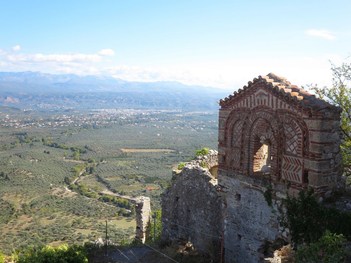
Mystras view
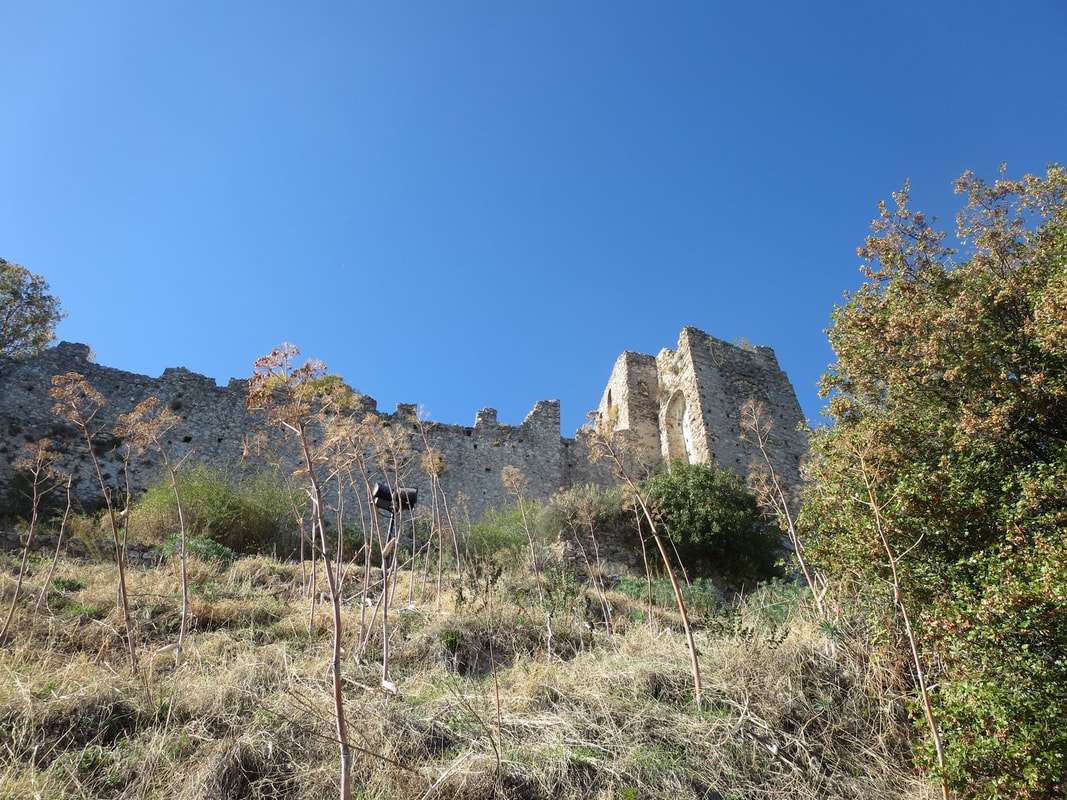
View of defensive castle
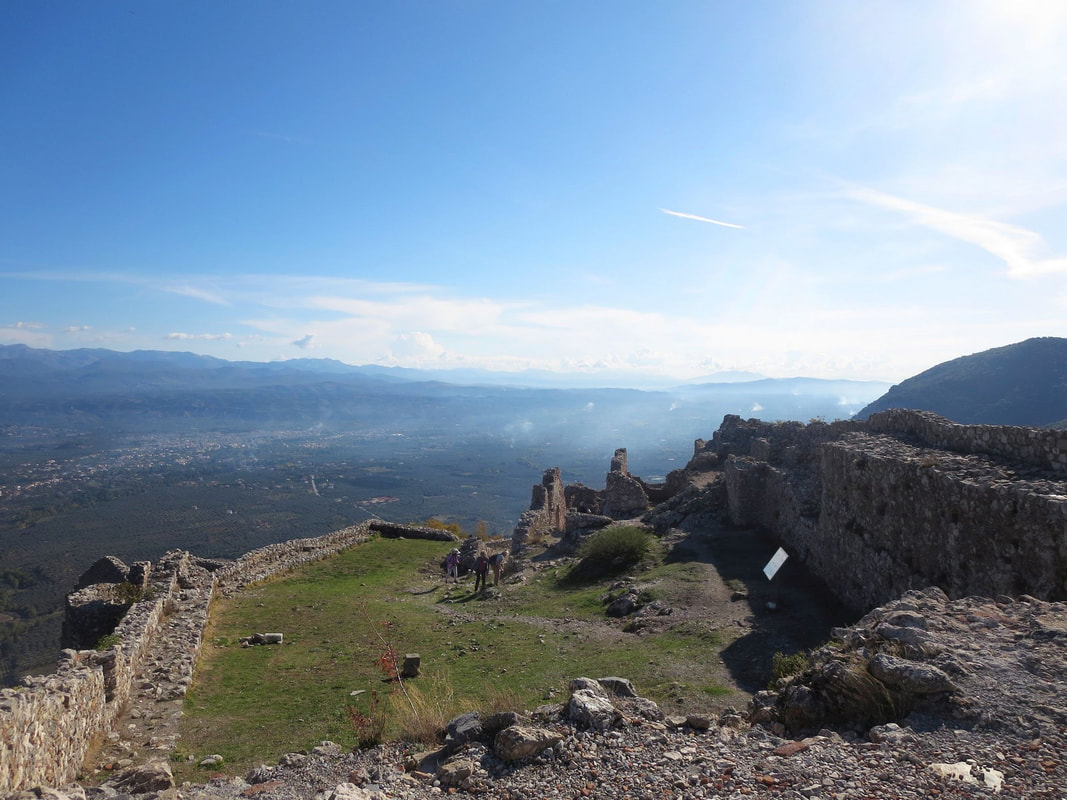
Views of castle ruins from summit
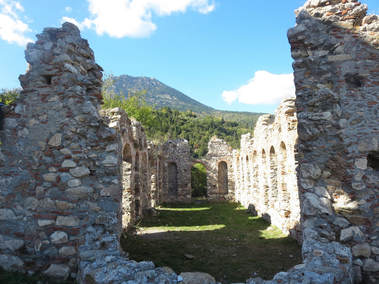
Ruins at Mystras
The Pantanassa Monastery is the only monastery in Mystras operating today, with hospitable nuns ready to provide visitors with water, information and gifts from their shop. It was here we saw a new plant for me, Gomphocarpus fruticosus aka milkweed, which has widely naturalised in Greece. Its fluffy seeds and pods looked like inflatable balloons. We saw more Cyclamen graecum in leaf and flower, the leaves were so variable on these specimens compared to ones we had previously seen. On some clumps the tubers were exposed, gnarled and big, they can get to 200 years old.
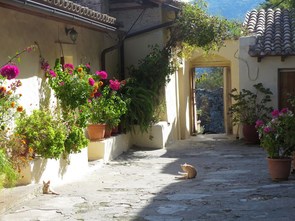
Pantanassa monastery

At the top of the Pantanassa monastery
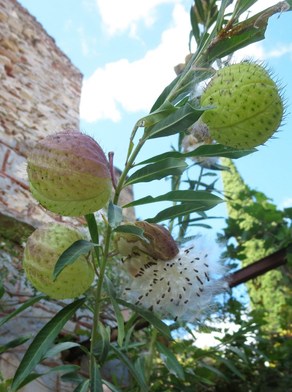
Gomphocarpus fruticosus
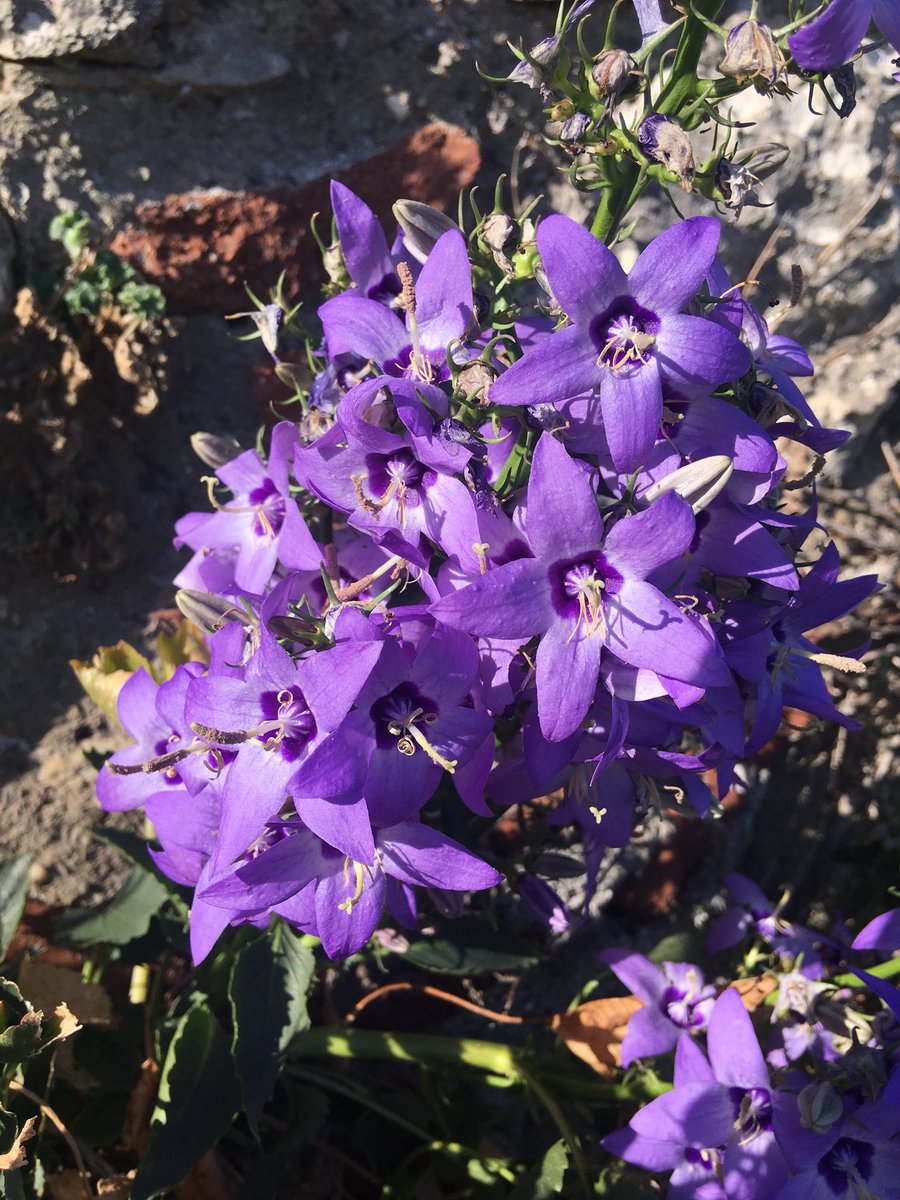
Campanula versicolour
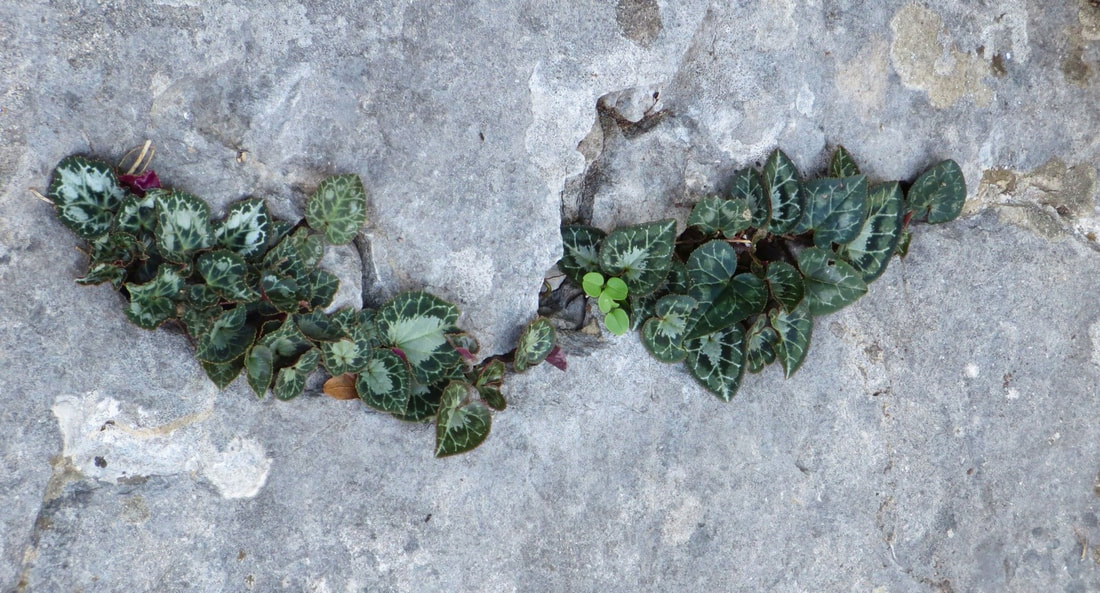
Cyclamen graecum leaves
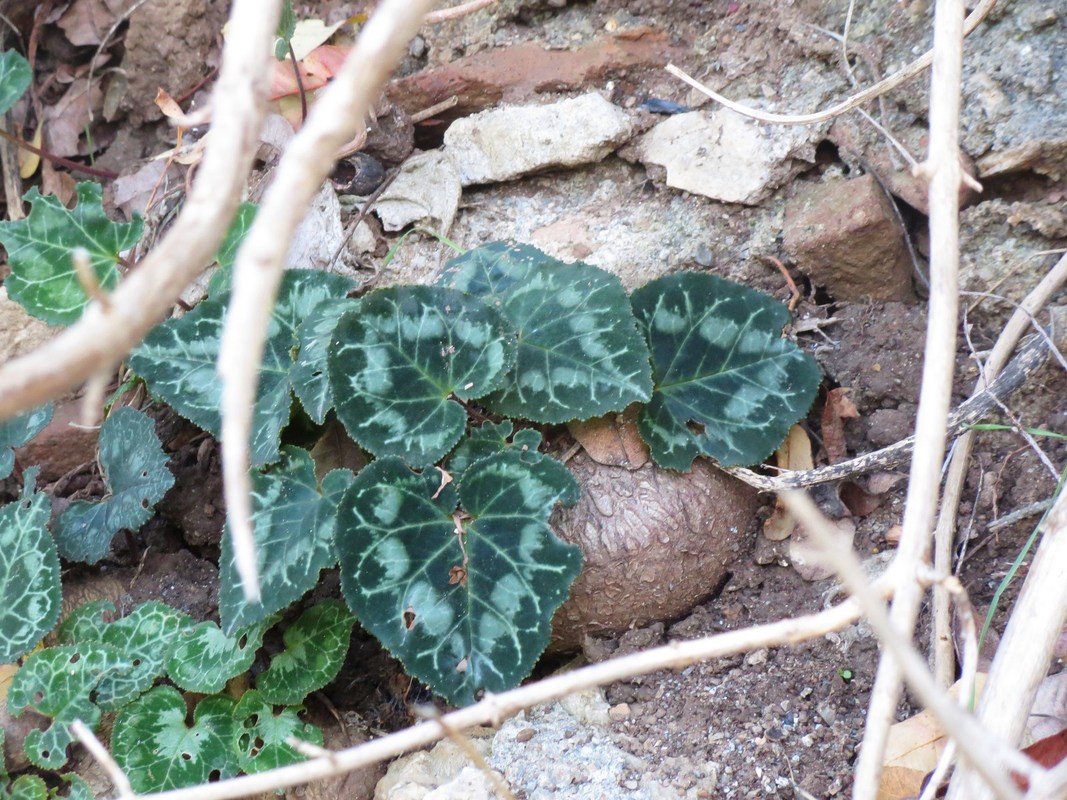
Exposed tuber of Cyclamen graecum
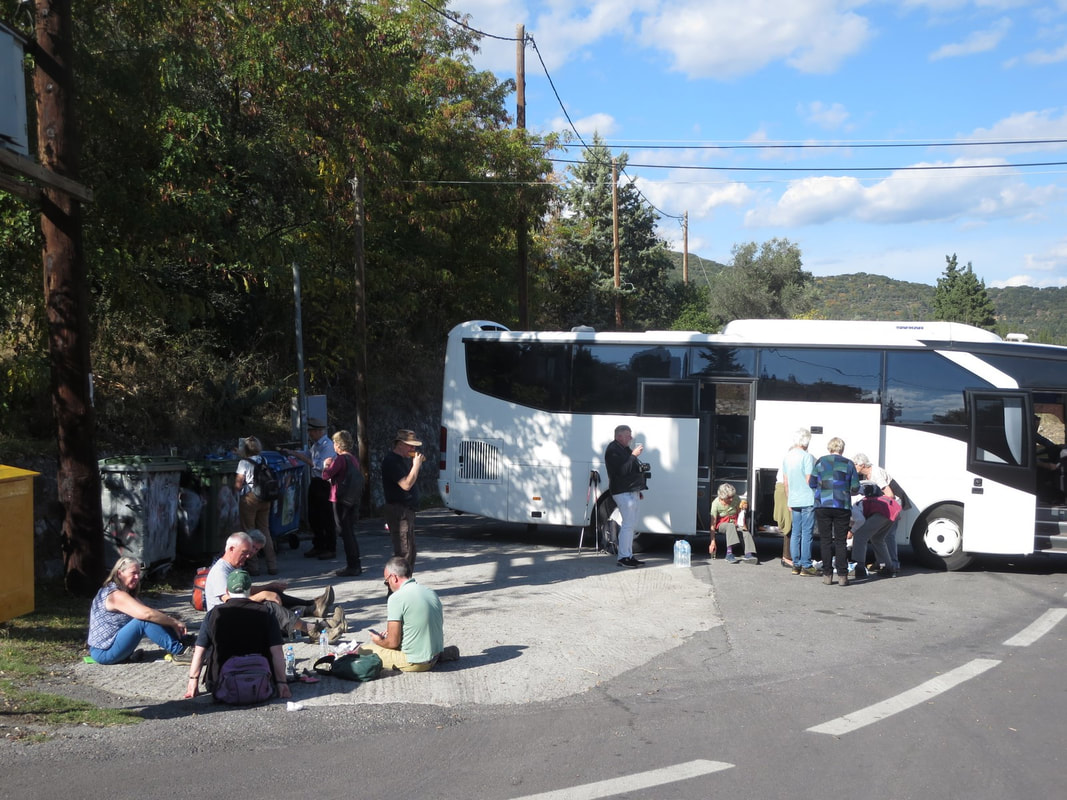
Members picknicking beside coach
Plants noted:
Asparagus aphyllus
Asplenium ceterach
Calamintha nepeta
Campanula topaliana
Campanula versicolor
Celtis australis
Centranthus ruber
Cercis siliquastrum
Cichorium intybus
Cyclamen graecum
Ephedra fragilis
Ferula communis
Ficus carica
Galactites tomentosa
Gomphocarpus fruticosus
Himantoglossum robertianum
Iris florentina
Lunaria annua ssp. pachyrhiza
Morus alba
Orobanche sp.
Polypodium australe
Scolymus hispanicus
Smilax aspera
Sternbergia lutea
Umbilicus horizontalis
Verbascum undulatum
Vitex agnus-castus
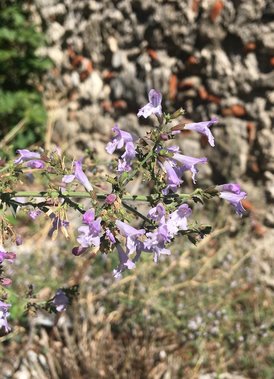
Calamintha nepeta JC
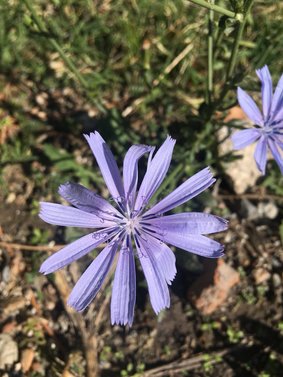
Cichorium intybus JC
After a picnic lunch we travelled further into the mountains to a valley site above the Paleopanagia. This habitat was totally different to those we had visited before, barely recognisable as the Mediterranean. As soon as we stepped off the coach the change in temperature was startling compared to earlier. A forest with Pinus halepensis and Platanus orientalis as the dominant species, with a river running through the middle.
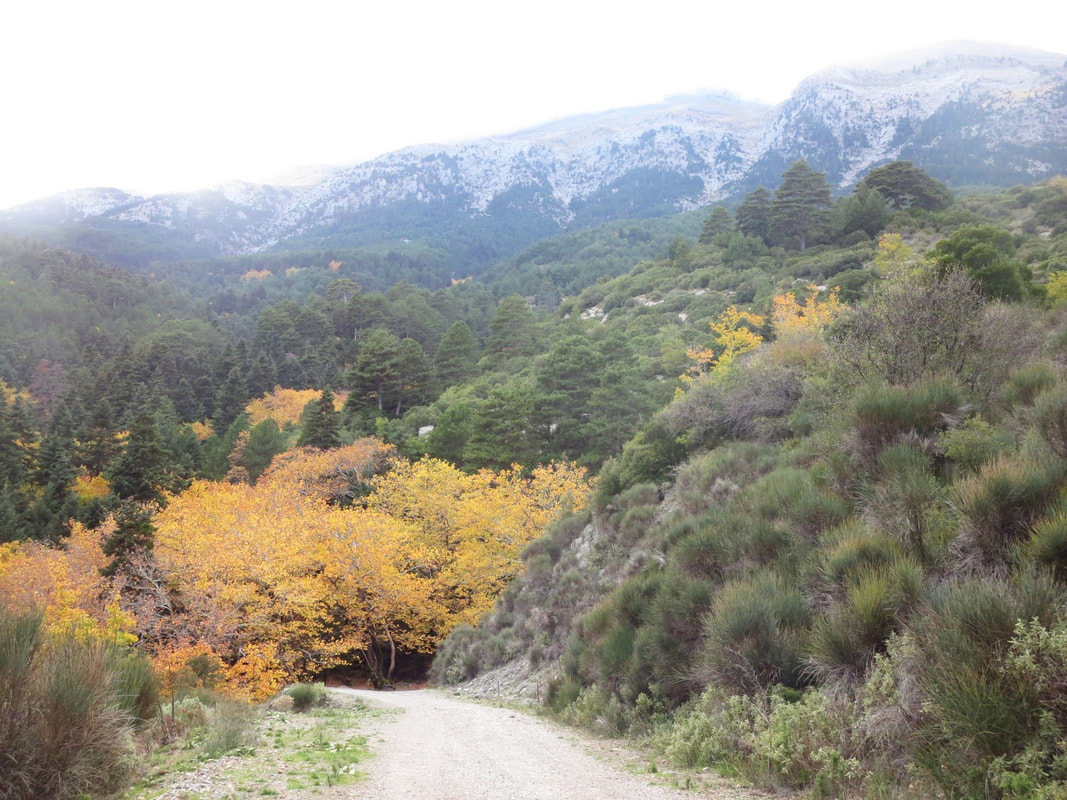
View of the mountains
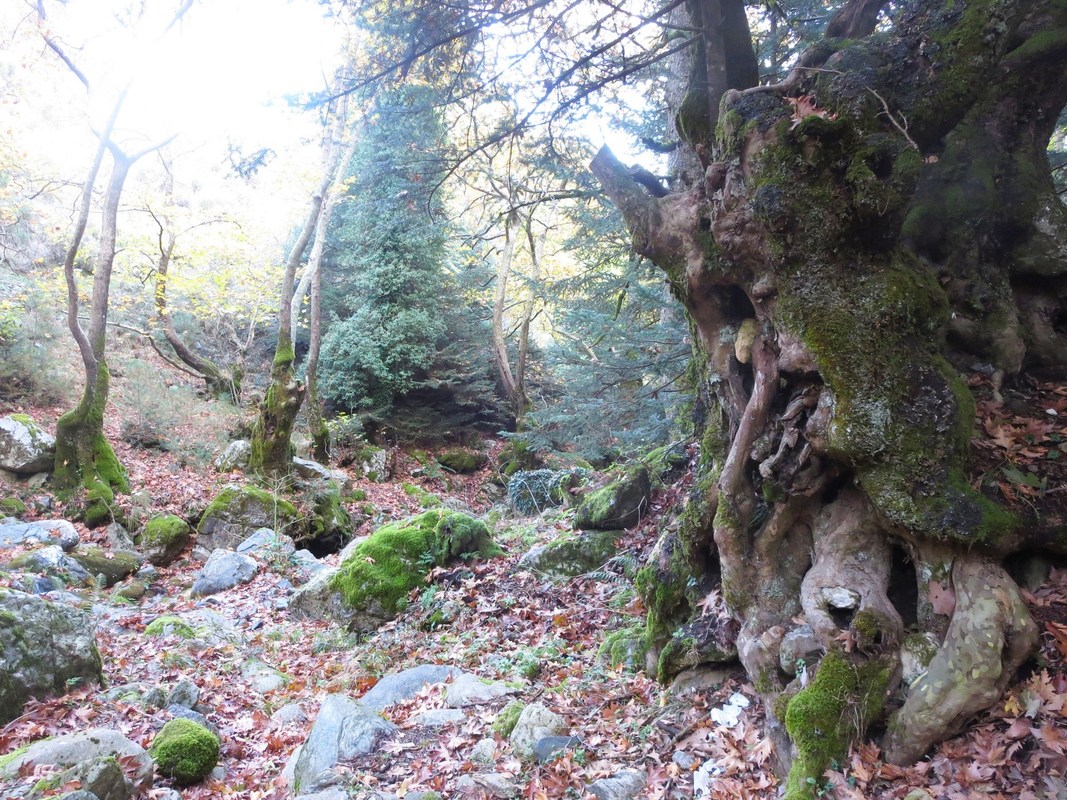
Forest habitat
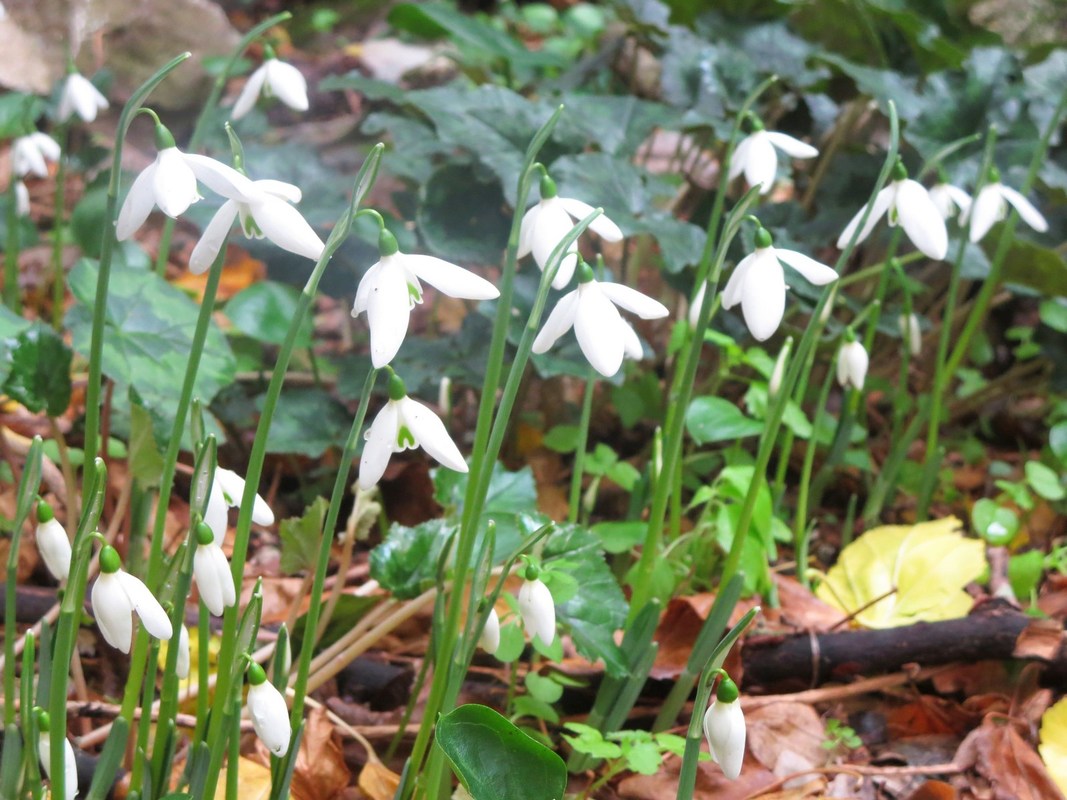
Galanthus reginae-olgae
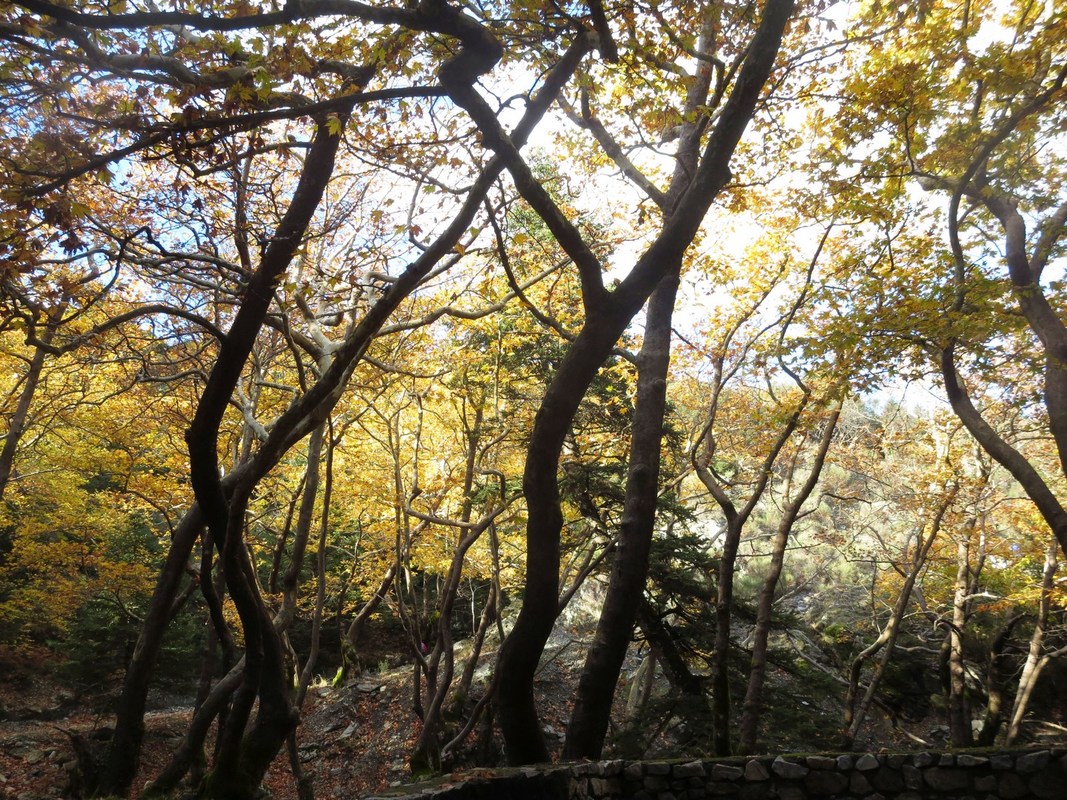
Plane trees in mountains
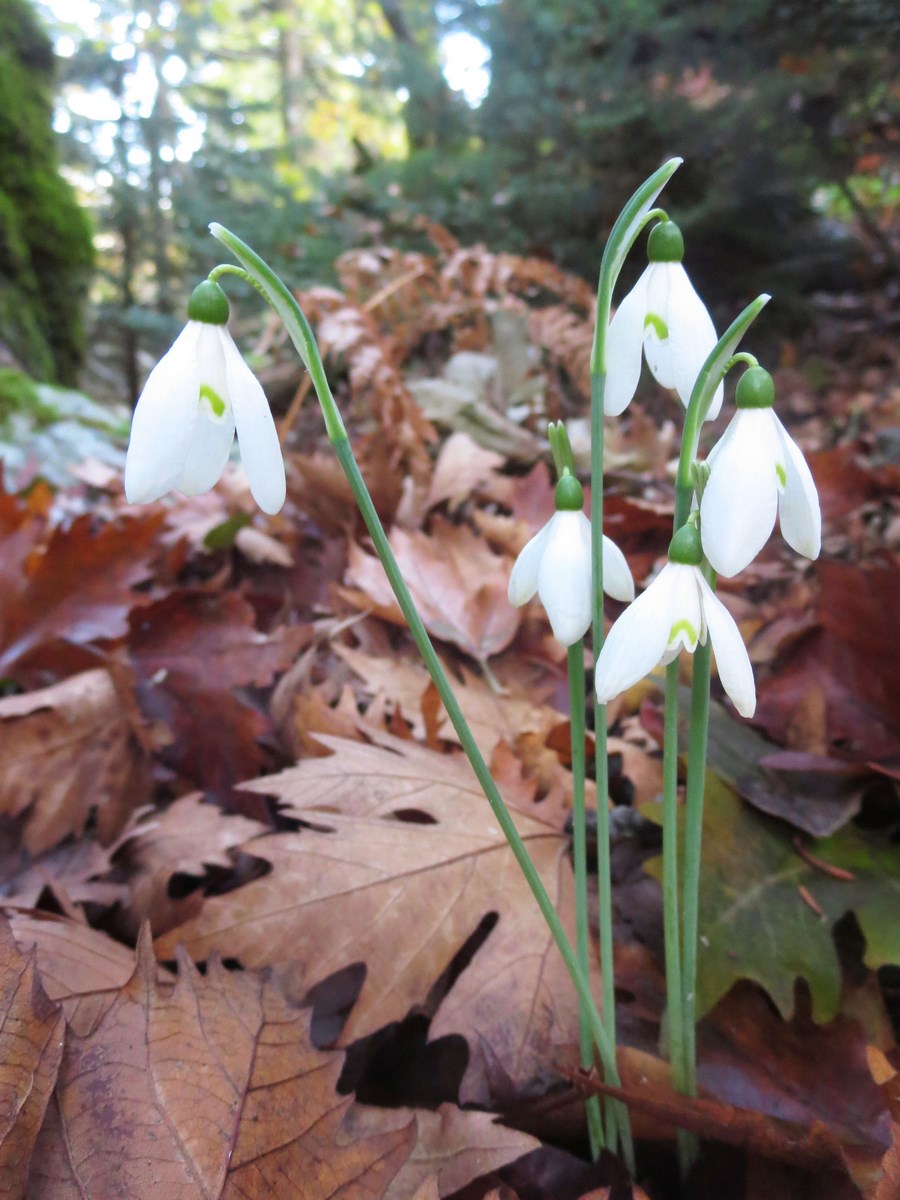
Galanthus reginae-olgae growing through leaf litter
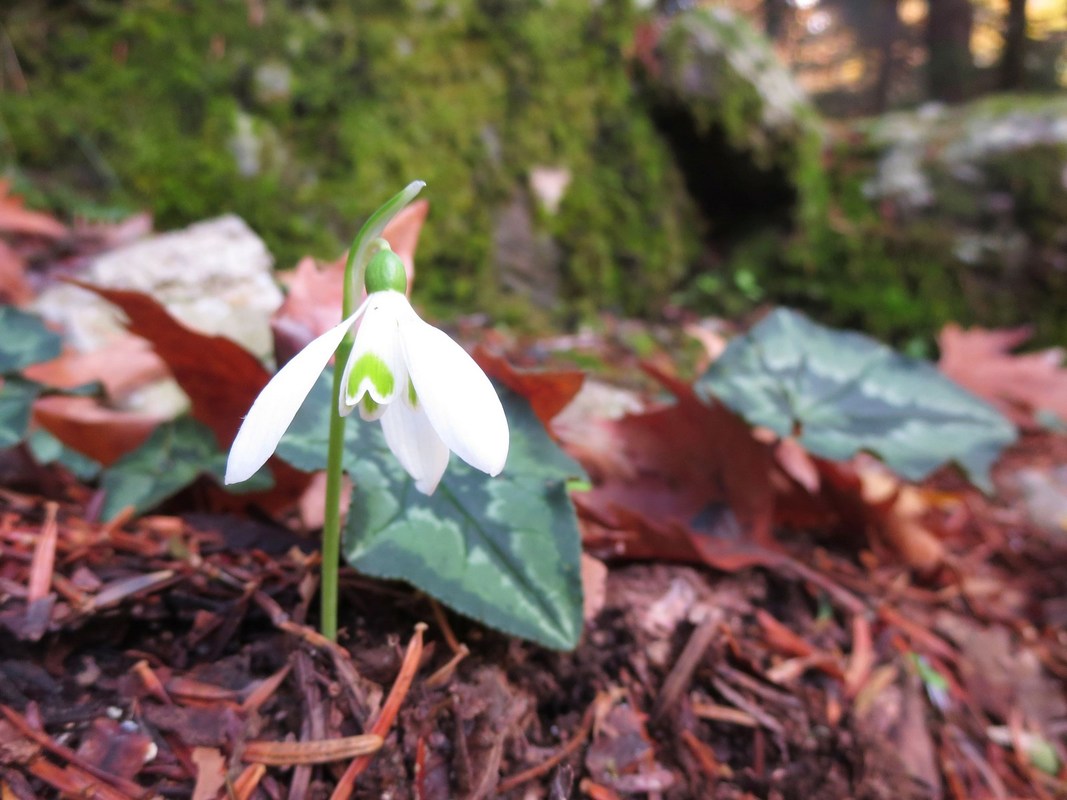
Galanthus reginae-olgae with Cyclamen h. leaves
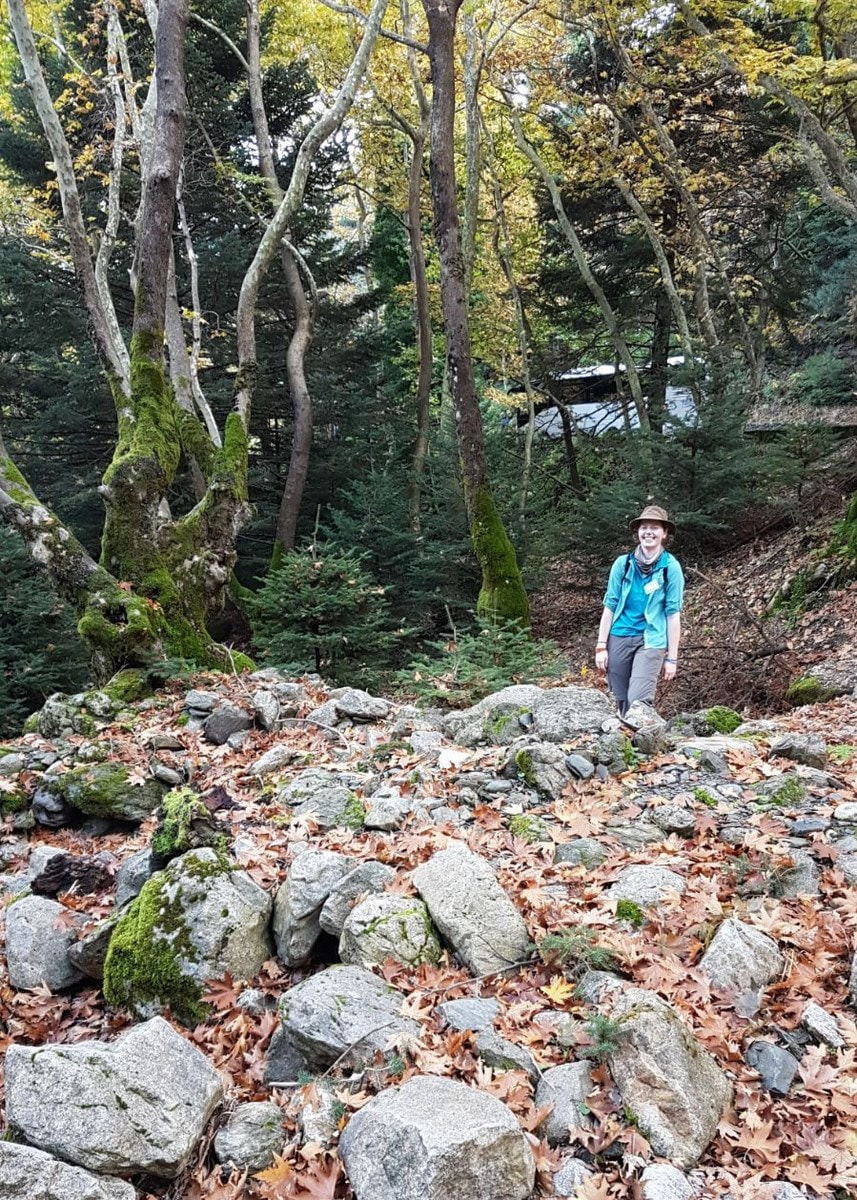
Becky in forest habitat

Cyclamen hederifolium en masse
We were here specifically to see the autumn flowering snowdrop, Galanthus reginae-olgae. This was the first time I had seen snowdrops growing in the wild, I only walked a few feet before I saw them. They were growing singularly, or in small clumps, right by the roadside, in rocks, absolutely everywhere. During a casual wander around the immediate area we found some really pristine clumps peeping through the thick leaf litter. I had always known snowdrops were woodland plants and seeing them in this setting cemented this even more; the habitat was moist and shady with a lot of leaf litter, with snowdrops more prolific on the edge of the river where it was moist and less so in the drier areas.
We also saw Cyclamen hederifolium for the first time, this was thrilling for me as it is the same species that is cultivated at my place of work. The leaves had the classic ivy-look with hastate patterning, again flowers shyly peeking over the top of leaf litter. An unusual lichen was spotted on a rock, Lobaria pulmonaria, a composite organism containing three different species; it had a remarkable physical resemblance to human lungs. It grows in the UK, mainly in Scotland, and is an indicator of ancient forests. My knowledge of lichen is limited however I find them fascinating.
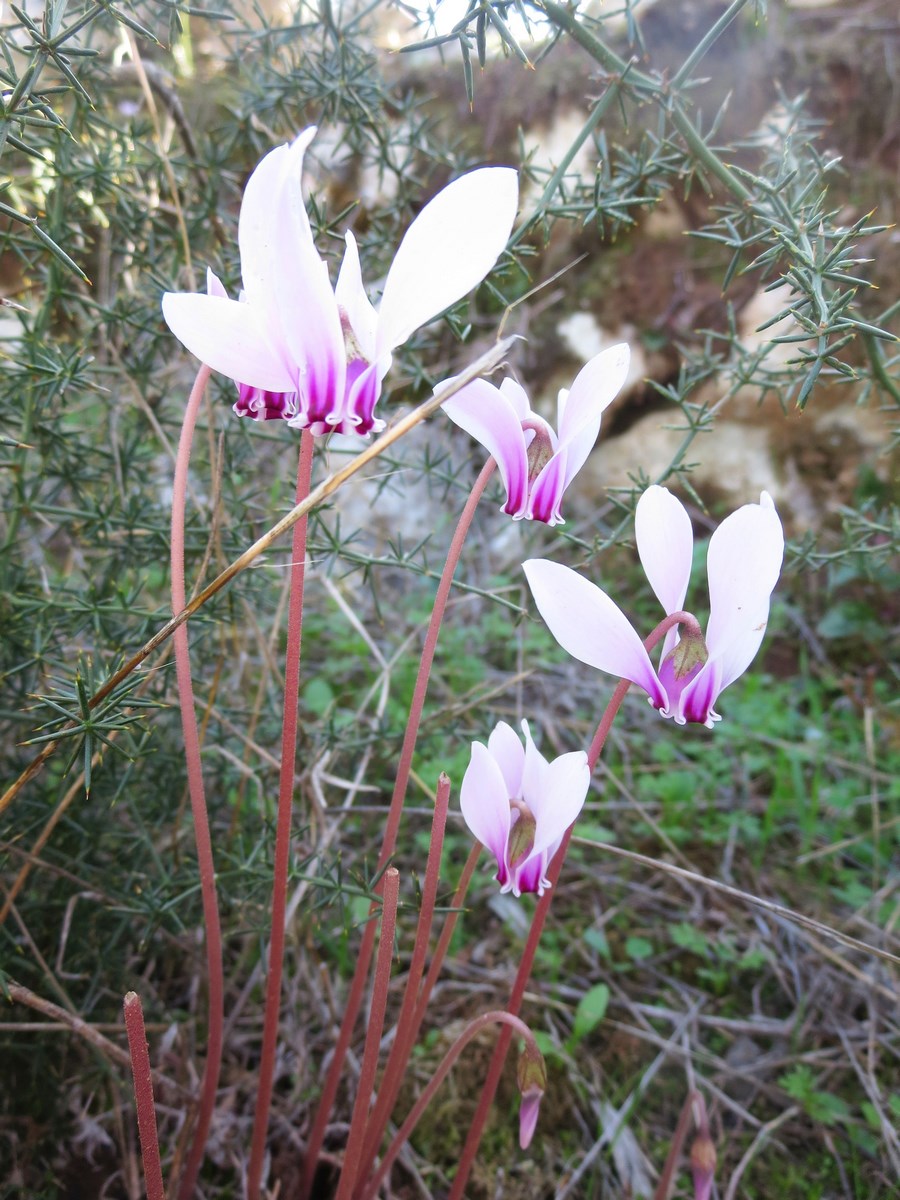
Cyclamen hederifolium
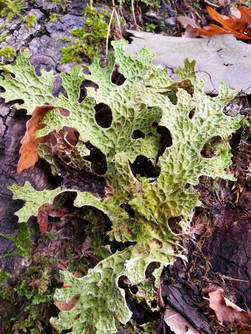
Lobaria pulmonaria
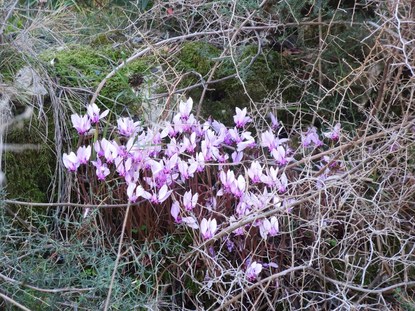
Cyclamen hederifolium
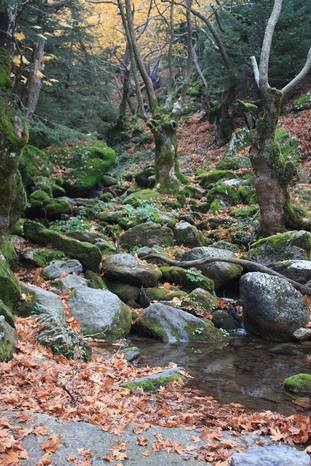
Lobaria lichens on trees SJ
On the way back to Sparta we kept seeing Phoenix canariensis palms covered with plastic, John explained they are using chemicals to try and control the red palm weevil, Rhynchophorus ferrugineus; it is devastating palms throughout the Mediterranean region.
Plants noted:
Cyclamen hederifolium
Galanthus reginae-olgae
Lobaria pulmonaria
Pinus halepensis
Platanus orientalis
Saturday 11 November
Weather: Sunny, 25 ℃
We drove over the Langada Pass to Kardamyli, pausing for plant stops, of course. Our first stop was a roadside in the Taygetos mountains, a church was at the edge of the road with steps leading down to a hidden valley – it was like a scene from a Lord of the Rings film. Huge ancient plane trees were dripping with moss and lichen, ethereal and magical beings. One tree was jaw-dropping, its trunk had split and was completely hollow inside; I could stand inside it comfortably, as if in a hobbit house.
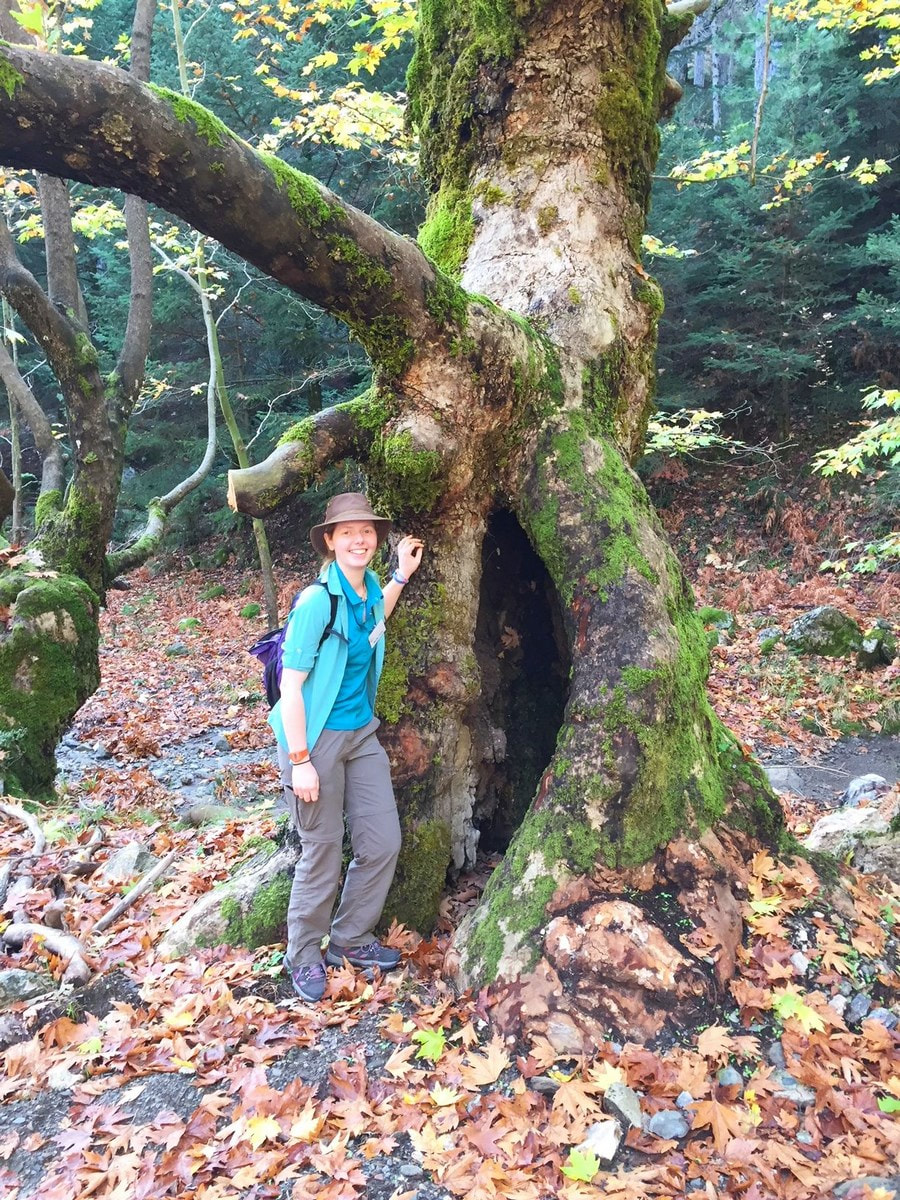
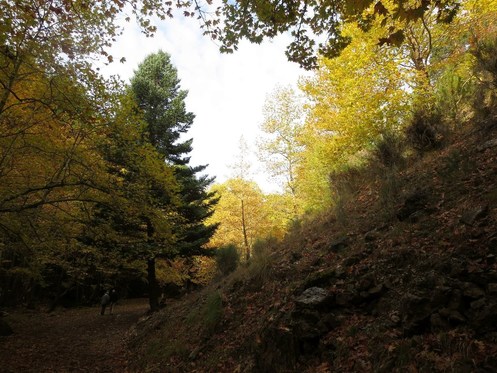
Aside from the amazing trees we saw more snowdrops, cyclamen and unusual lichen and mosses. John explained it can be deceiving when snowdrops and/or cyclamen are growing in alkaline rocks as they prefer acid conditions; however on closer inspection they have their roots in pockets of acidic leaf litter.
As well as Lobaria pulmonaria we found two mosses, a species of Thamnobryum and Isothecium myosuroides. I. myosuroides grows preferentially on angiosperms rather than on conifers because of the manner in which the former take in water, creating an ideal moist habitat, and because many trees in flowering plant families are less acidic than coniferous species of trees; it was also prolific on most of the surrounding rocks.
The autumn colour from the plane trees kept dazzling us, it was like being inside a vast golden cathedral; when the sun flooded the blue skies above we really were in my idea of heaven.
Plants noted:
Cyclamen hederifolium
Galanthus reginae-olgae
Isothecium myosuroides
Lobaria pulmonaria
Platanus orientalis
Thamnobryum sp.
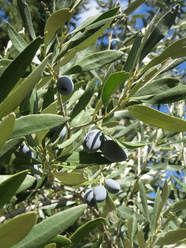
Olea europaea
As we drove towards Kardamyli Melvyn explained there was a devastating fire about ten years ago on one side of the Langada Pass – the flora is still recovering. There was a noticeable difference in the appearance of vegetation from one side of the valley to the other, hardly any autumn colour and a much more barren landscape. Many people died in the fire, they still don’t know if it was deliberately started. The woodland was natural and carefully managed by the local forestry commission.
Above 600 metres snow is common so it’s rare to see olives above this altitude; true enough, the vegetation changed and we began to see olives again on the descent. The olive harvest had started a couple of weeks earlier than usual this year, we saw people picking and pruning their trees and loading tractors with military precision.
We kept passing shrines on the roadside, sometimes these are a tribute when someone has died or they can be places of devotion for worship. John had eagle eyes and kept shouting out interesting plants en route: two species of Arbutus were spotted, A. unedo which was flowering and the Greek strawberry tree, A. andrachne, with vibrant red bark.
Phlomis fruticosa flourished more at high altitudes (1000 metres), the tree spurge Euphorbia dendroides had domes of striking green foliage; this only grows below the frost zone.
Plants noted:
Abies cephalonica
Arbutus andrachne
Arbutus unedo
Cercis siliquastrum
Clematis vitalba
Diospyros kaki
Erica arborea
Eriobotrya japonica
Euphorbia dendroides
Euphorbia rigida
Genista acanthoclada
Olea europaea
Phlomis fruticosa
Rosa canina
Rubus ulmifolius ssp. sanctus
Spartium junceum
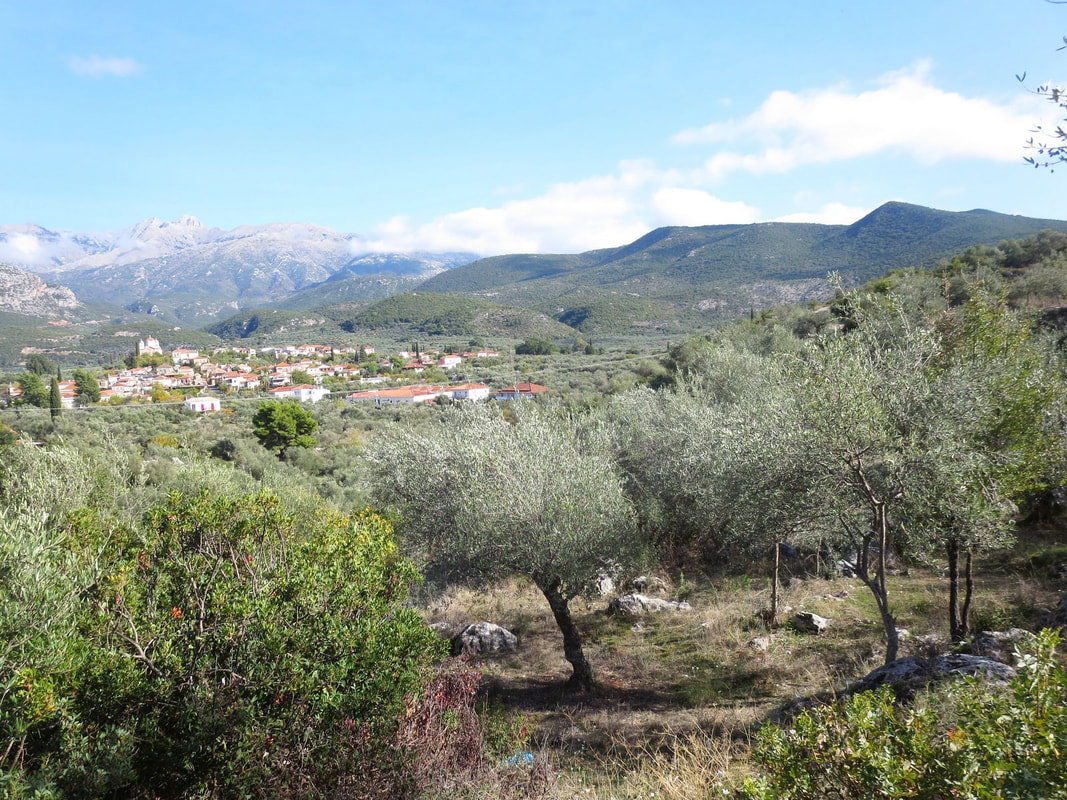
The area we stopped for our picnic was absolutely fabulous, Melvyn found this spot by chance years ago. From the roadside we made our way up a track which opened out into neglected terraced olive groves, revealing a plethora of plants.
We found a new crocus, Crocus niveus, straight away; this species is much bigger than C. boryi which was also flowering in the same area, and for once it was easy to tell two species apart.
There was plenty of time to explore, not that we needed to go far to see new plants; both crocus species were adorning the ground like a delicate sprinkling of snow, along with a cute daisy, Bellis sylvestris.
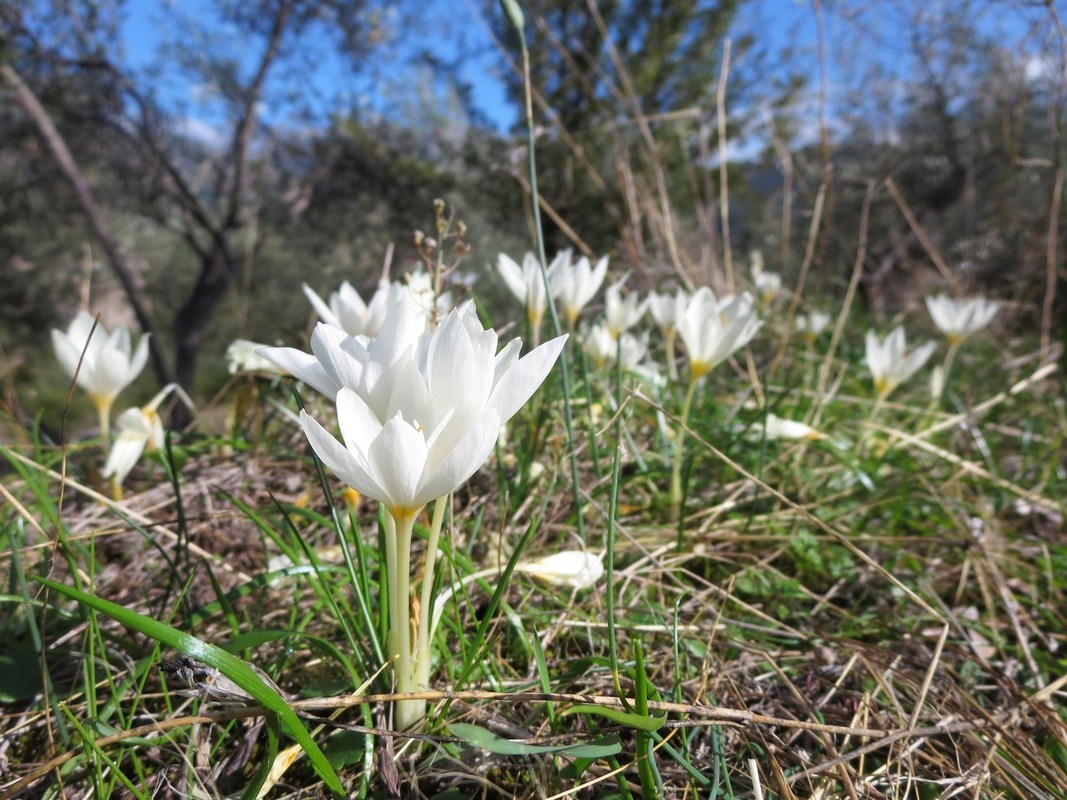
Crocus boryi
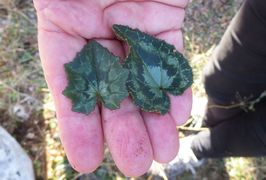
Comparing leaves of C. hederifolium and C. graecum
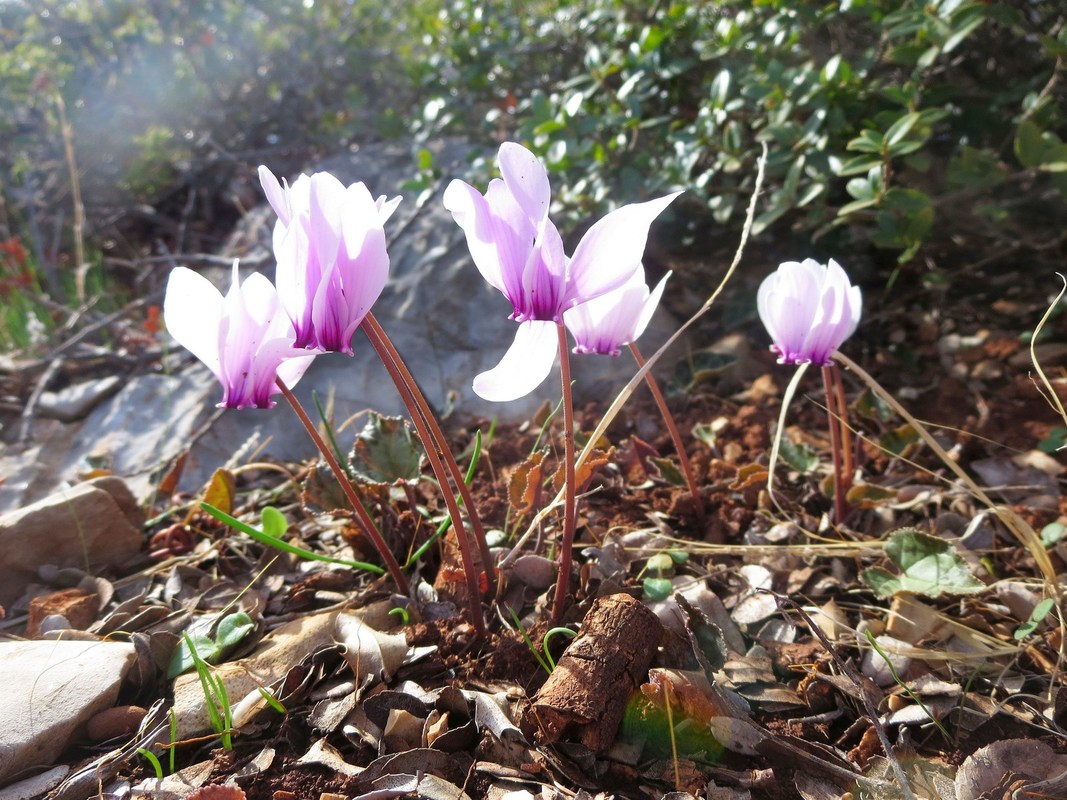
Cyclamen hederifolium

Crocus niveus
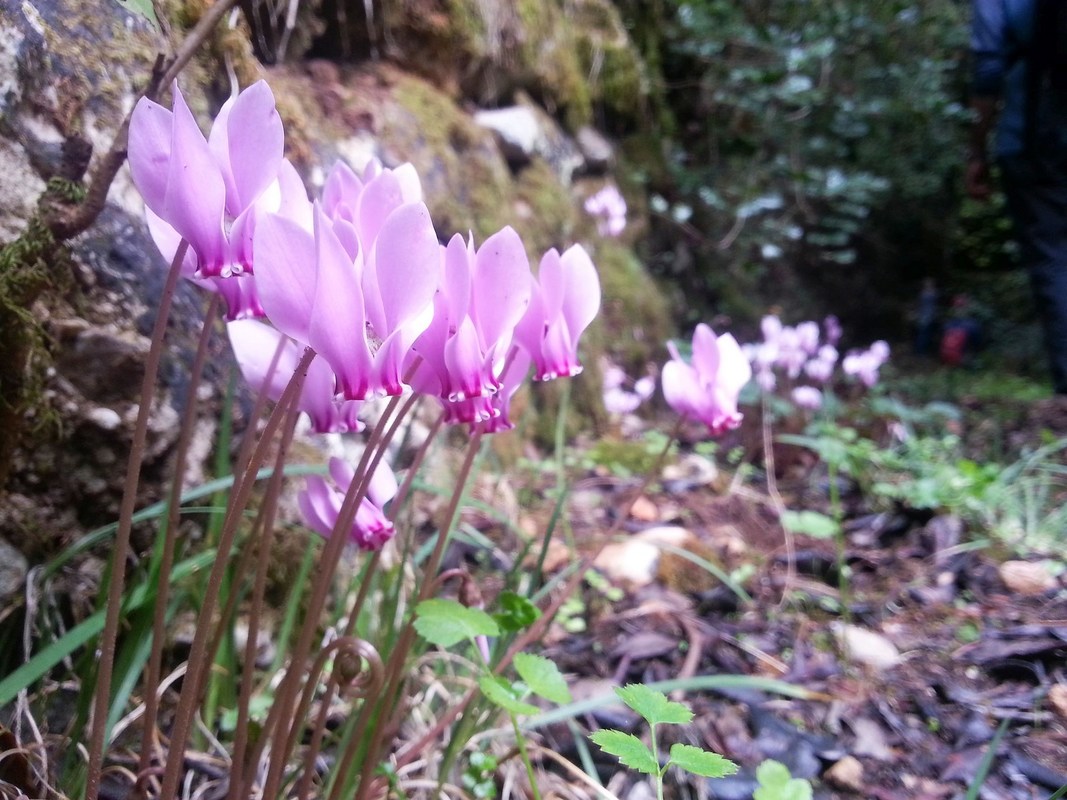
Cyclamen graecum
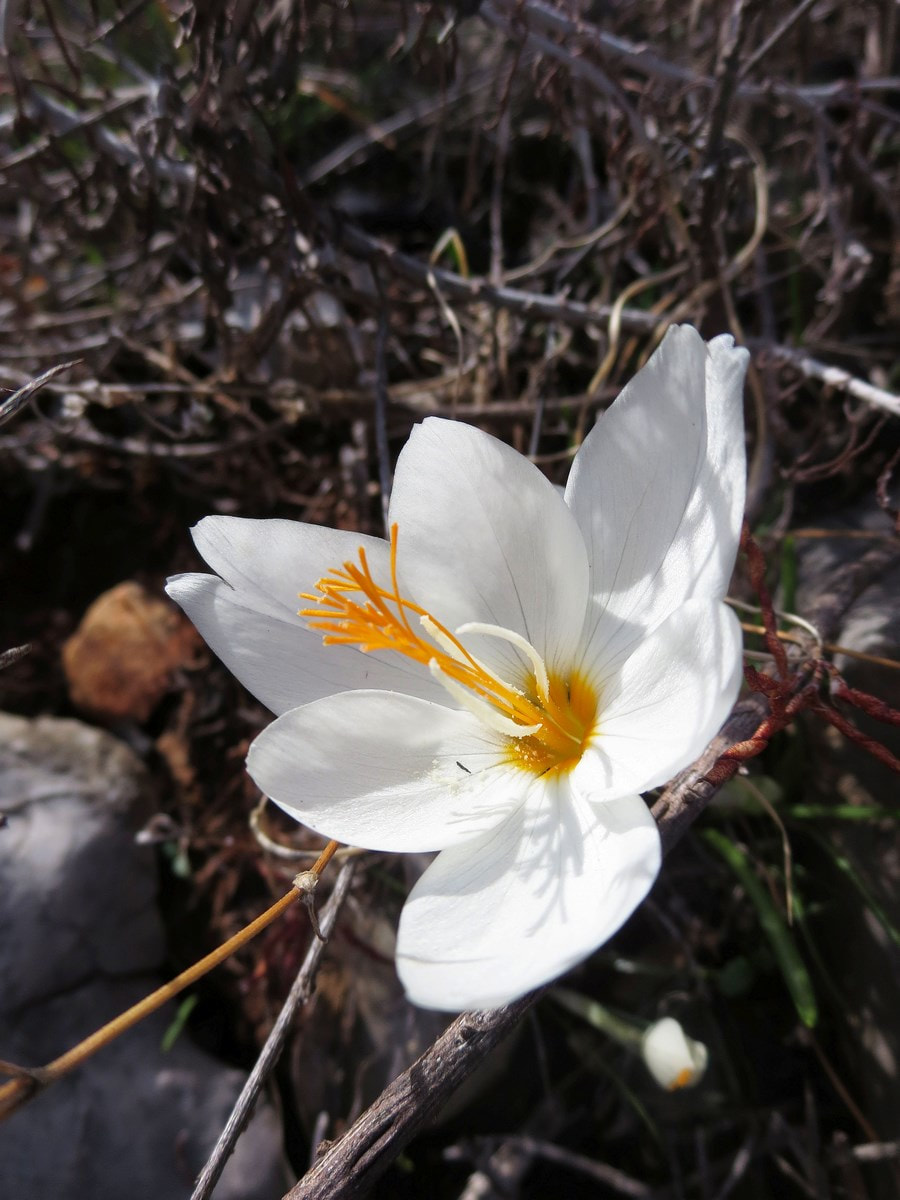
Crocus boryi
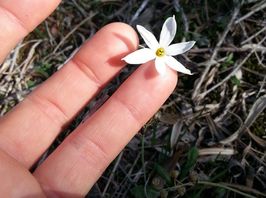
Narcissus obsoletus
The find of the day was a teeny-weeny daffodil, Narcissus obsoletus, with a seriously heady perfume. It blew me away how a plant so small could have a scent so strong. Its shallow corona and slender petals reminded me of ballerina tutus. It was growing en masse with Crocus boryi and Bellis sylvestris, I was in love with this combination of white flowering species; what struck me is how happy and content the plants looked, comfortable and thriving in their environment; this is what I as a horticulturist aim to achieve, recreating this feeling ex situ.
A new cyclamen John identified was Cyclamen hederifolium ssp. crassifolium, which is taller and more vigorous than C. hederifolium, the flowers emitting a subtle honey scent. Jo, a participant on the trip who has a National Collection of cyclamen, then explained the difference between C. hederifolium and C. graecum because we found clumps of both species growing side by side: The flowers are identical and equally as variable so the leaves are the main feature for identification; C. graecum leaves have smooth edges whereas C. hederifolium leaves have toothed margins, looking more like ivy foliage. The corms are different as well but it’s not advisable to go digging up cyclamen just to determine the species!
The growing situation aids identification too, C. graecum prefers more sun-baked areas with terra rossa soil, C. hederifolium is found more typically in moist woodland areas. I found loads of C. hederifolium in a ditch, massive clumps compared to those we had seen previously. Seeing cyclamen thriving where they are meant to be is one of the main reasons for coming on this trip, hence I was like a kid in a sweet shop; I spent a few happy moments gazing at them and absorbing the unique surroundings before we set off again for Kardamyli.
Plants noted:
Bellis sylvestris
Centaurea sp.
Coridothymus capitatus
Crocus boryi
Crocus niveus
Cyclamen graecum
Cyclamen hederifolium
Cyclamen hederifolium ssp. crassifolium
Eryngium campestre
Narcissus obsoletus
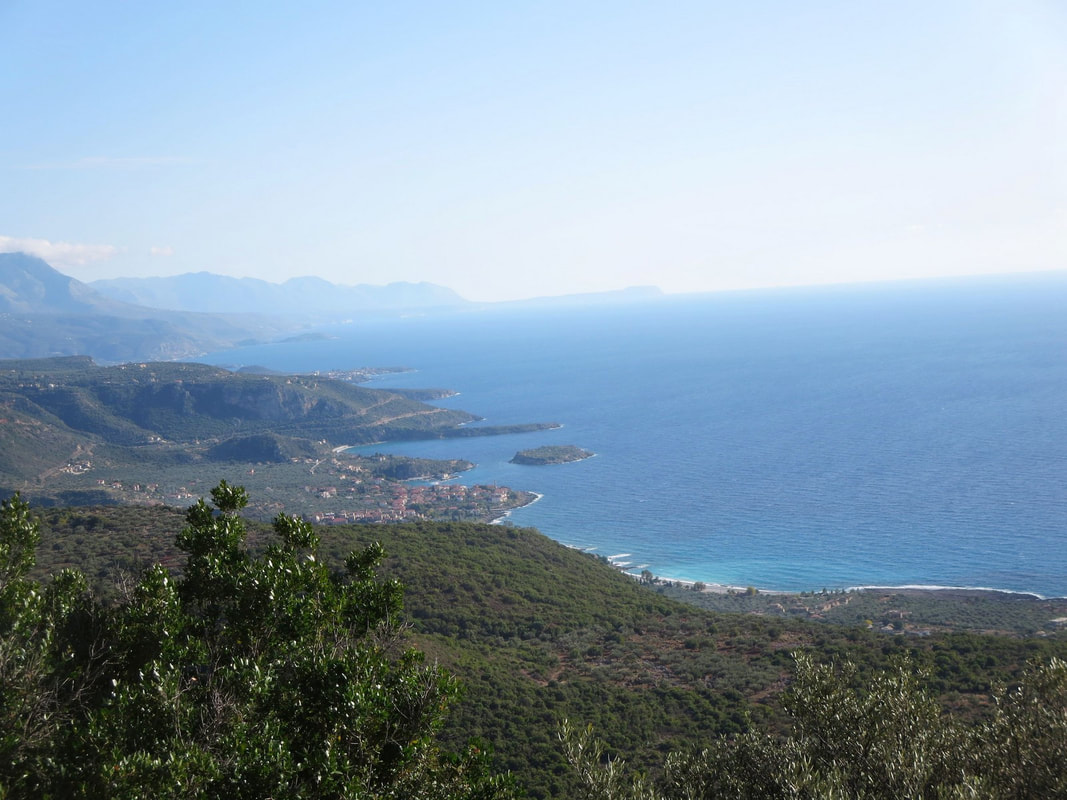
Kardamili
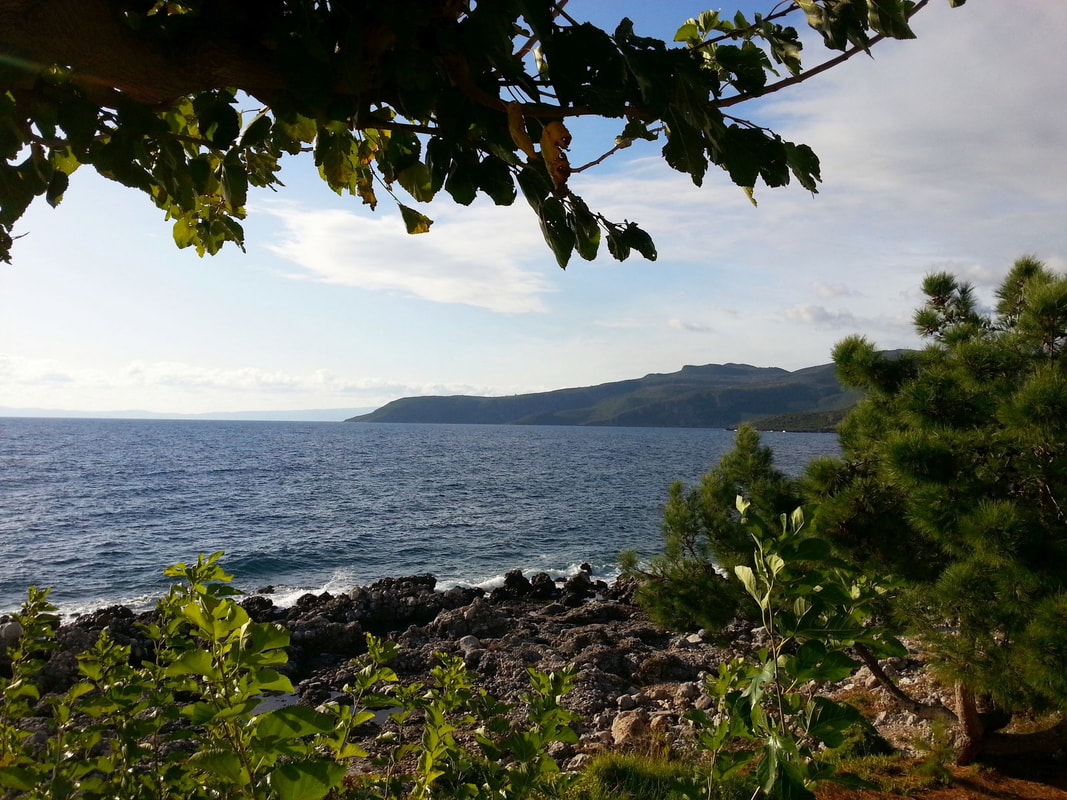
Ilona and I were lucky with the view from our hotel window.
We arrived at Hotel Anniska, our home for the next three nights, and were greeted wonderfully by our hosts. It is a family run hotel and as we were staying out of season our group were the only guests. This was my favourite location by far, right on the seafront; our rooms were small apartments equipped with an open plan living room and kitchen, bathroom and bedroom. Ours had two balconies overlooking the sea, Ilona and I couldn’t believe it – we felt like throwing a party.
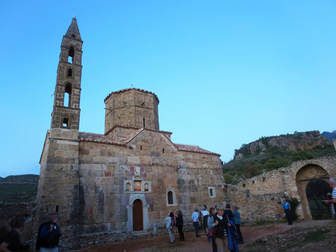
Church of Agios Spyridon
We dropped our bags then had a guided walk around Kardamyli by Katerina Georgi, whose garden we would be visiting the next day. It’s a picturesque town, the most rural Greek village so far. It’s a bit of a ghost town at this time of year, even though we were the only tourists the locals were still very welcoming. Katerina showed us popular places to eat and drink, and the old areas including the church of Agios Spyridon. The architecture looked even more beautiful in the fading sunlight, including the multi-storey bell tower, post-Byzantine style of Ionian art and at the entrance a two headed eagle, the Byzantine emblem.
I think Katerina was astonished at how long the walk took, as we kept stopping to look at plants….we arrived back at the hotel in darkness. The wild caper, Capparis spinosa, sprawled over rocks on the harbourside and holy basil, Ocimum tenuiflorum, grew in pots outside people’s front doors. Persicaria capitata was plastered over a wall, its habit reminding me of of ivy-leaved toadflax (Cymbalaria muralis) which we see in the UK. We saw a lady feeding five cats, they were in immaculate condition. In all the places we visited I barely saw any mangy cats or dogs, the majority were clearly well cared for.
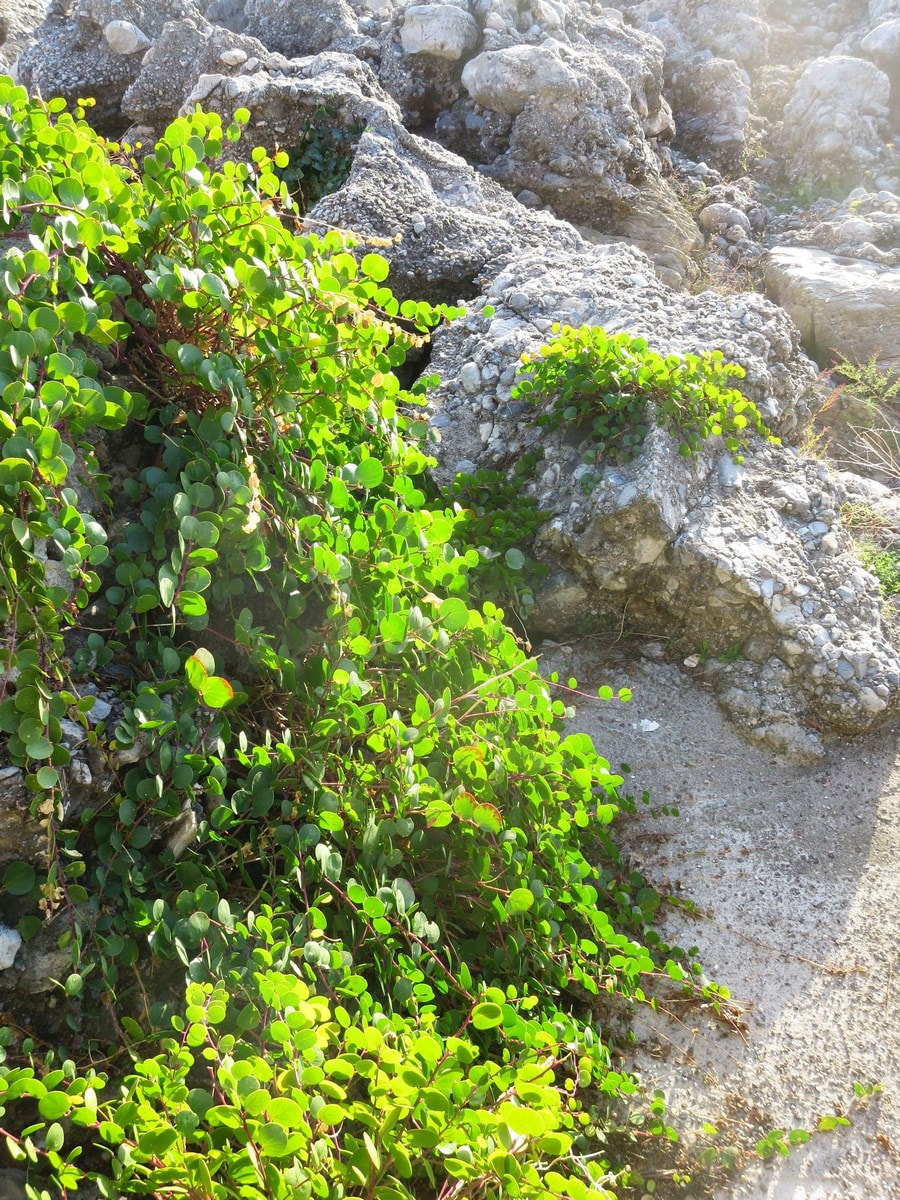
Capparis spinosa
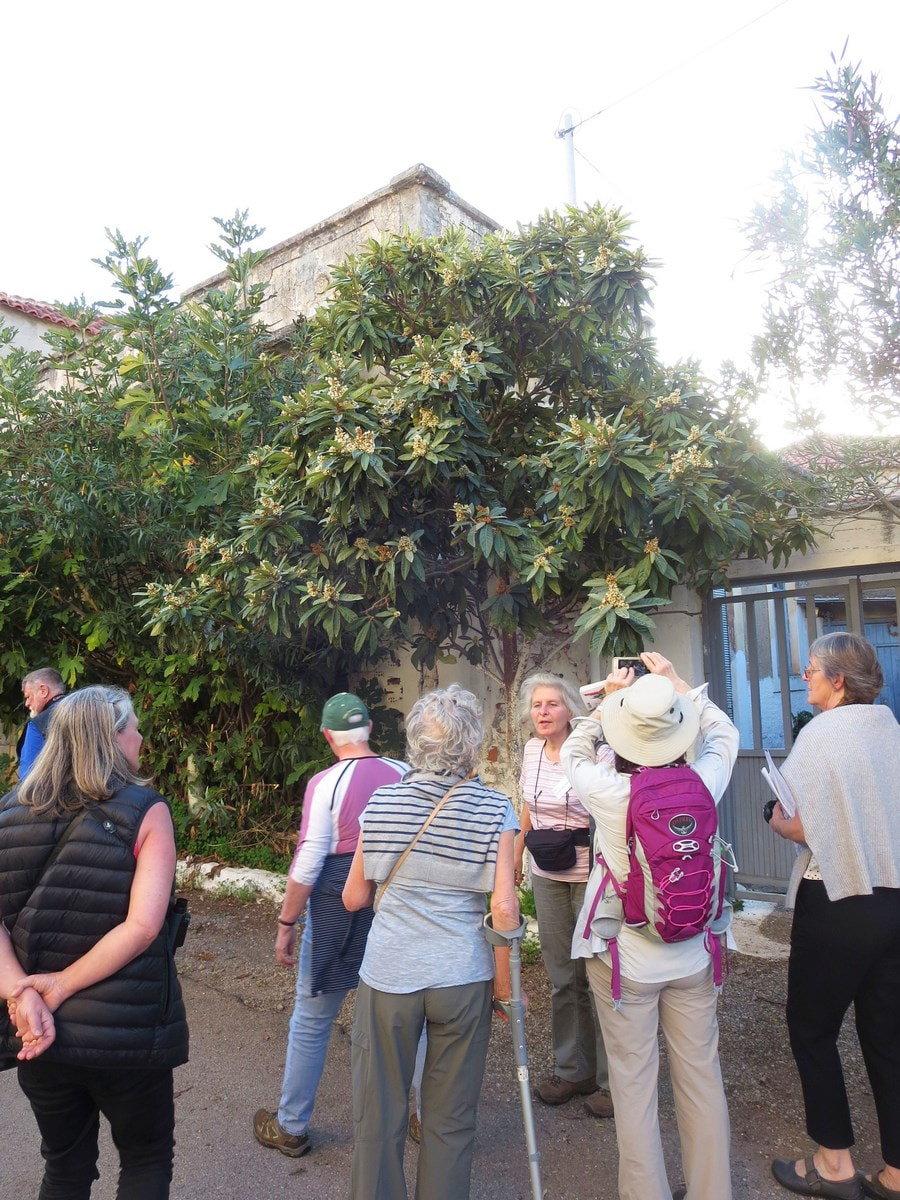
Members looking at Eriobotrya japonica
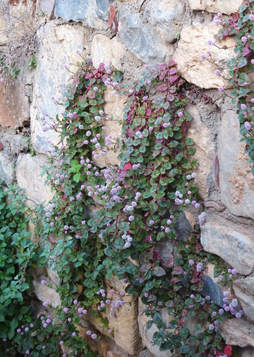
Persocaria capitata
Plants noted:
Brugmansia sp.
Capparis spinosa
Ficus benjamina
Melia azedarach
Ocimum tenuiflorum
Persicaria capitata
We had dinner in town, it had the best food so far; traditional Greek salad with exquisite feta cheese and meat and coffee to end the meal. I also had my first taste of Ouzo, a dry anise-flavoured aperitif; it can be drunk neat or diluted with water, I didn’t particularly want a hangover the next day so I watered mine down…
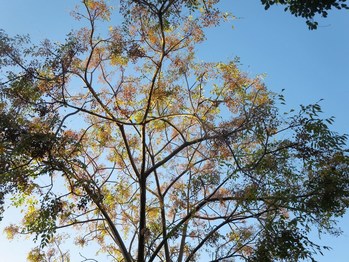
Melia azedarach
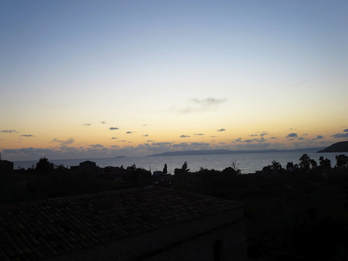
Kardamili sunset
Sunday 12 November
Weather: Sunny, 27 ℃
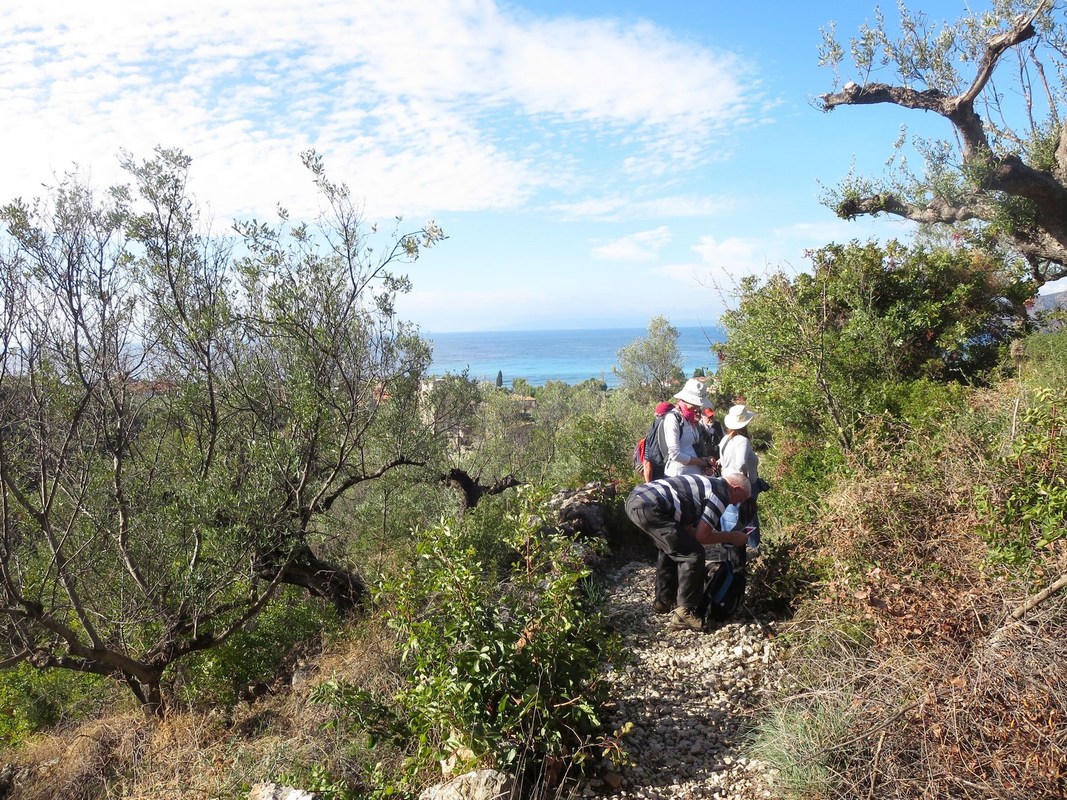
Members on ascent
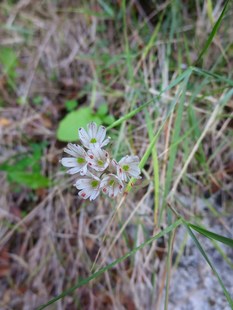
Allium callimischon
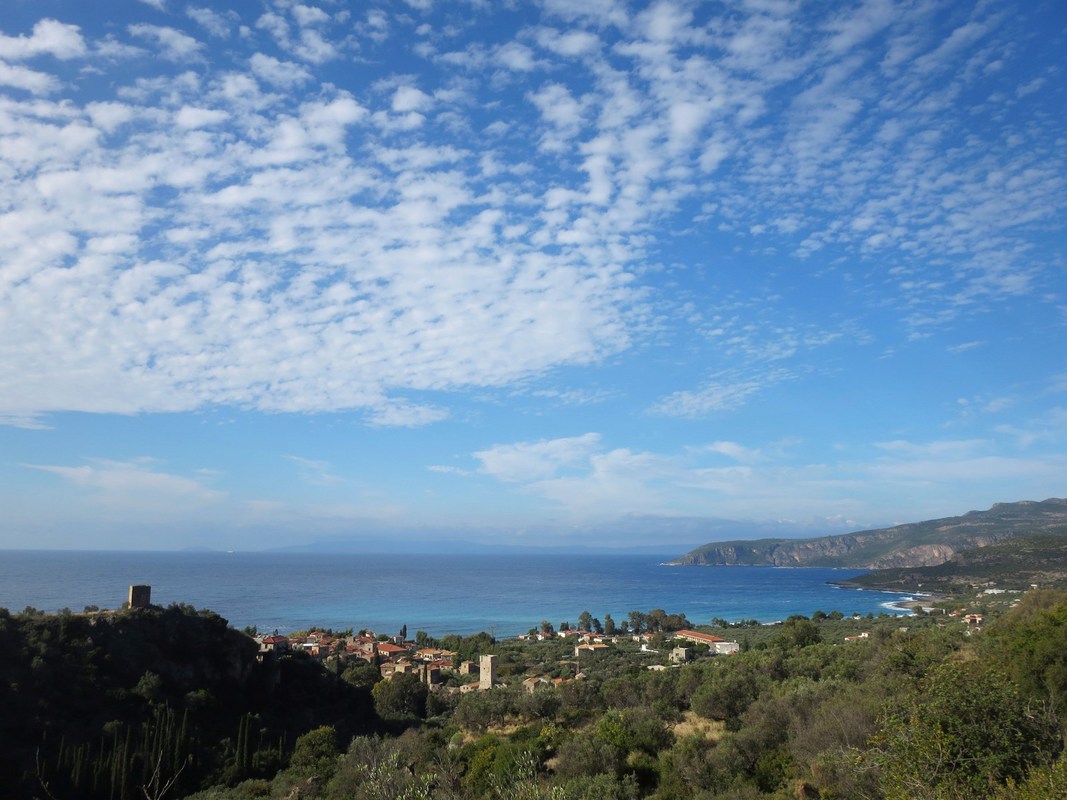
View over Kardamili
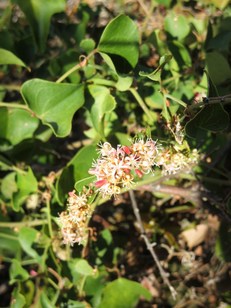
Smilax aspera flowers
We visited Katerina’s garden in the morning, most of the group chose to walk up the old donkey path to Agia Sofia, the village above Kardamyli. It was a good slog, the sun was blazingly warm and the paths were narrow. It was a stunning climb, the Viros Gorge was on one side of us, a deep gorge starting from the peak of Profitis Ilias (Taygetos summit) and ending in the sea of Kardamyli Bay.
Plants we hadn’t seen before included our first allium of the trip, Allium callimischon, with papery white flowers. Smilax aspera was also flowering, a plant I had noticed before but not in flower. Lithodora zahnii was draped over rocks, a similar appearance to prostrate rosemary; it is endemic to this coastal area of Taygetos.
We spotted the leaves of one iris and two orchids, Orchis italica caused some debate as a few people thought it was a Dactylorhiza, however John explained it has a flatter rosette – Dactylorhiza species are more upright.

Asplenium ceterach
Plants noted:
Allium callimischon
Asplenium ceterach
Crocus boryi
Cyclamen graecum
Iris unguicularis
Lithodora zahnii
Ophrys sp.
Orchis italica
Quercus coccifera
Smilax aspera
We arrived at Katerina’s garden a tad hot and sweaty but after cool drinks and cookies we felt more human again. We were free to wander at our leisure, with Katerina around to answer questions. Heather gave us information about the garden and a plant list prior to visiting which was helpful.
Katerina is an interior designer as well as a garden designer, the inside of her house was as beautiful as the garden. I was extremely envious of her home, with views towards the mountains in one direction and the bay of Messinia in the other. The whole area had a serene feel to it, I liked the way she had designed the hard landscaping to merge with the planting; the terracing and steps gave straight formal lines while the plants made contrasting mounds and spheres softening the overall design. A series of amphitheatrical steps lead to the natural pool, looking inviting on such a hot day. While resembling a conventional pool, it is filtered naturally without the use of chemicals and probably one of the first in Greece.

The old threshing floor
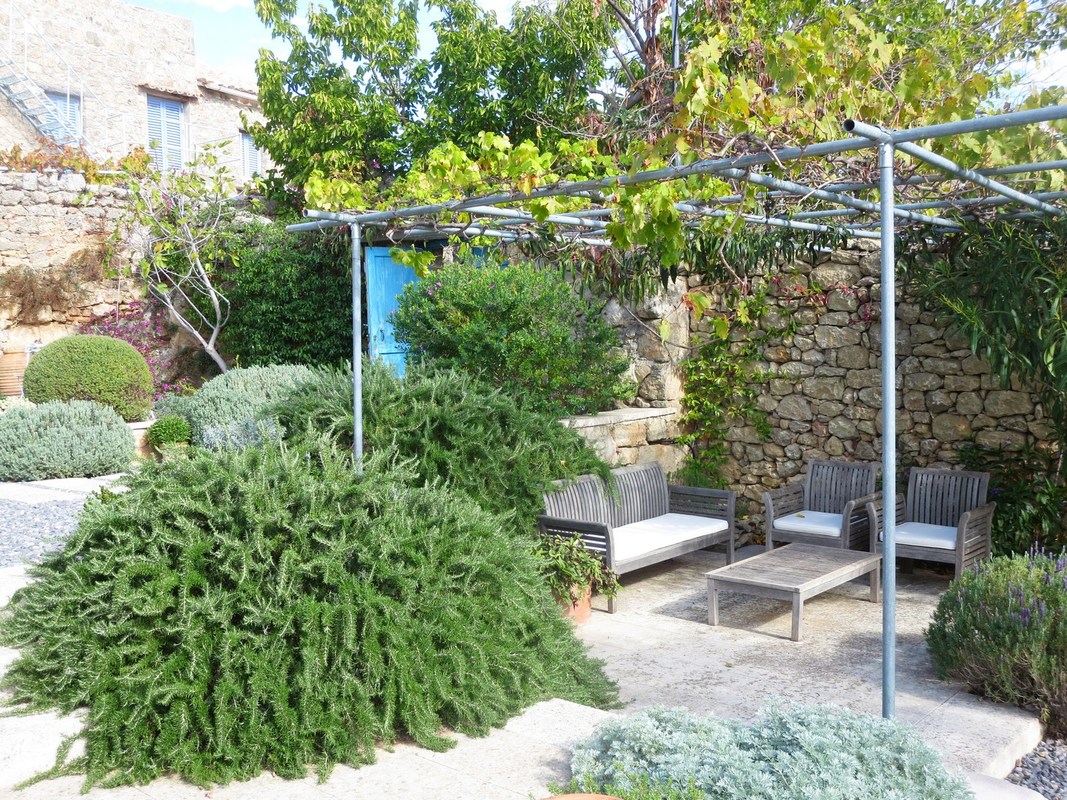
Seating area
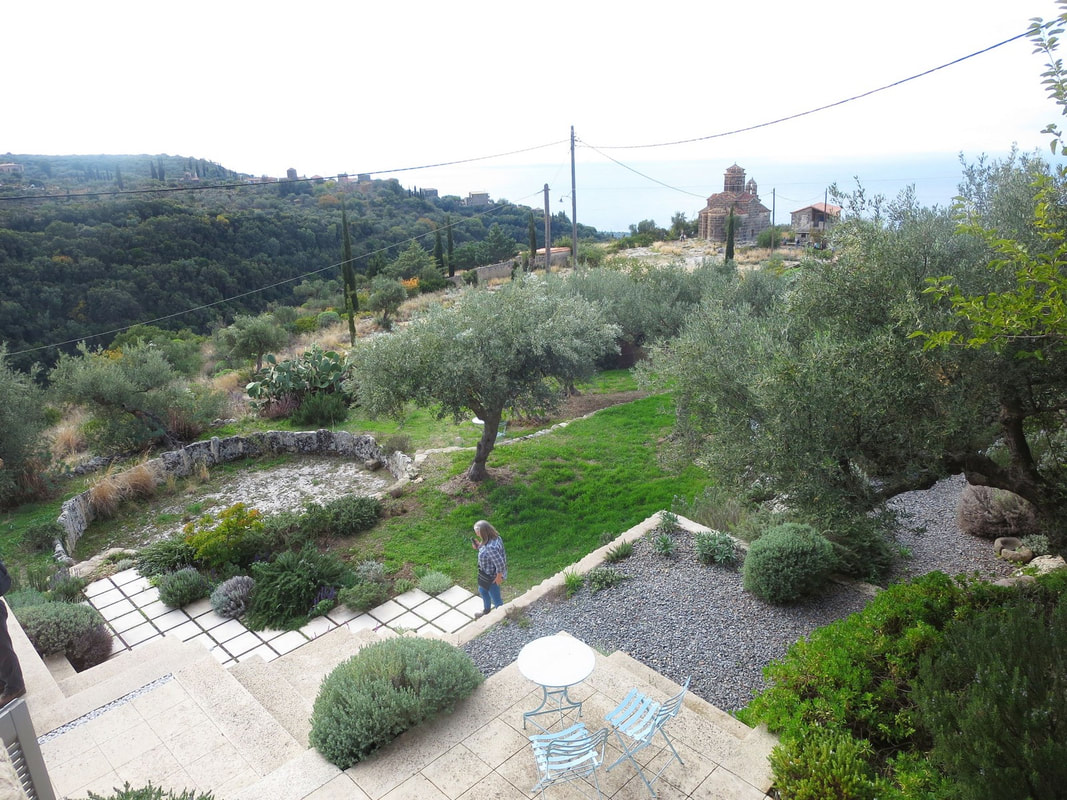
Katerina’s garden
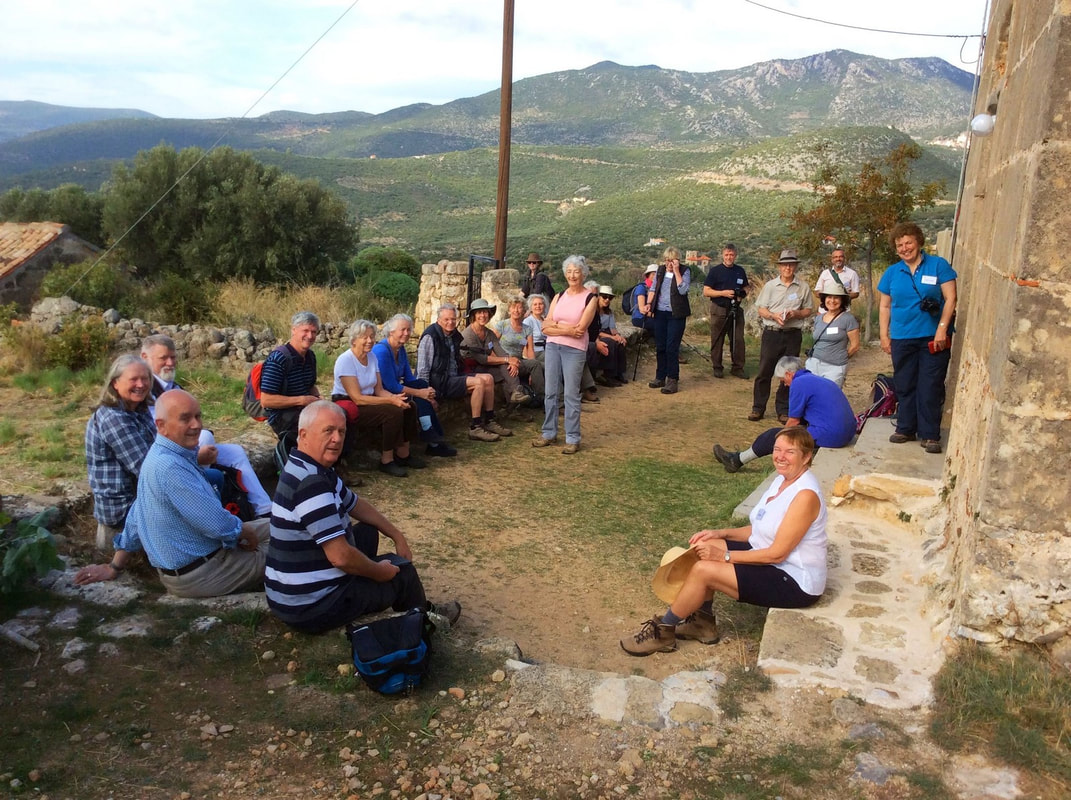
Group outside the church
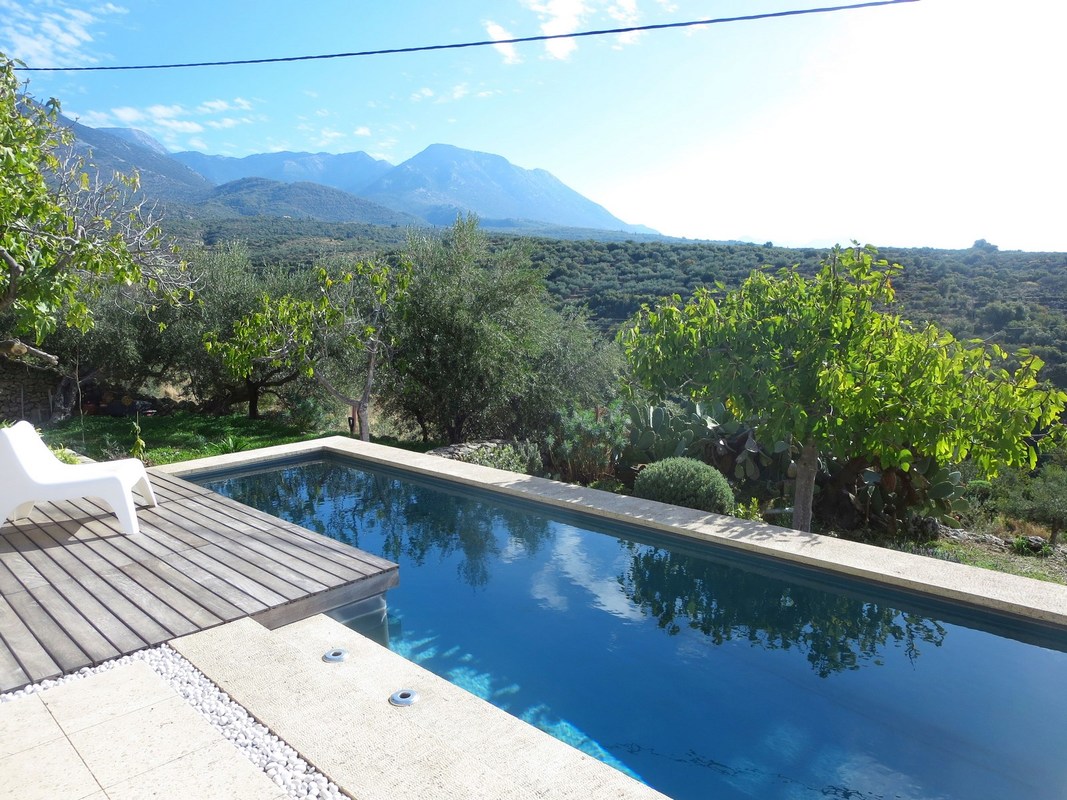
Natural swimming pool
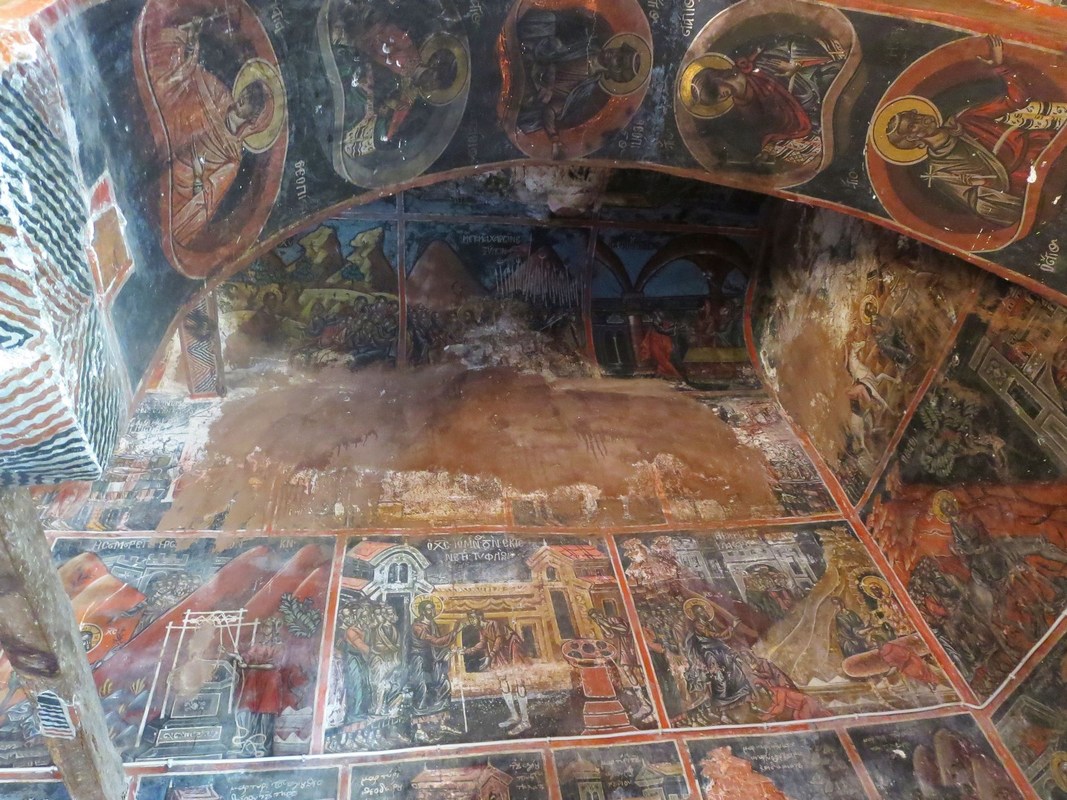
Inside Agia Sofia church
The lower terrace had an old threshing floor, aka aloni, hewn out of solid bedrock, with bulbs growing inside. The planting palette of Mediterranean species has been chosen for year-round interest and the ability to withstand drought. The emphasis is on structural planting, and key plants are repeated throughout the garden to give continuity and cohesion.
Before we left we walked to the beautifully restored little chapel of Agia Sofia which Katerina had arranged to be opened specially for us.
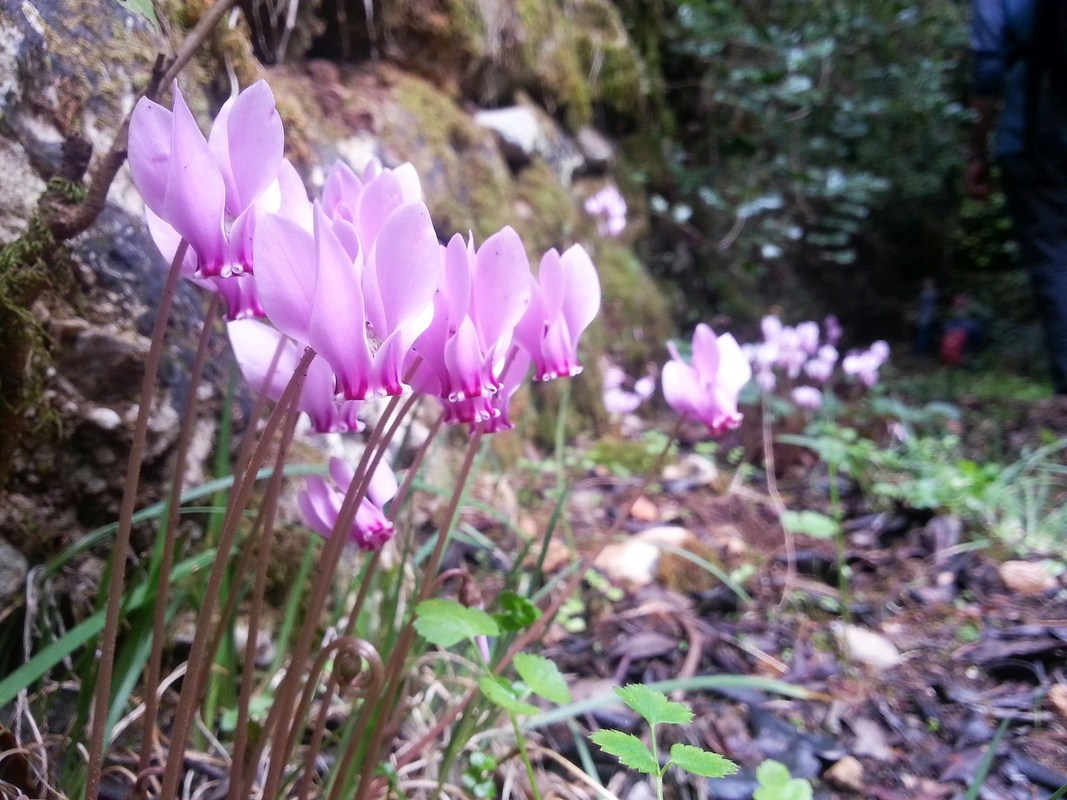
Cyclamen hederifolium
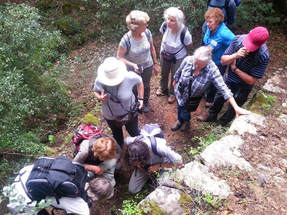
Members looking at Cyclamen hederifolium
Plants noted:
Artemisia ‘Powis Castle’
Carissa macrocarpa
Lavandula dentata
Origanum dictamnus
Pittosporum tobira
Plumbago auriculata
Thymus serpyllum
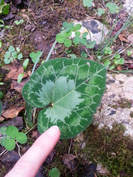
Big cyclamen graecum leaf
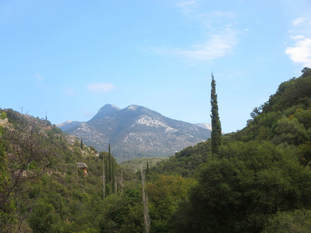
View from Viros gorge
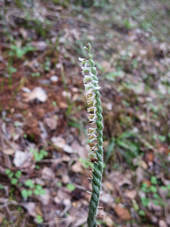
Spiranthes spiralis
Two local MPG members Ben and Julia Martin, joined us for the day and Julia led us back down to Kardamyli a different route to the way we came up with John. It was a long walk which only a few of us attempted. The habitat was different when we crossed the gorge, we saw plenty of Cyclamen hederifolium and the first flowering orchid of the trip, Spiranthes spiralis. There were only a couple of flower spikes intact but even so it was a thrilling find.
Plants noted:
Cyclamen hederifolium
Narcissus obsoletus
Polypodium australe
Spiranthes spiralis
A delicious late lunch was waiting for us in a harbourside restaurant before we visited the garden of the late Sir Patrick ‘Paddy’ Leigh Fermor, the well known British traveller and author, and his wife Joan – he wrote, she gardened. It was a 30-minute walk for those of us who hadn’t had enough exercise, most people went by coach.
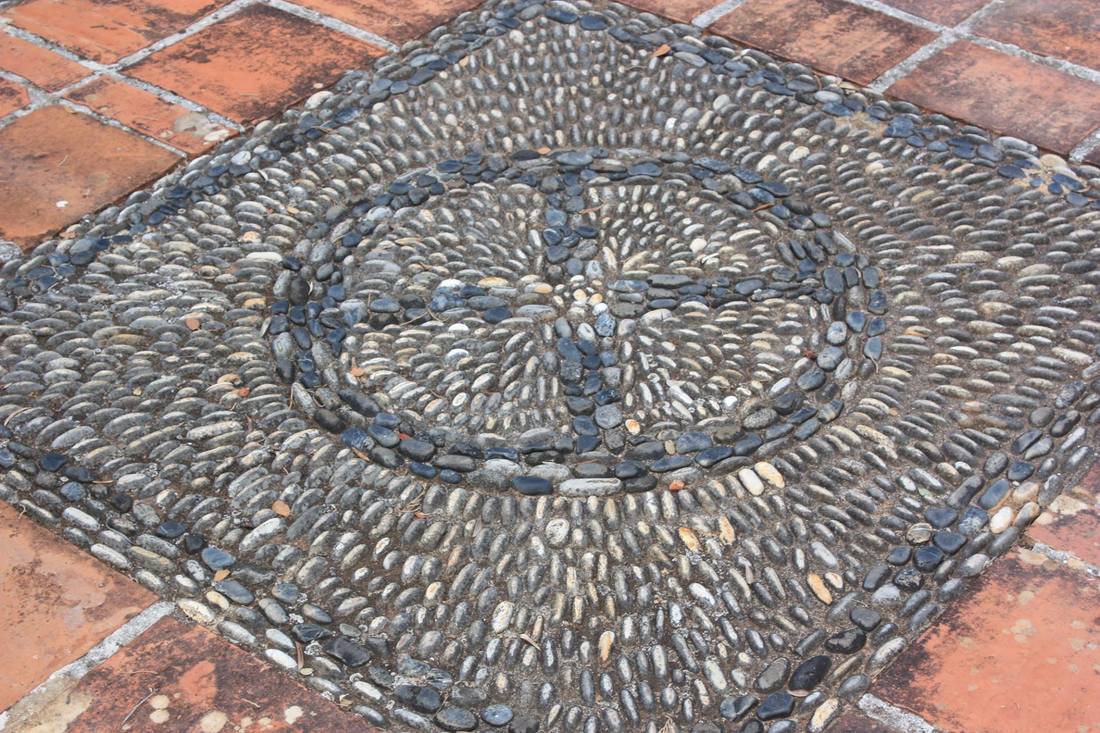
Krokalia mosaic SJ
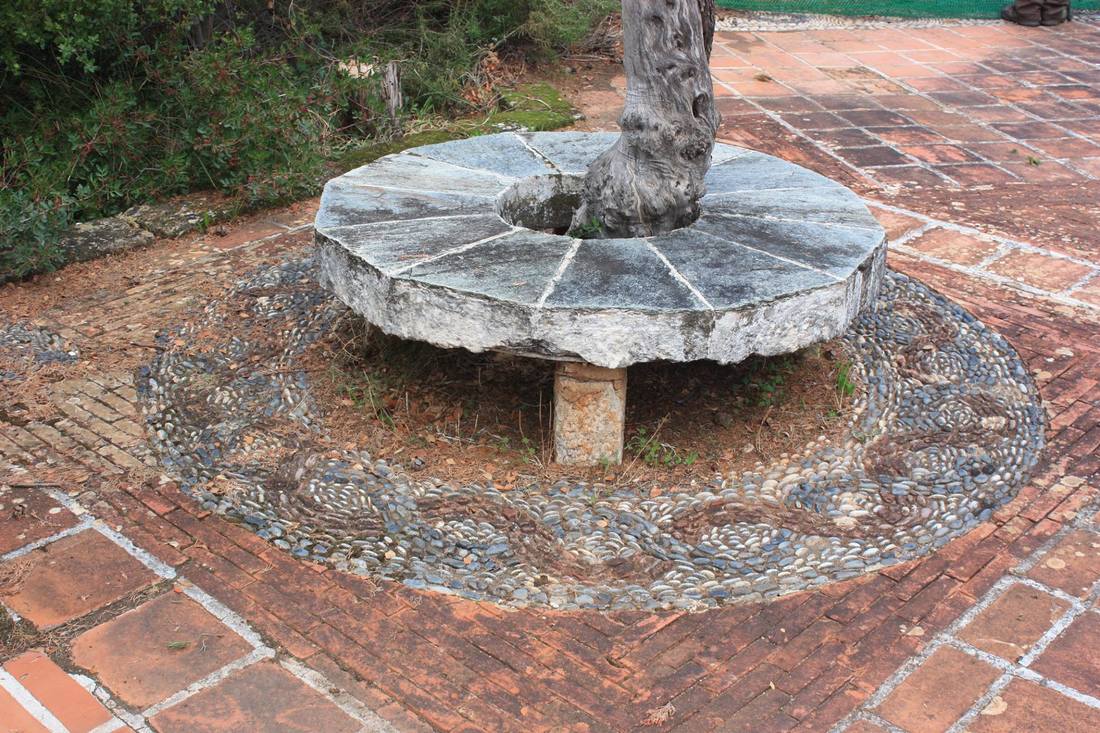
Olive tree seat SJ

Photographing Crocus goulimyi
Katerina led the visit as she is involved with others in the two-acre garden’s future. A restoration project funded by the Stavros Niarchos Foundation is being overseen by the Benaki Museum with the aim of creating a “writers’ retreat”. There is inevitable interesting debate how best to renovate the garden which has become neglected and overgrown since Sir Patrick’s death in 2011. However, the attractive stonework structure and pebble mosaics (krokalia) remain just as Joan had designed. We were privileged to be allowed to visit since the site is currently closed to the public while building work continues.
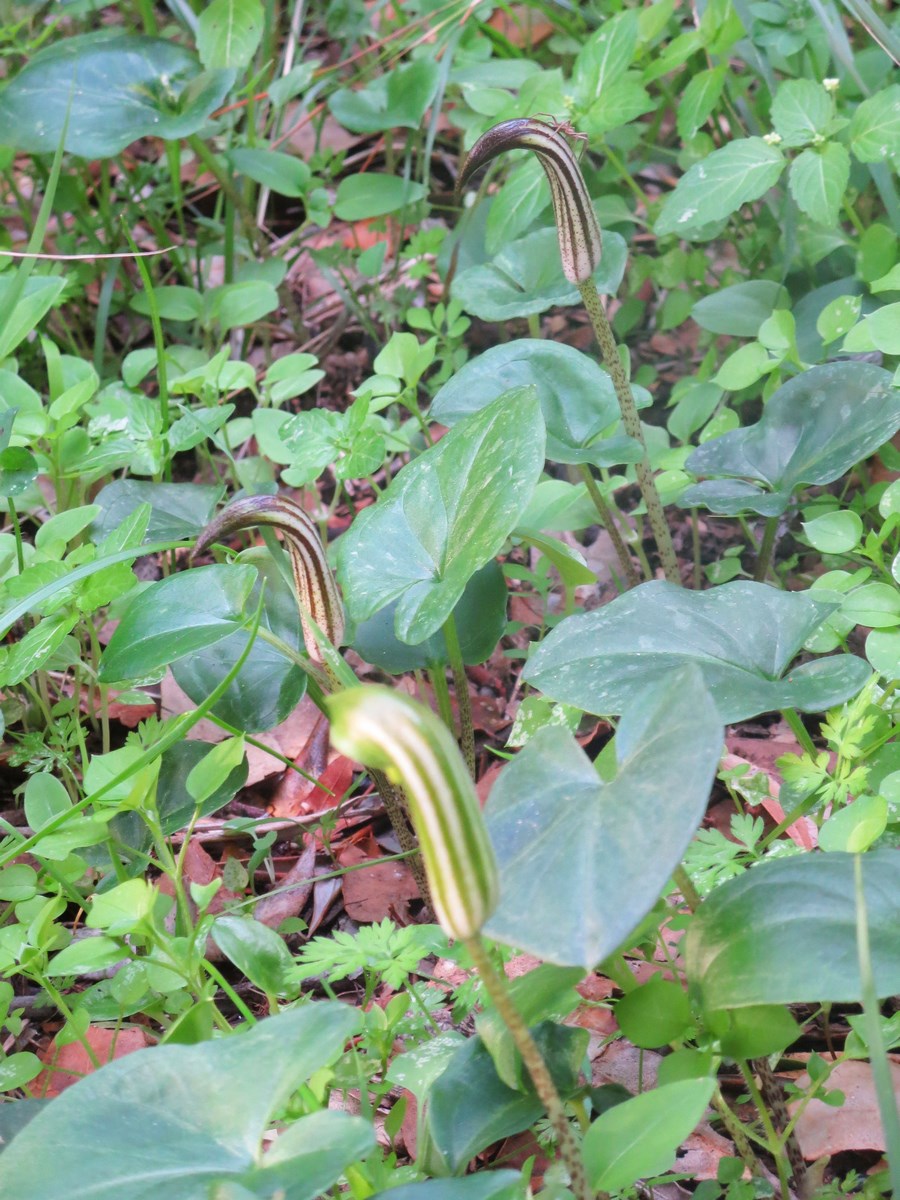
Arisarum vulgare
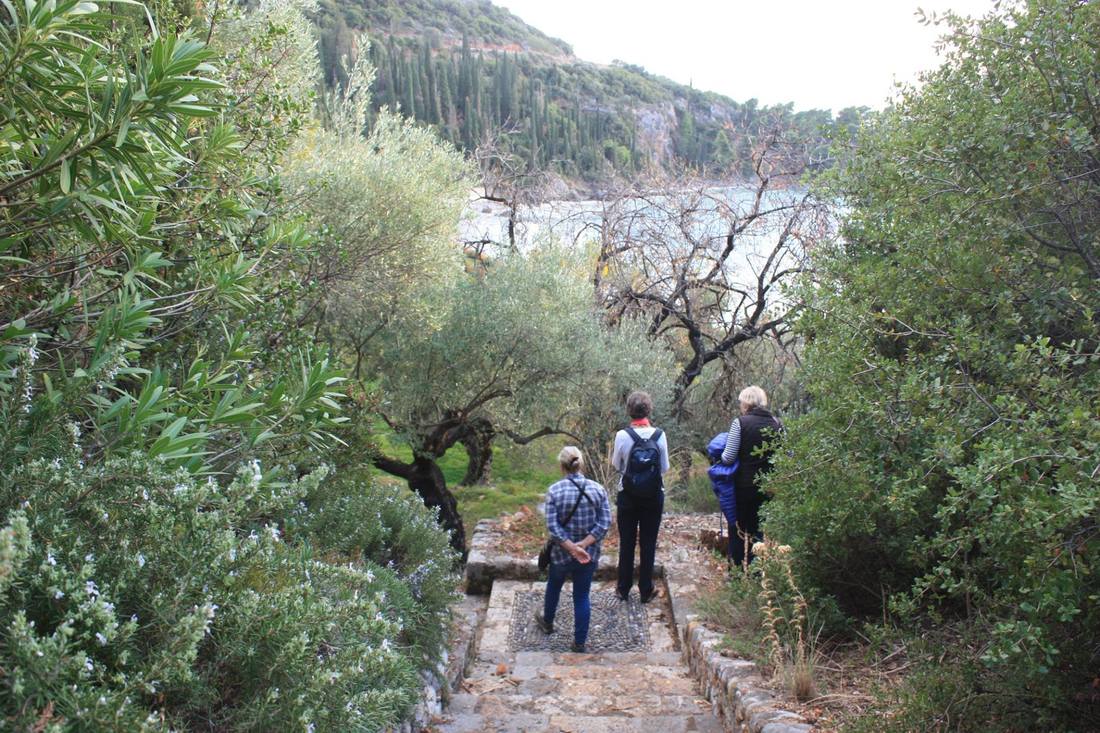
Overlooking Kalamitsi beach SJ
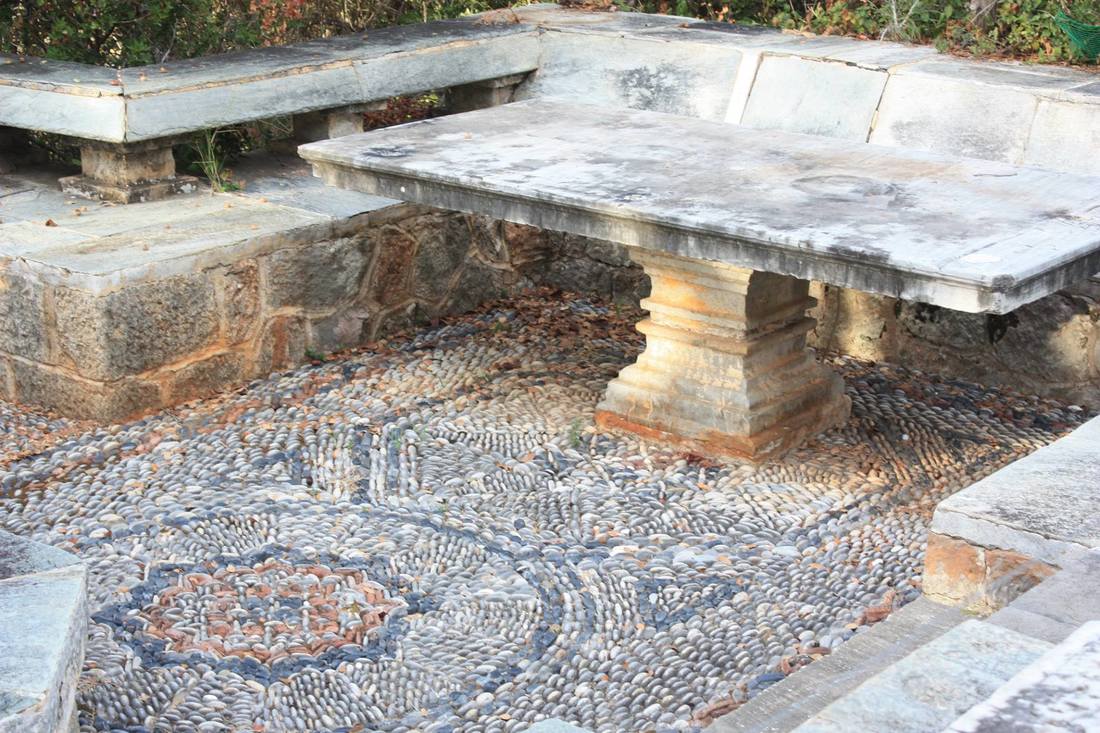
Dining area SJ

Overlooking the private beach SJ
The Leigh Fermors had picked an unbelievably fine site overlooking the sea with steps leading down to a private beach. To one side of the house is an open terraced area with the lower terrace an olive grove. We found a new crocus, Crocus goulimyi, with lilac flowers growing en masse in the lawn area, along with little Freesia sp. – they weren’t flowering, it was a carpet of green foliage. An interesting Arisarum vulgare grew in the olive area, the only one we saw on the trip.
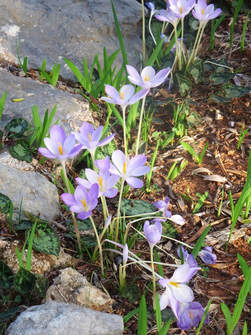
Crocus goulimyi
Plants noted:
Arisarum vulgare
Crocus goulimyi
Freesia sp.
Ptilostemon chamaepeuce
We had dinner in the nearby town of Agios Nikolaos, in another harbourside restaurant. I pretty much ate my own body weight in pork, the meat sweats were upon me!
Monday 13 November
Weather: Cloudy with sunny spells, 20 ℃
Overnight the rains came, by early morning a tremendous thunderstorm had started, the noise of the rain hammering down on the roofs and waves crashing ferociously woke me at 5am. There was nothing to do but watch the magnificent spectacle. Lightning lit up the whole sky as white as the waves in the water, with booming thunder to match. It was epic! I was glad to have witnessed the other side of the Mediterranean climate and not just the stereotypical sunshine; if it weren’t for the rains there would be no flora.
Fortunately the storm cleared during breakfast, perfect timing so we could enjoy the day ahead. More local MPG members joined us for the day, Tracy Kyriakeas, Denise Pawlett and Ben and Julia again; when planning these trips Heather tries to ensure we meet up with local members, to make it more social for all involved.
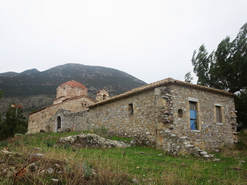
We headed south, our first stop was near Platsa to see autumn-flowering Anemone coronaria. Even though it wasn’t raining it was still cloudy and quite windy – the crocuses especially were tightly closed as if saying “Don’t disturb me.” There were a few anemones scattered around with mauve flowers and distinctive leaves.
We walked down the pathway further and saw the church of Agios Nikolaos and a dramatic amphitheatre, nestled unexpectedly in the side of the cliffs. I stood in the middle and spoke, the echo was unreal – just as if I was wearing a microphone. It’s only been built in the last few years, Katerina isn’t sure how much it is used as it’s well off the beaten track.
Plants noted:
Allium callimischon
Anemone coronaria
Crocus boryi
Pyrus spinosa
Quercus macrolepis
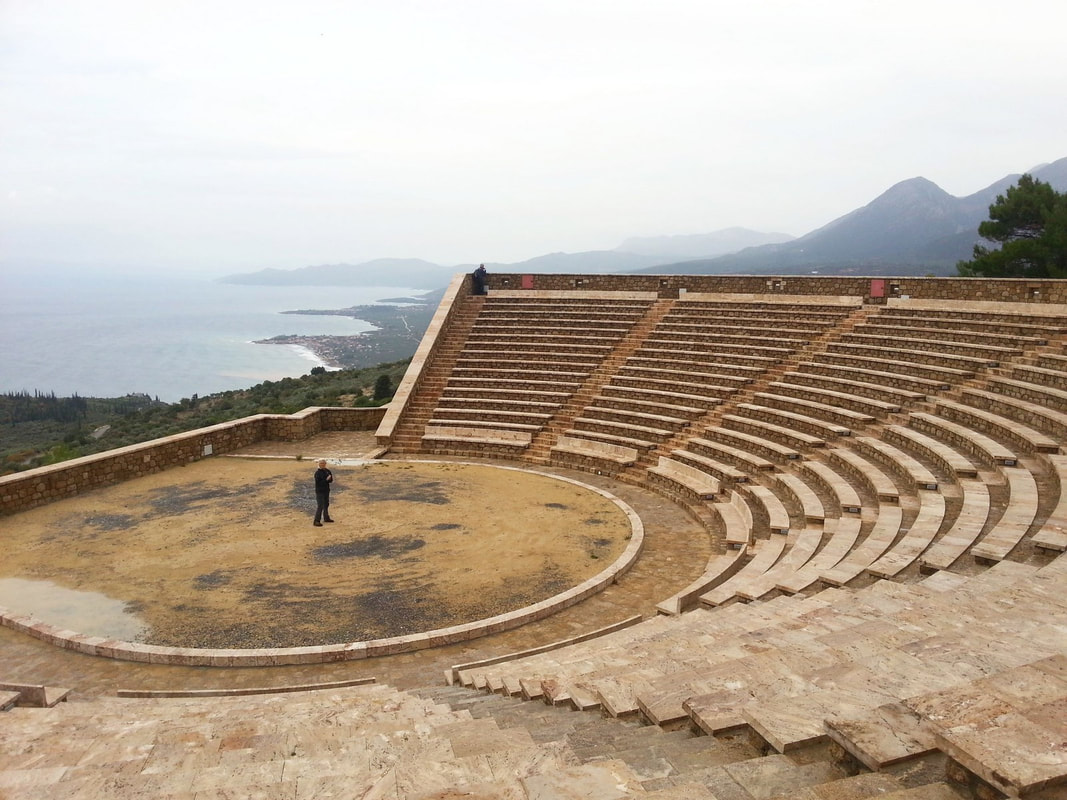
New amphitheatre
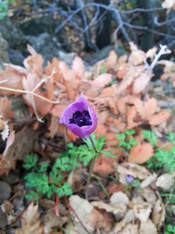
Anemone coronaria

Quercus macrolepis
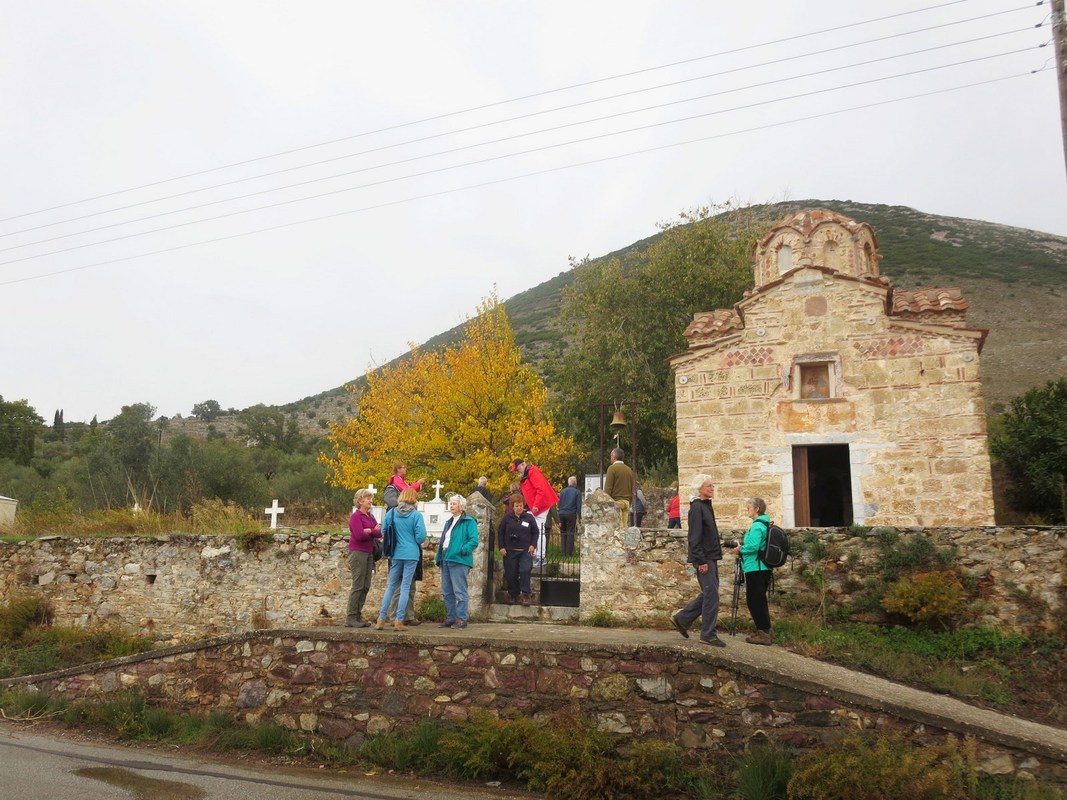
We stopped briefly to see a quaint church, the smallest so far – the church of the Metamorphosis. It had a graveyard behind it with white marble tombstones, harshly gleaming in the dull grey atmosphere.
We paused beside the road to see an unusual habitat of a north-facing cliff; on first glance it seemed just a bare rock face, however some members were prepared and whipped out binoculars. Once our eyes adjusted we saw many species, including ferns, campanulas, euphorbias and several good clumps of snowdrops. An exciting sight was Lilium candidum, high up in the cliffs displaying distinctive seed pods. Euphorbia acanthothamnos, aka Greek spiny spurge, was a new euphorbia with sharp prickles – almost like barbed wire. John said this site is a blaze of colour in spring with yellow phlomis and euphorbias flowering.
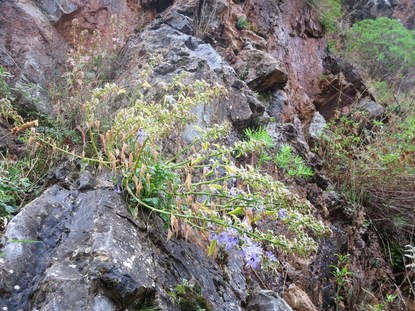
Campanula versicolor
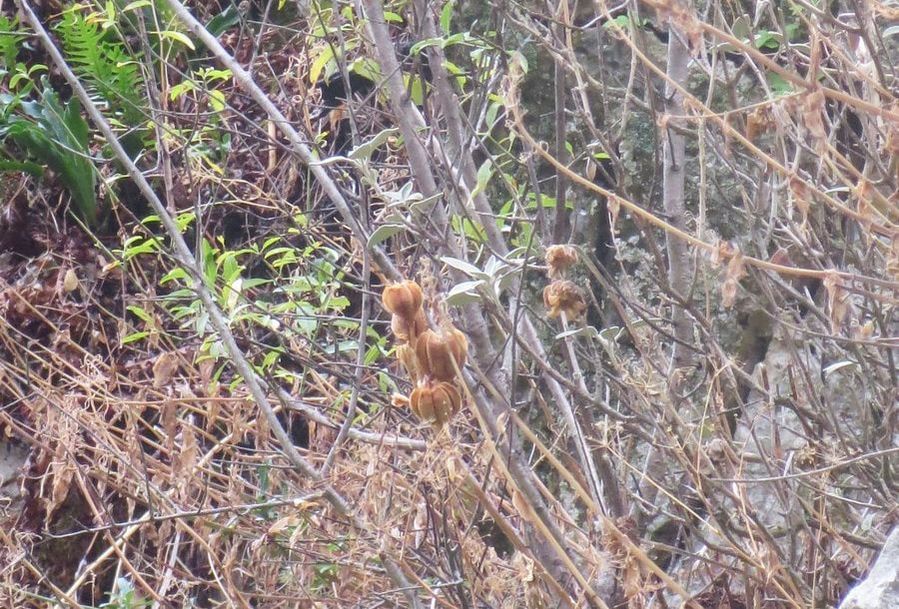
Lilium candidum
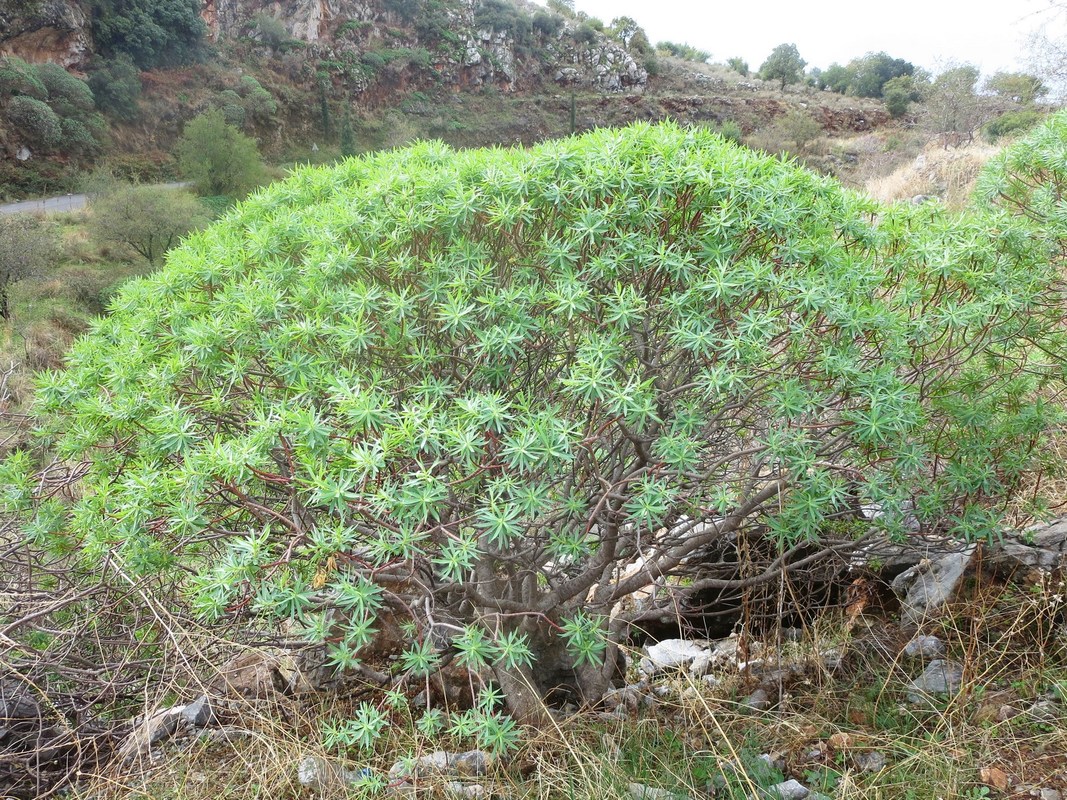
Euphorbia dendroides
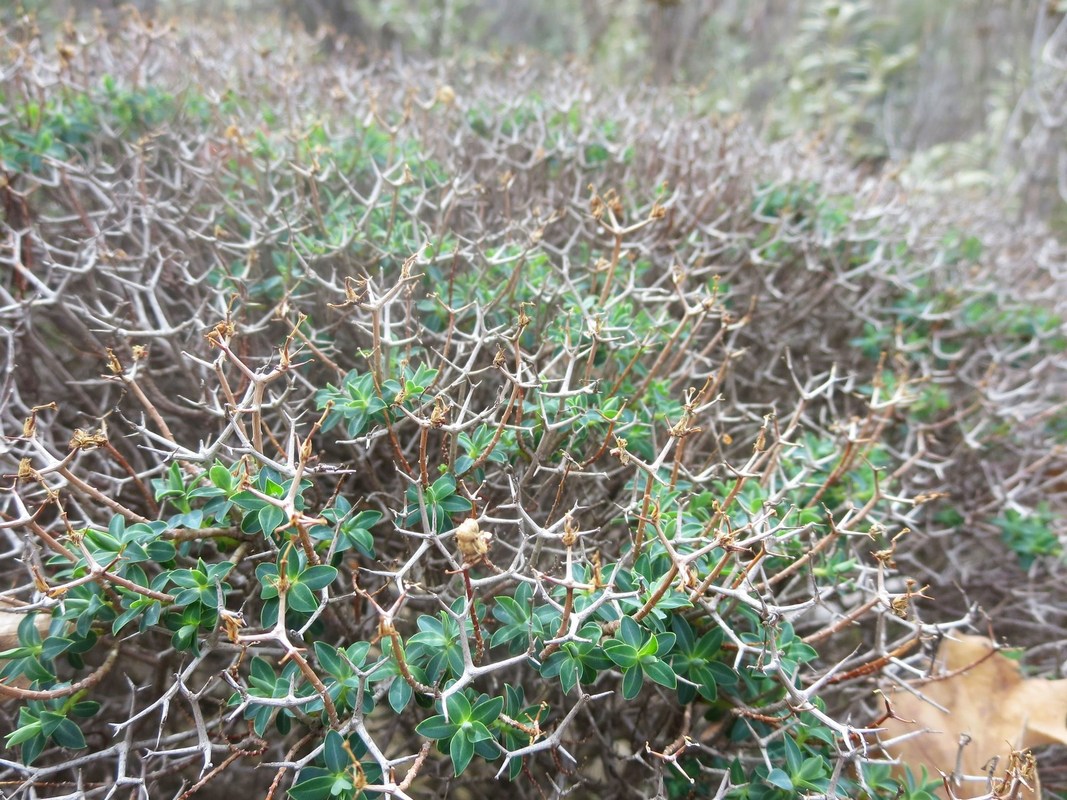
Euphorbia acanthothamnos
Plants noted:
Amygdalus webbii
Campanula versicolor
Centranthus ruber
Cerinthe sp.
Ephedra fragilis
Euphorbia acanthothamnos
Euphorbia characias
Euphorbia dendroides
Galanthus reginae-olgae
Lilium candidum
Polypodium australe
Verbascum sinuatum
The next stop before lunch was near Saxoneika, mainly to see Crocus goulimyi. This location was conveniently near a bakery/coffee shop, we had an hour to see plants or just sit and relax – for me plants were first, coffee second. The sun had gradually been appearing as the day went on, so by the time we reached this site the crocuses were fully open.
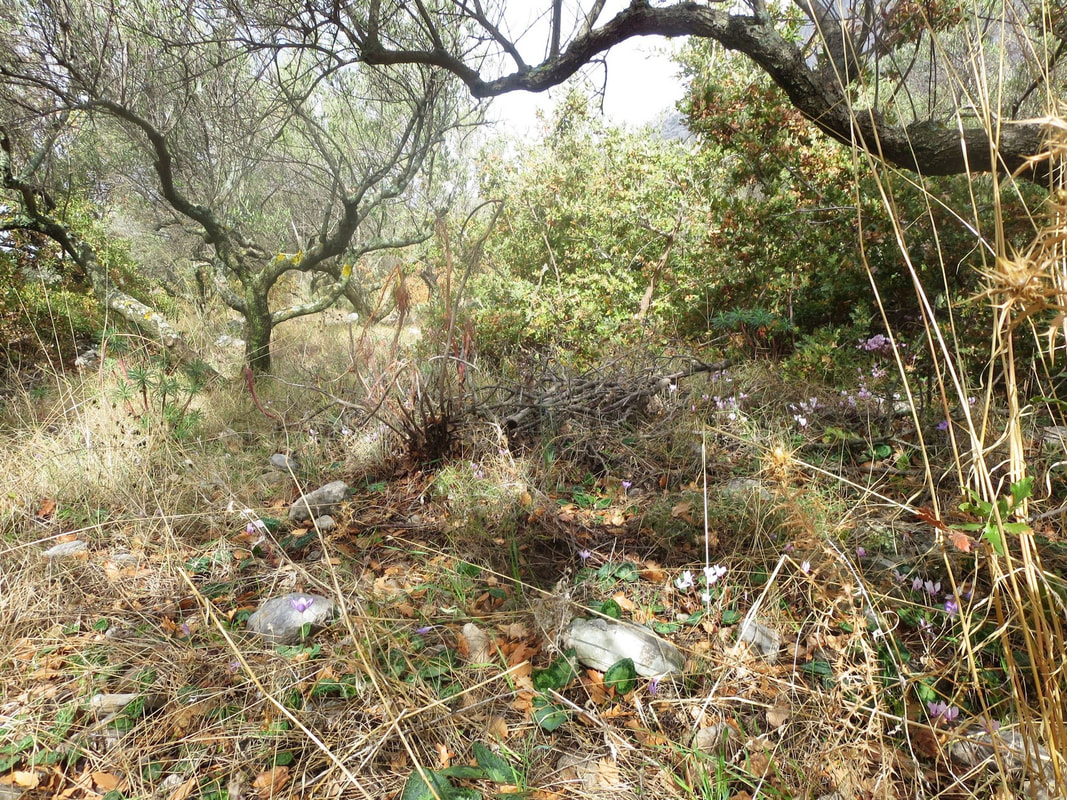
Habitat
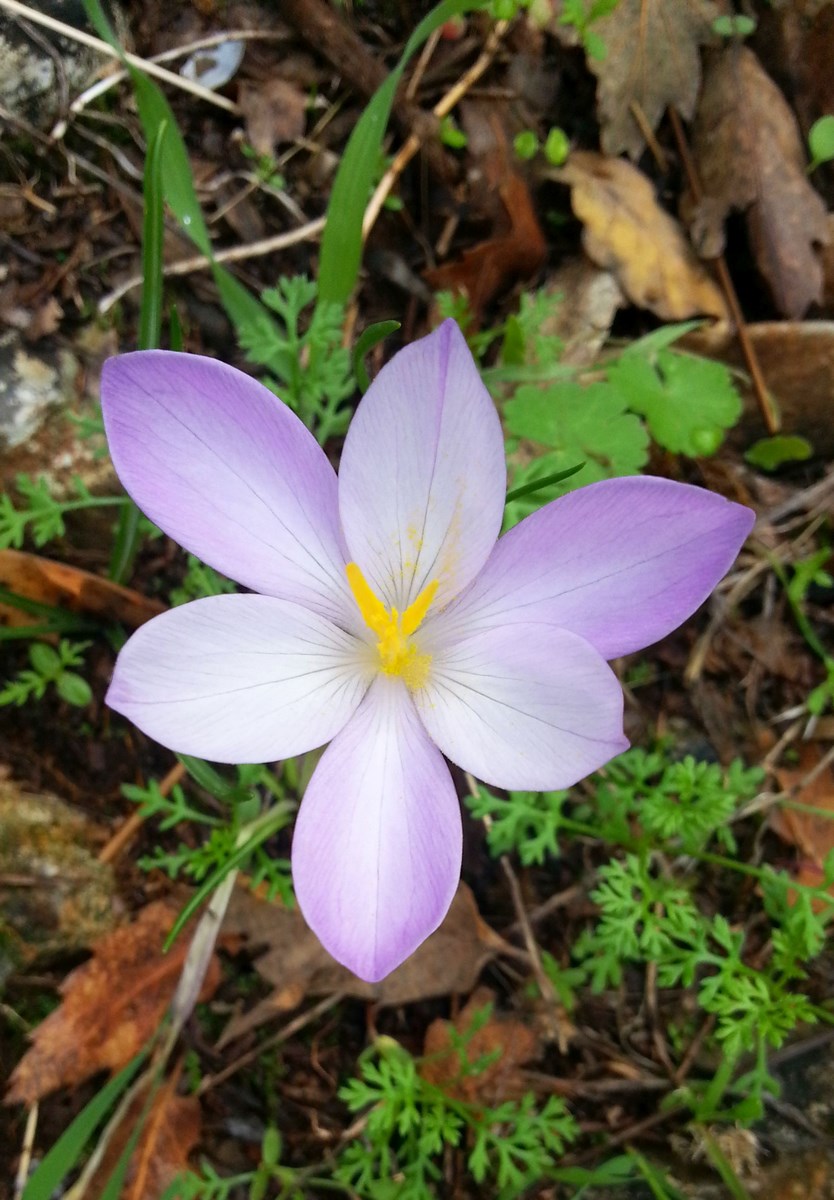
Crocus goulimyi
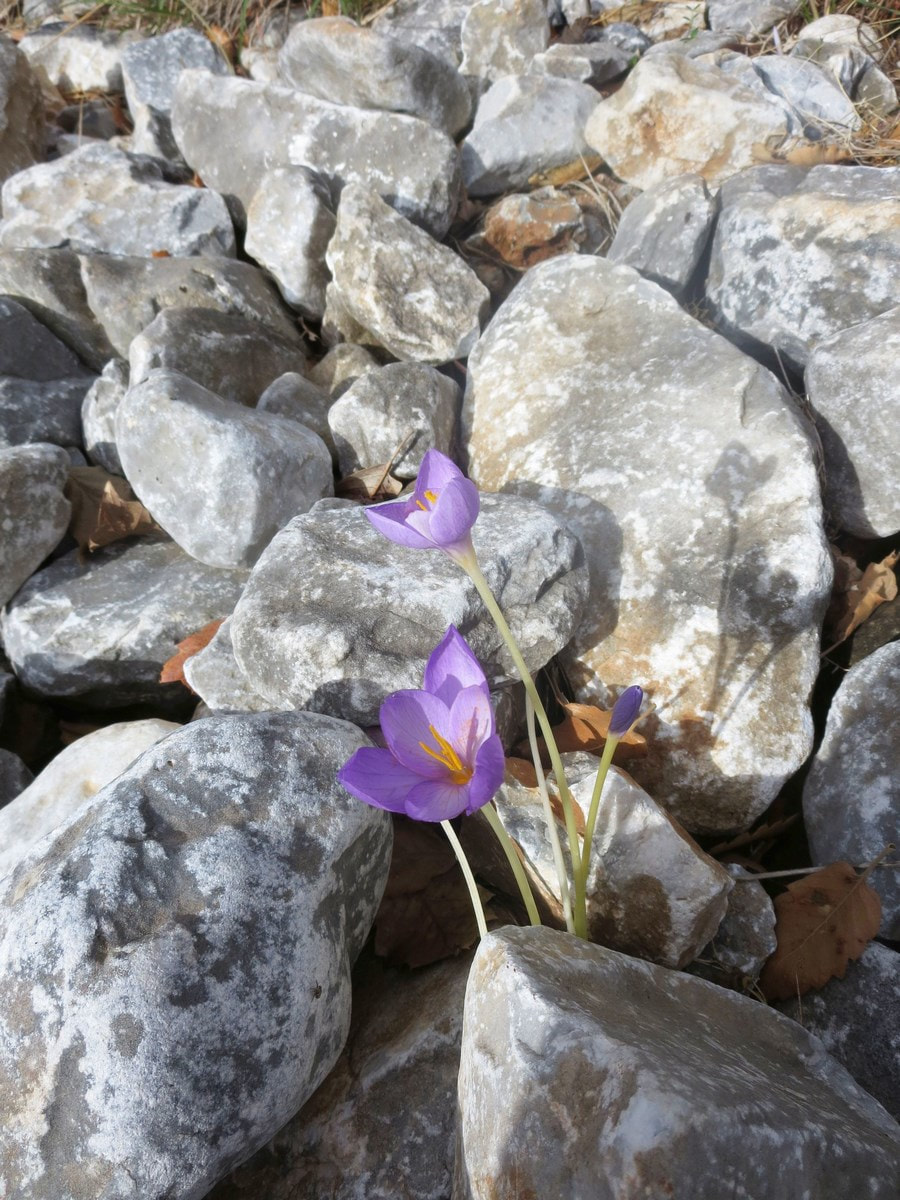
Crocus goulimyi
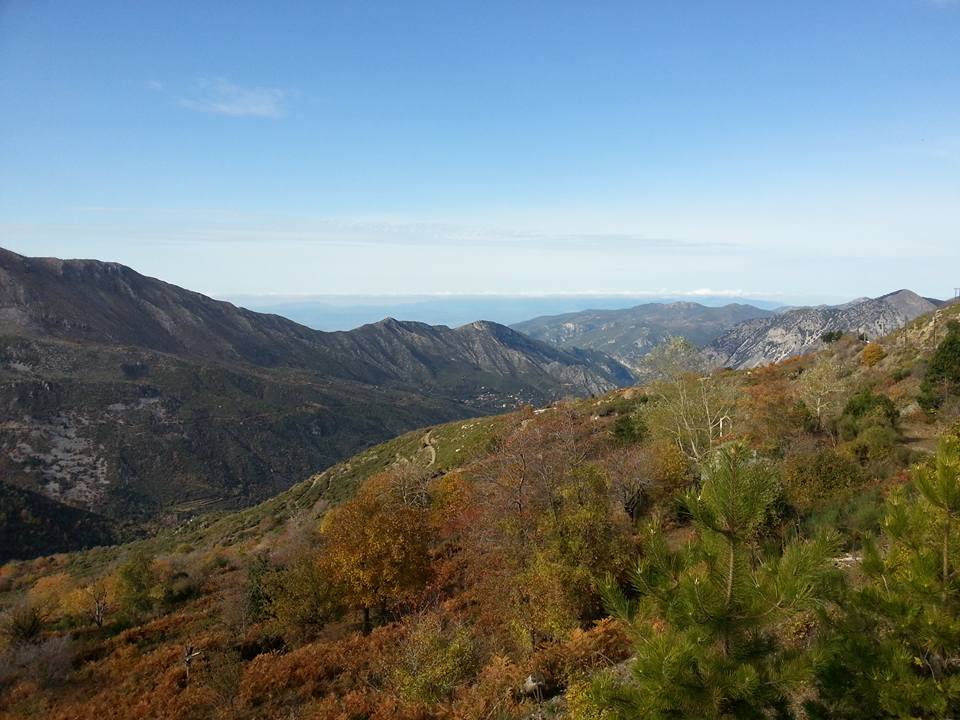
View down to Kardamili SJ
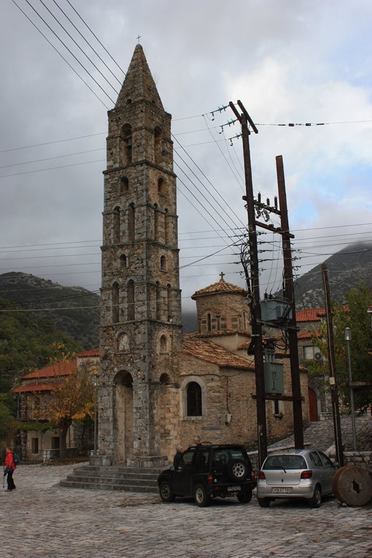
Milia church SJ
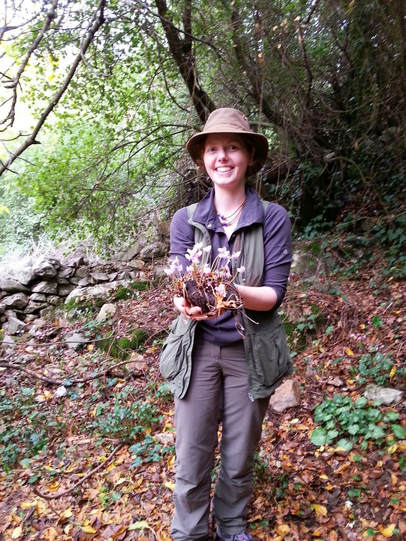
Becky holding Cyclamen tuber
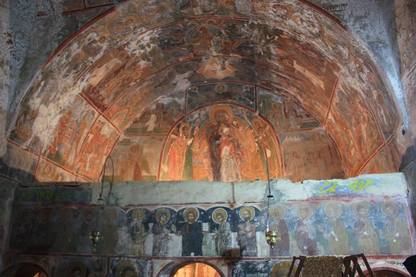
Milia church walls SJ
Our final stop was near Milia, a village between ravines. We had a good hour’s walk through the valley, finding masses of snowdrops and cyclamen in more concentrated clumps than the first snowdrop site we visited. At times it was a carpet of colour, whites and pinks in abundance. We saw cyclamen tubers which had been unearthed by wild boar, I was amazed at the size of them – I had to hold one with both hands. John said the boar used to stay higher up the mountains, now they are coming lower down in search of food.
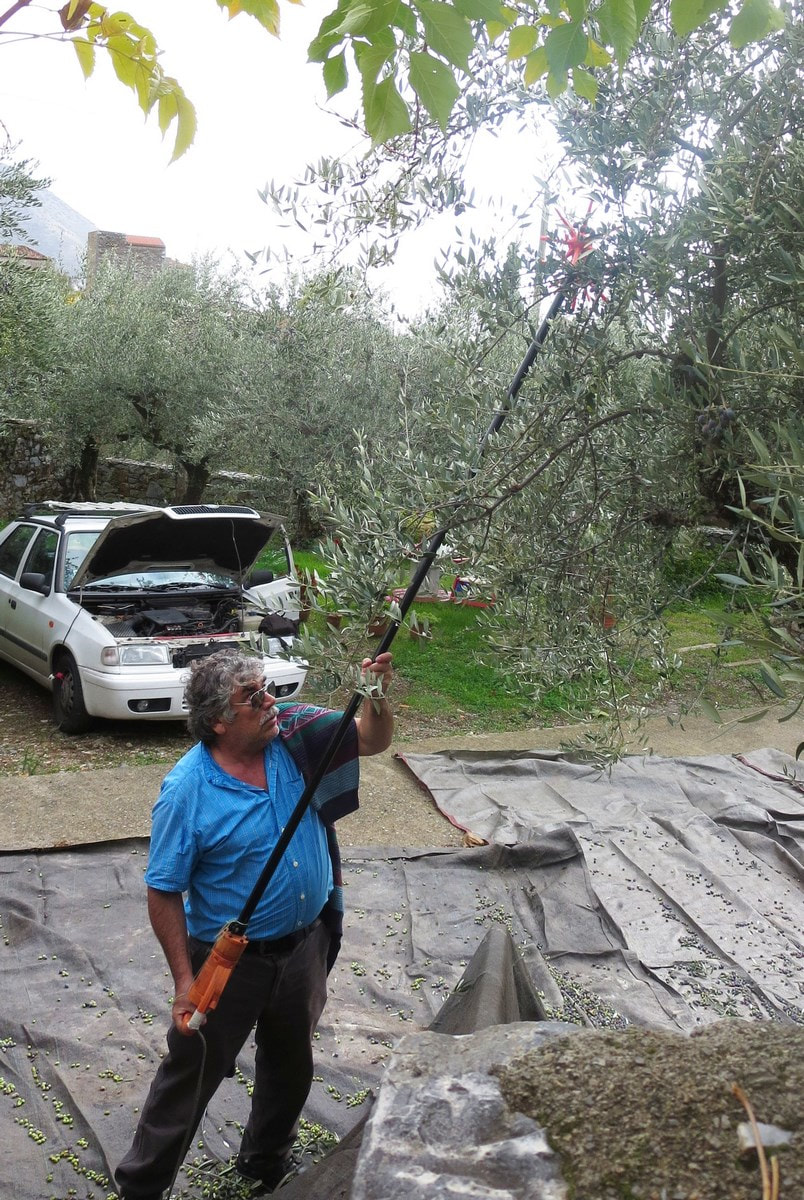
Using electric olive-picking tool
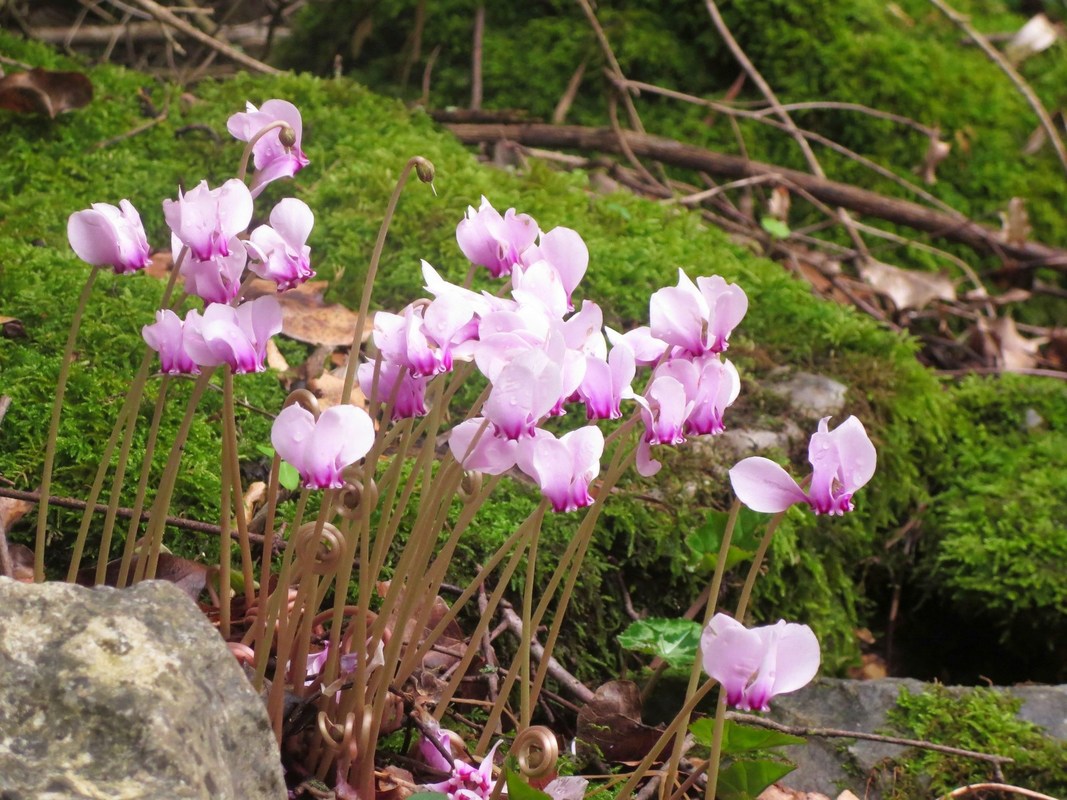
Cyclamen hederifoliium
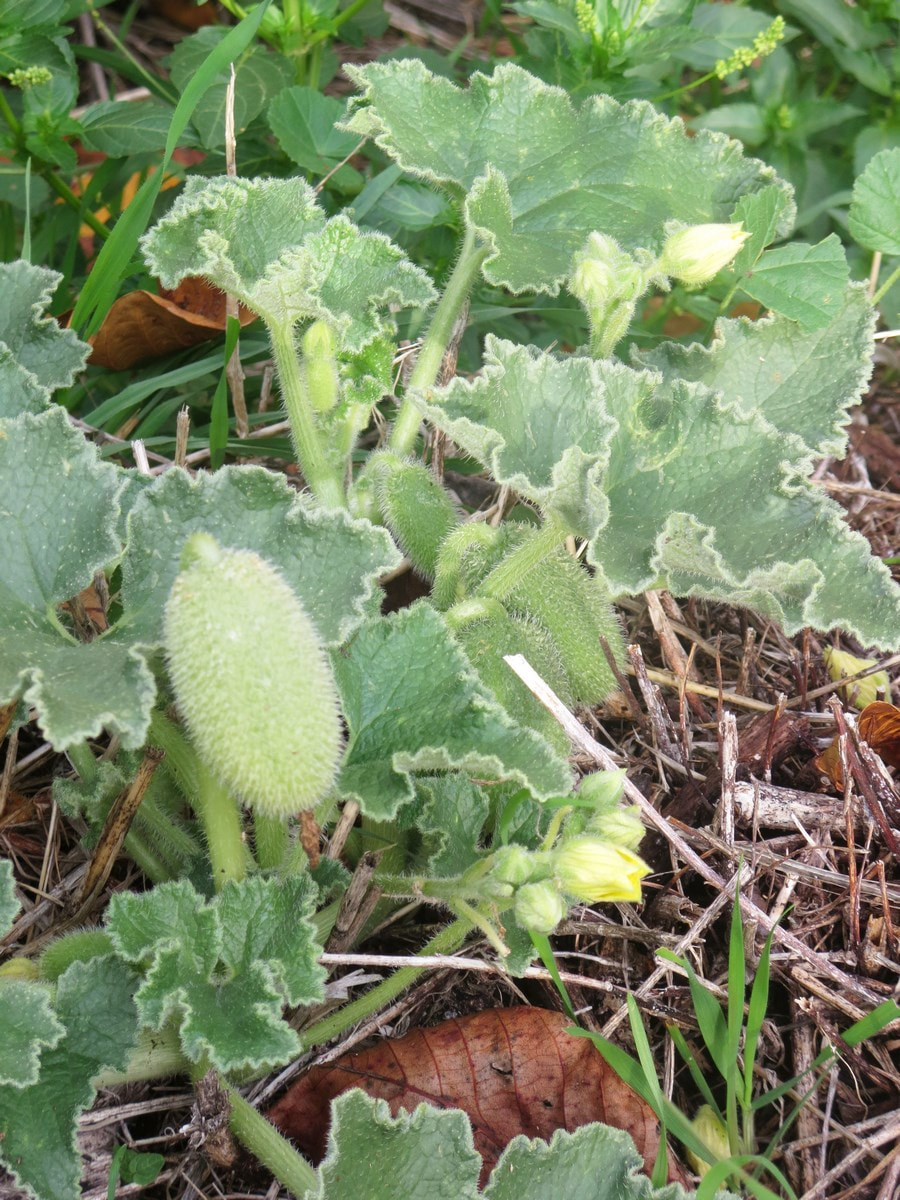
Ecballium elaterium
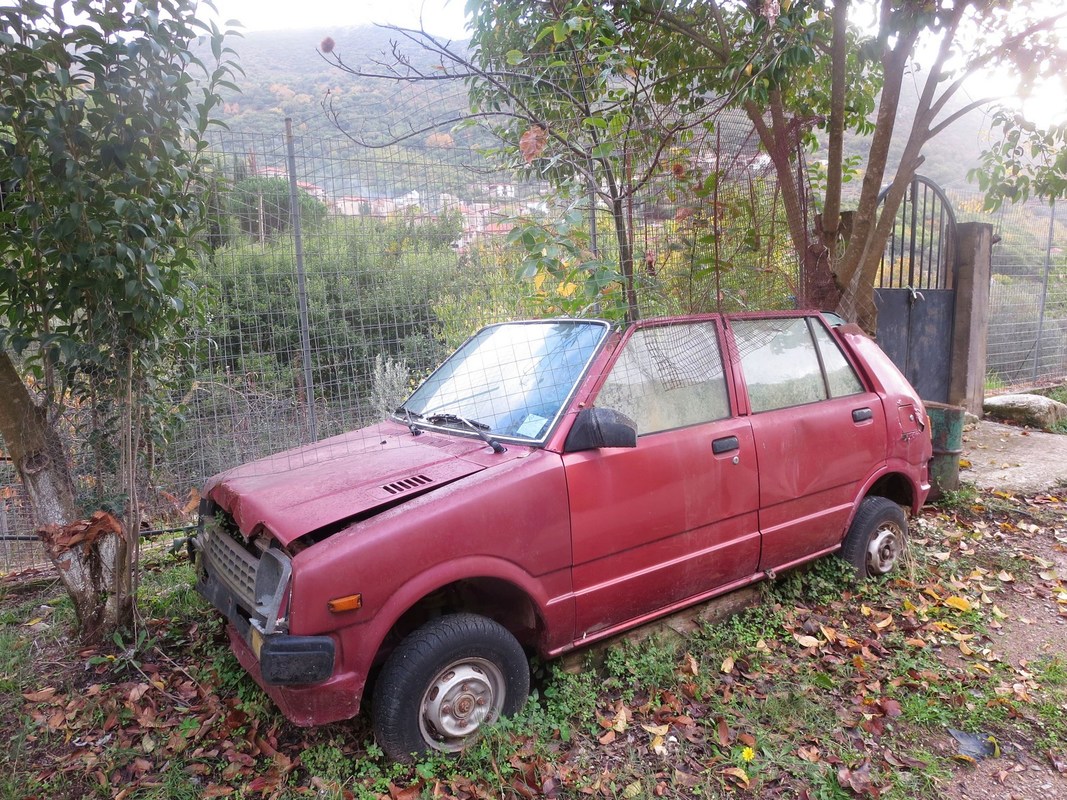
Unusual tree container

Galanthus reginae-olgae
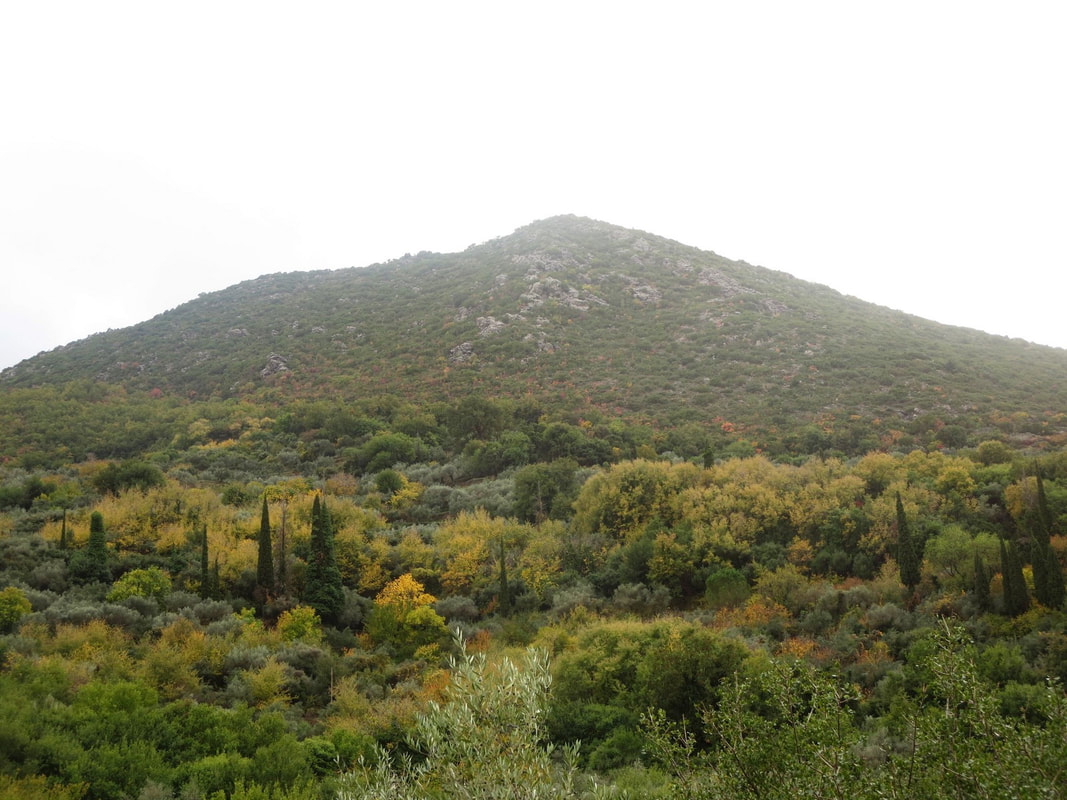
View of the valley
We wandered through the valley and out the other side, passing small houses and churches. A patch of Ecballium elaterium brought out the child in all of us, the ripe fruit is sensitive to touch and explodes on contact – it’s not called the squirting cucumber for nothing.
We saw a small car that had been adapted as a plant container with no roof and a chestnut tree growing out of it – the most unusual tree container I’ve ever encountered.
Plants noted:
Allium ampeloprasum
Aristolochia sempervirens
Arum italicum
Cyclamen graecum
Cyclamen hederifolium
Cyclamen hederifolium ssp. crassifolium
Ecballium elaterium
Euphorbia chamaesyce
Galanthus reginae-olgae
Hyoscyamus albus
Mirabilis jalapa
Phytolacca americana

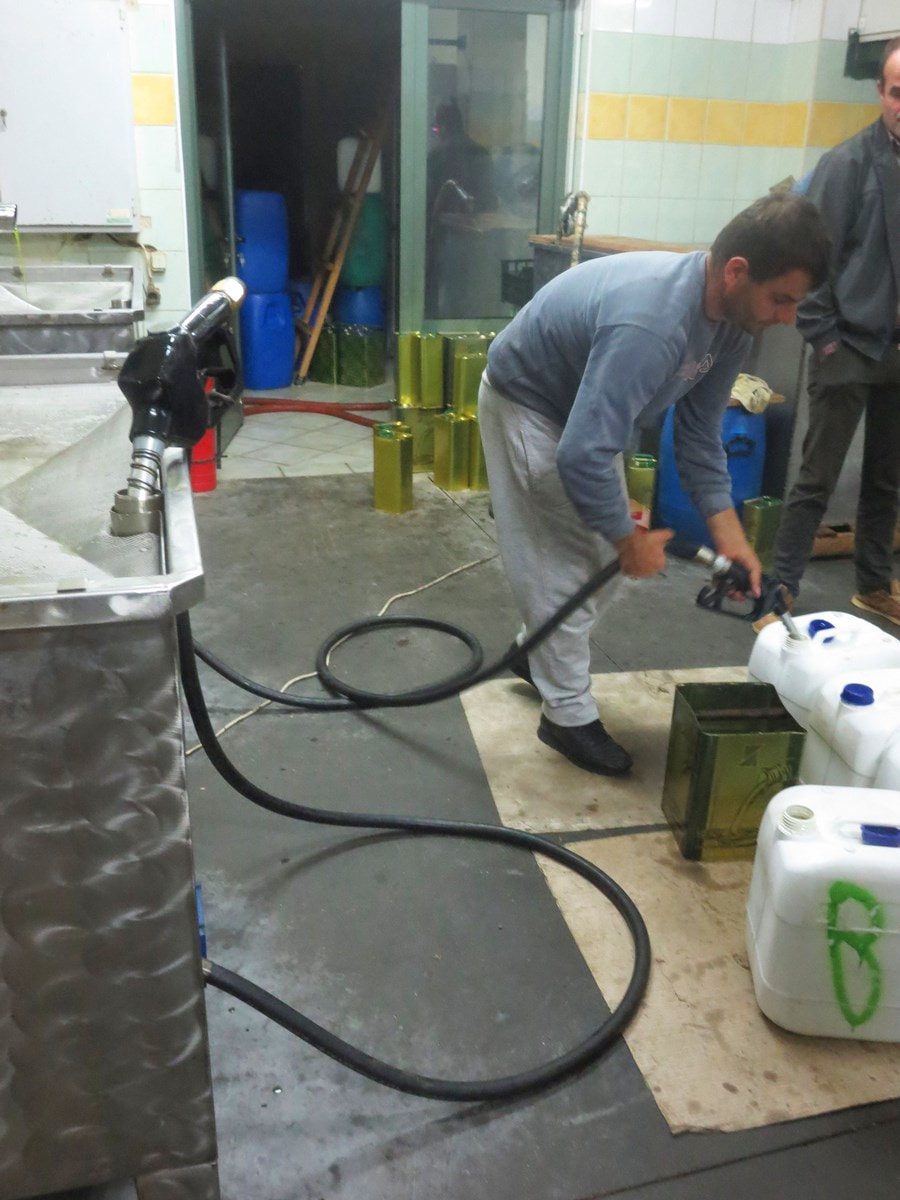
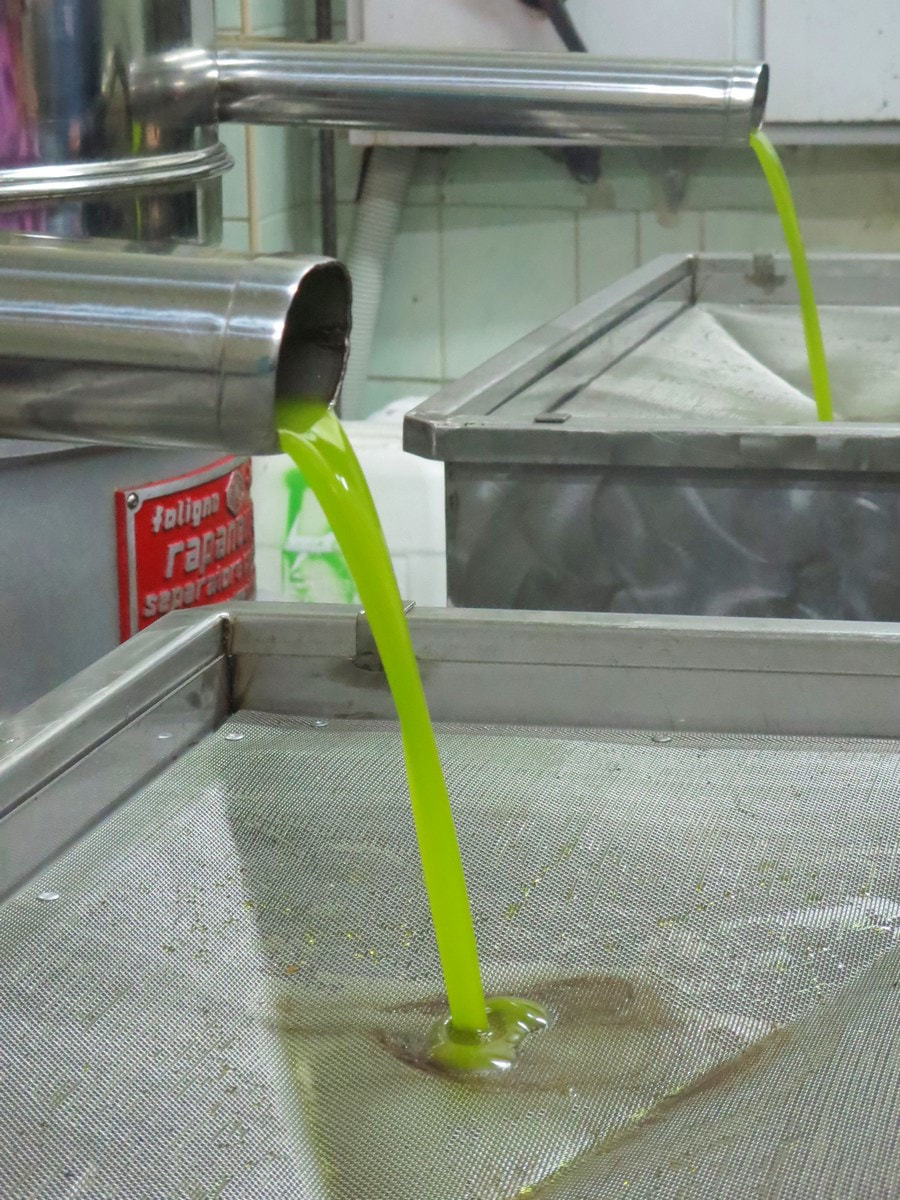
Returning to Kardamyli we had an unscheduled stop at a 40-year-old olive press, thanks to Ben and Julia knowing the owners. The workers were extremely busy but even so they let us into the factory to see the procedure in action: bags of olives are put into a sucking machine where the leaves and other debris is removed, the olives are mashed and sieved until just oil remains – it was as green as grass. The oil is pumped out into cans that are returned to the farmers. We tried the freshly pressed oil on bread – simply delicious. I hadn’t realised it’s best not to heat olive oil as it removes the nutrients, hence the reason Greeks only use it in dressings and with bread.
The evening was free, Heather invited me, John and another member, Celia, to have dinner with her at a restaurant in Agios Nikolaos. It’s full of tourists in peak season but at this time of year it was just locals. It was strange having an intimate meal with four of us after our days as a group of 24 but also very nice. Our last day in Kardamyli had been one to remember for sure.
Tuesday 14 November
Weather: Sunny, 22 ℃
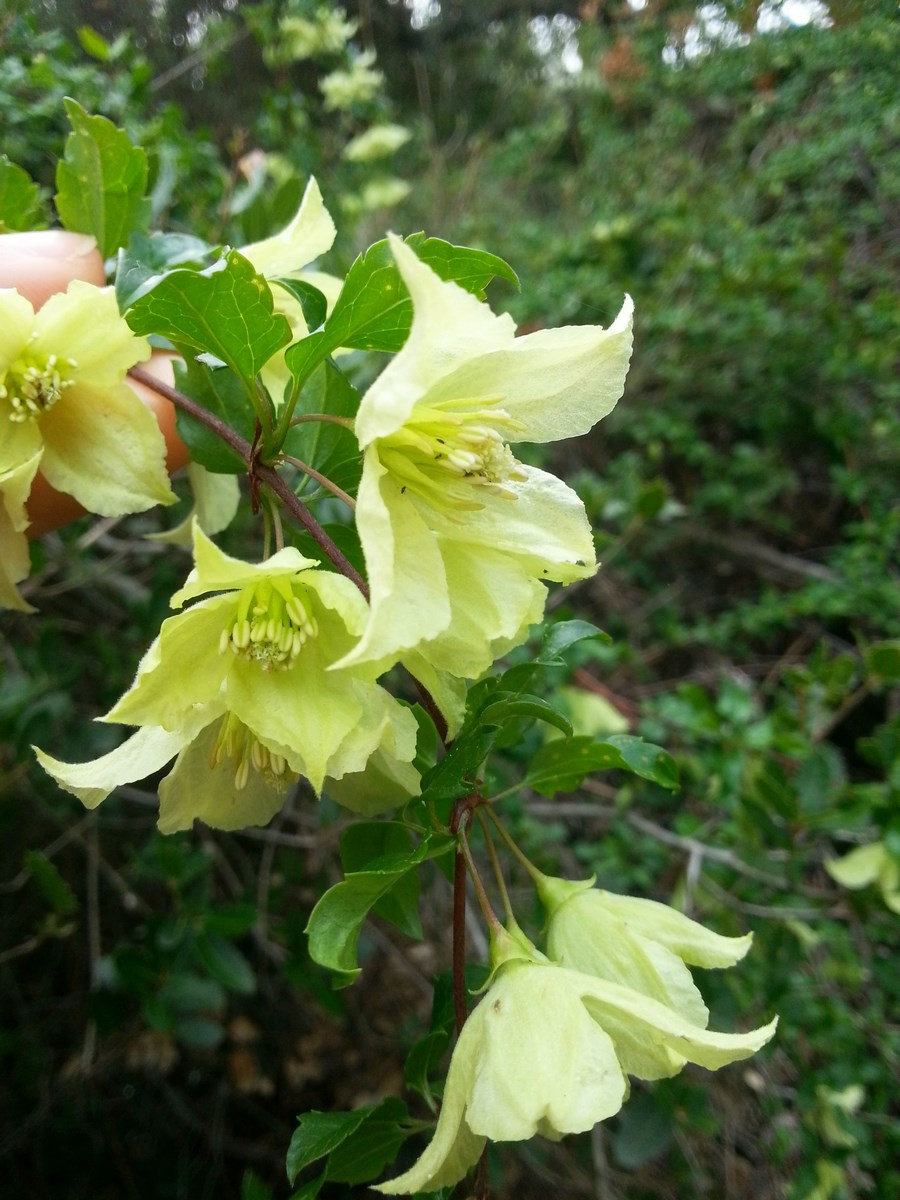
Clematis cirrhosa

Lunch in the bakery
We left Kardamyli, stopping briefly in the excellent local supermarket where I bought a 50ml bottle of olive oil – perfect size for hand luggage. We visited a museum, Folk Collection of Mani, a truly fascinating place (the term “Mani” covers the middle peninsula of the southern Peloponnese). There was just enough information and items on display to give a good insight into the way of life of the Mani people; I found the clothing and cooking equipment particularly interesting. Clematis cirrhosa was in flower just outside the museum, scrambling over Quercus coccifera.
We had lunch in the same bakery we visited the day before, the portion sizes were insane – slabs of spanakopita with a fresh cake for pudding, mine was a wedge of chocolate brownie. I was glad of a good walk afterwards.
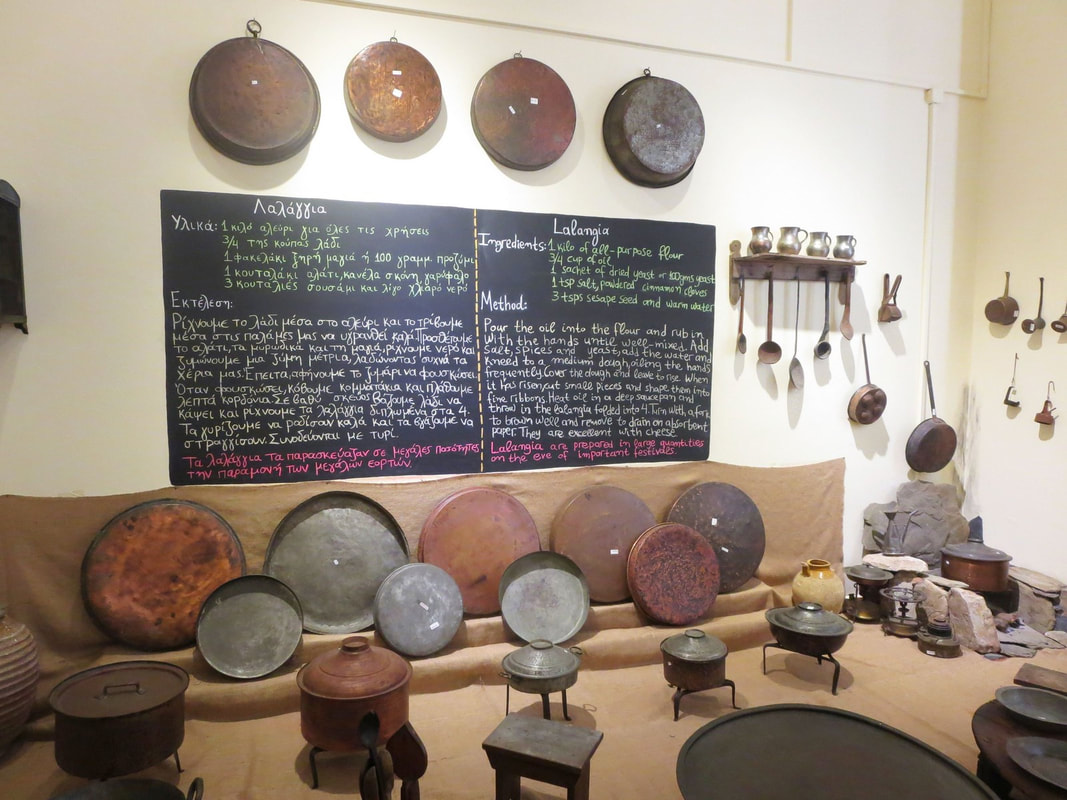
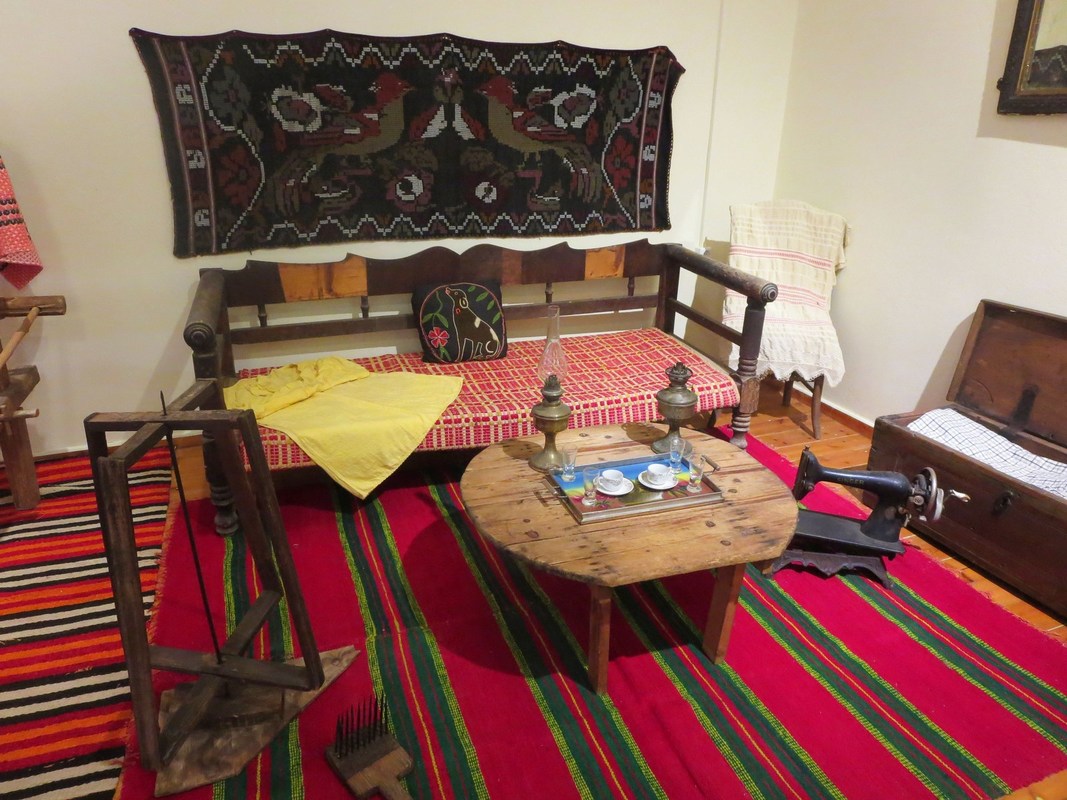
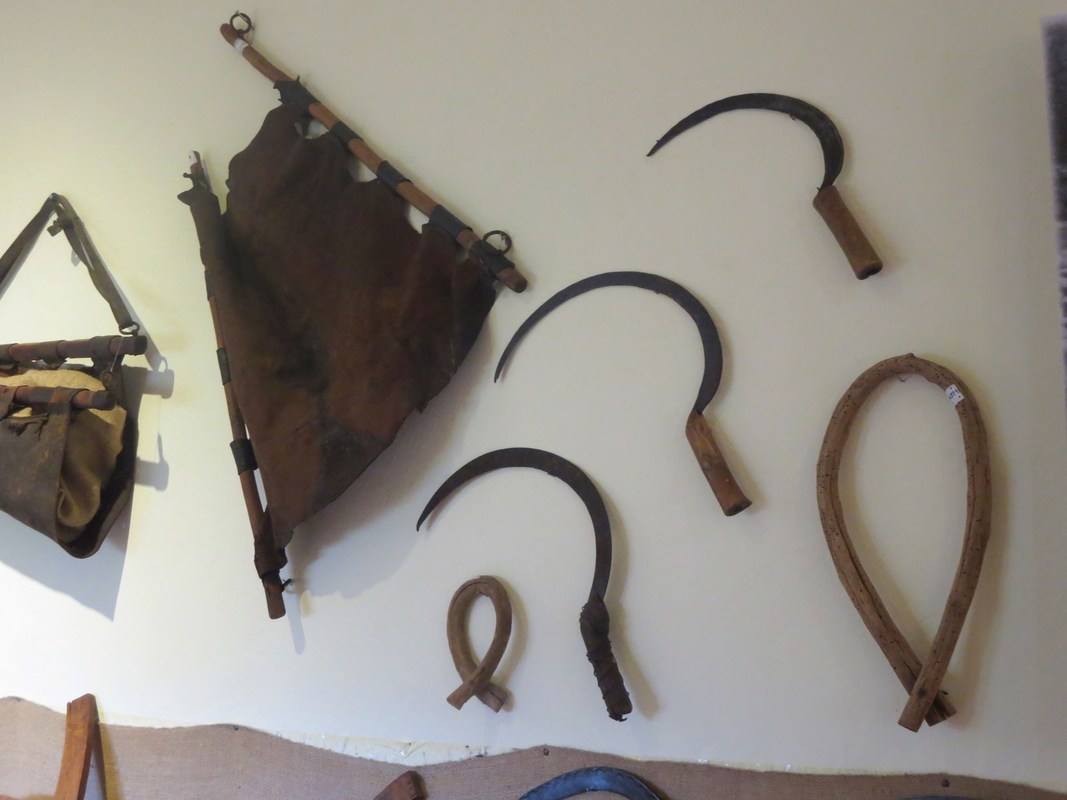
Plants noted en route:
Anagyris foetida
Artemisia arborescens
Clematis cirrhosa
Quercus coccifera
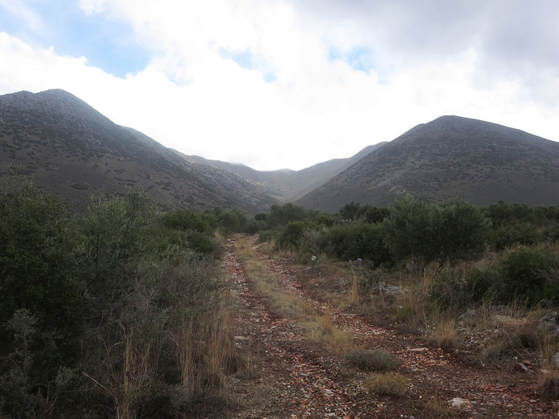
We drove round the beautiful bay of Itilo and stopped along the roadside at a good crocus spot. Crocus niveus was in flower, white and mauve forms; some clumps had petals tinted lilac-pink, like when colour seeps from damp tissue paper. We spotted Colchicum pusillum and several Cyclamen graecum. A friendly stray dog who we all befriended kept us company around the site.
Plants noted:
Colchicum pusillum
Crocus niveus
Cyclamen graecum
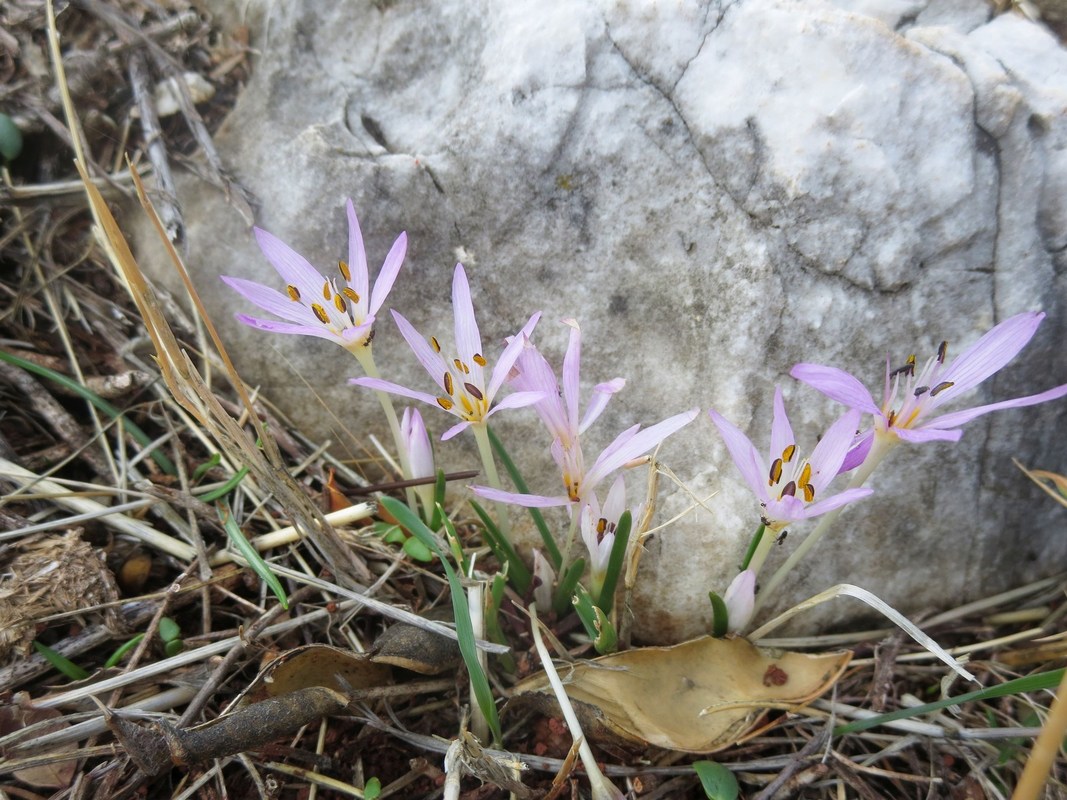
Colchicum pusillum

Crocus niveus
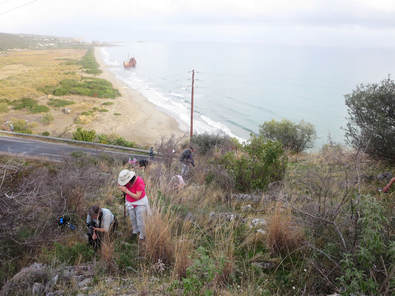
Members scrambling up the hillside

Dimitrios shipwreck
We then stopped north-east of Gythio to see one plant – Narcissus tazetta growing on a steep hillside which involved a fair bit of scrambling. The effort was worth it, the views were as remarkable as the daffodil; seeing a paperwhite narcissus in pristine condition, flowering out of the cliffs was crazy. The scent was even more intense than I imagined, it lingered in my nostrils for the whole evening. There were more clumps in flower lower down the hillside, clumps further up were still tight in bud. It was hard not to tread on them, or cyclamen or crocuses. Anemone coronaria was spotted again, foliage only though.
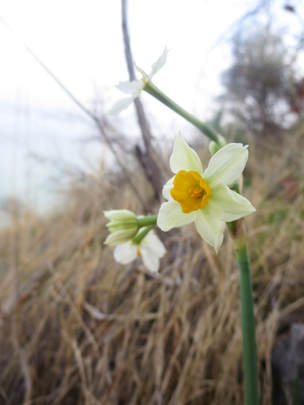
Narcissus tazetta
Views of the Dimitrios shipwreck were stunning in the late evening sunlight, a starkly dramatic feature against the crashing waves. The wreck lay below us beyond the cliffs, wedged in the shallows on the long, sandy stretch of Valtaki beach, where it has rested since 1981. Many stories relate to how the boat ended up there, my favourite, and least sensible, being the suggestion that it is a ghost ship…
Plants noted:
Anemone coronaria
Crocus boryi
Cyclamen graecum
Narcissus tazetta
Ptilostemon chamaepeuce
Once in Gythio we had time for a quick walk to Kranai before daylight disappeared. Around the corner to the south of the town is the coastal road lined with fish tavernas which end at the small island of Kranai, now connected by a causeway. This is where Paris and Helen left for Troy after he abducted her from King Menelaus in nearby Sparta.
We saw the Tzanetakis Tower, built during the Ottoman rule, and the lighthouse of Gythio built in 1873; it is 25 metres tall with a range of nine nautical miles. Like much of the area around Gythion, Kranai is covered in pine trees with gorgeous drifts of Crocus boryi underneath, flowers closing as rapidly as the setting sun.
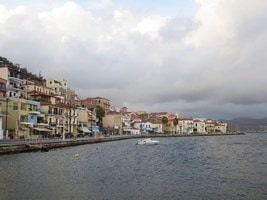
Gythio harbour
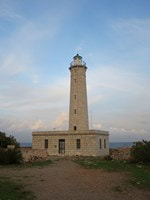
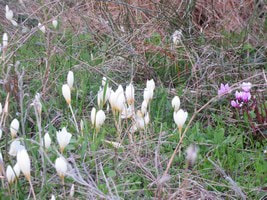
Crocus boryi en masse
Our last meal of the trip was the most memorable in a fantastic restaurant where we were served delicious fresh fish. Battered fried octopus, followed by calamari and red mullet with plates and plates of fresh salad and courgette fritters. The atmosphere was bittersweet, as we all enjoyed each other’s company for the last time.
Wednesday 15 November
Weather: Sunny and cloudy, 20 ℃
The final day involved a lot of travelling as we journeyed north to Athens airport. After a couple of hours we arrived at the ancient site of Corinth, located on the isthmus connecting mainland Greece with the Peloponnese.
We had a few hours to explore the site and have lunch, I could easily have spent a whole day here but it was still a spectacular whirlwind view of everything. I spent most time in the archaeological museum, there was so much history to soak up and artefacts to marvel at; jewellery, pottery, statues, mosaics, busts of Roman rulers, even inscriptions of Gallio and Erastus. My favourite display was a sphinx statue
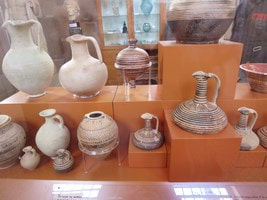
Pottery
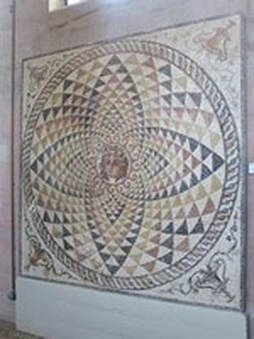
Mosaic
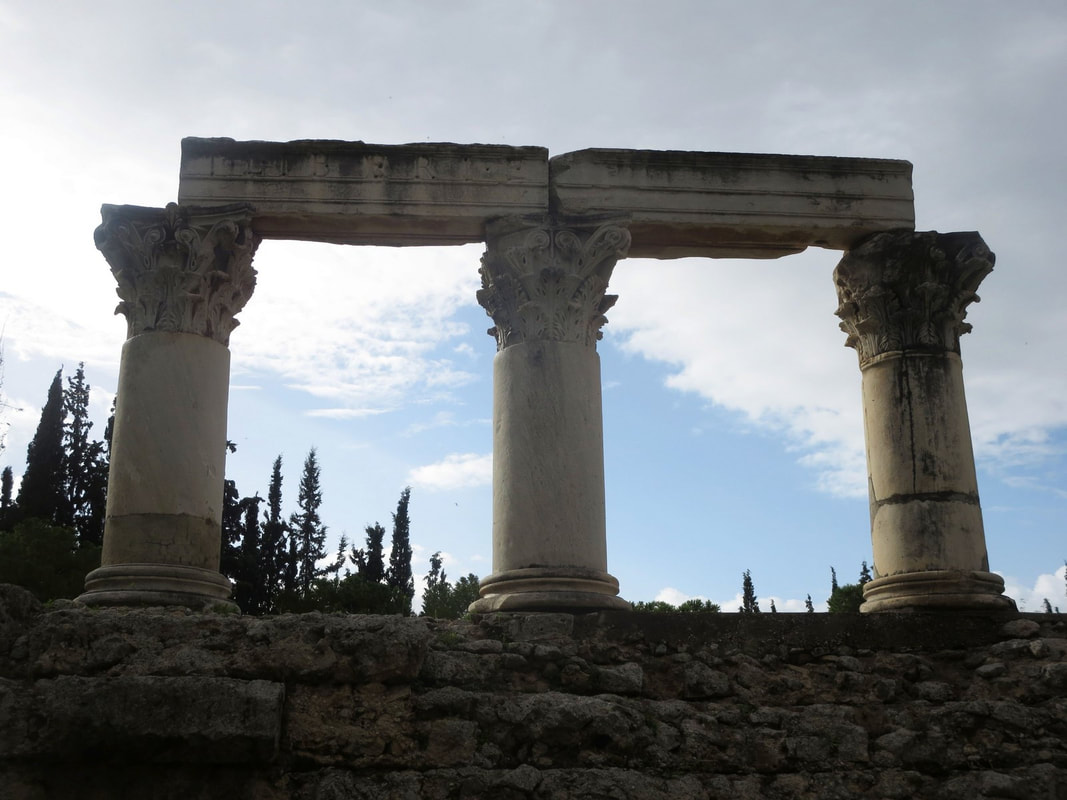
Temple of Octavia
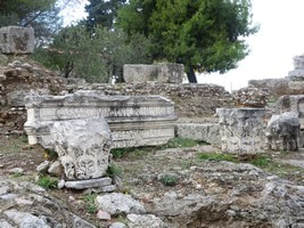
Ruins
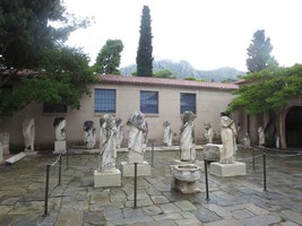
Statues in museum courtyard
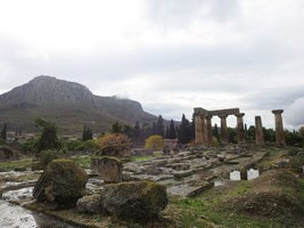
View of ancient Corinth
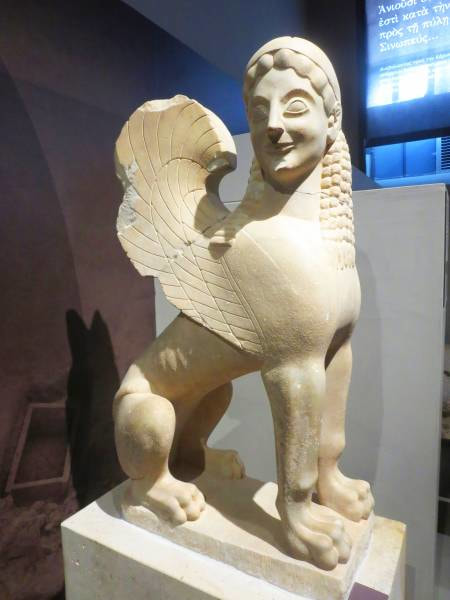
Sphinx statue
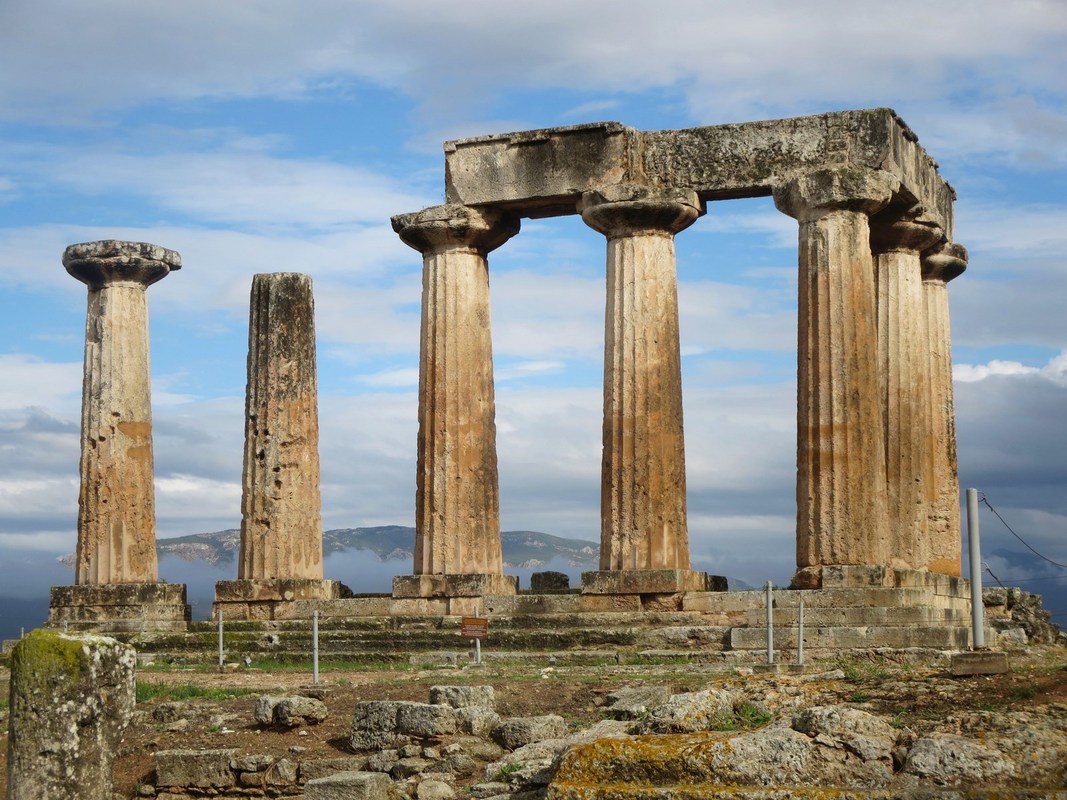
Temple of Apollo
I also walked around the ruins of ancient Corinth, spread around the base of the rock of Acrocorinth, which forms a natural acropolis for the city. Most of the surviving buildings are Roman rather than Greek, dating from the city’s prosperous age after Caesar sacked and rebuilt a great deal of the original Greek city. Much of the city has subsequently been toppled by earthquakes over centuries.
The site is dominated by the iconic 6th-century BC Temple of Apollo on a hill overlooking the remains of the Roman marketplace (agora). Seven of the original 38 Doric columns remain, a particular feature of the temple is the use of monolithic columns rather than the more commonly used column drums. It was huge, commanding most of the views of the site. The other surviving buildings included a large forum, a temple to Octavia, baths, the Bema where St Paul addressed the Corinthians, the Asklepeion temple to Asclepius, and a centre of healing fountains.

Our wonderful driver, Giorgos
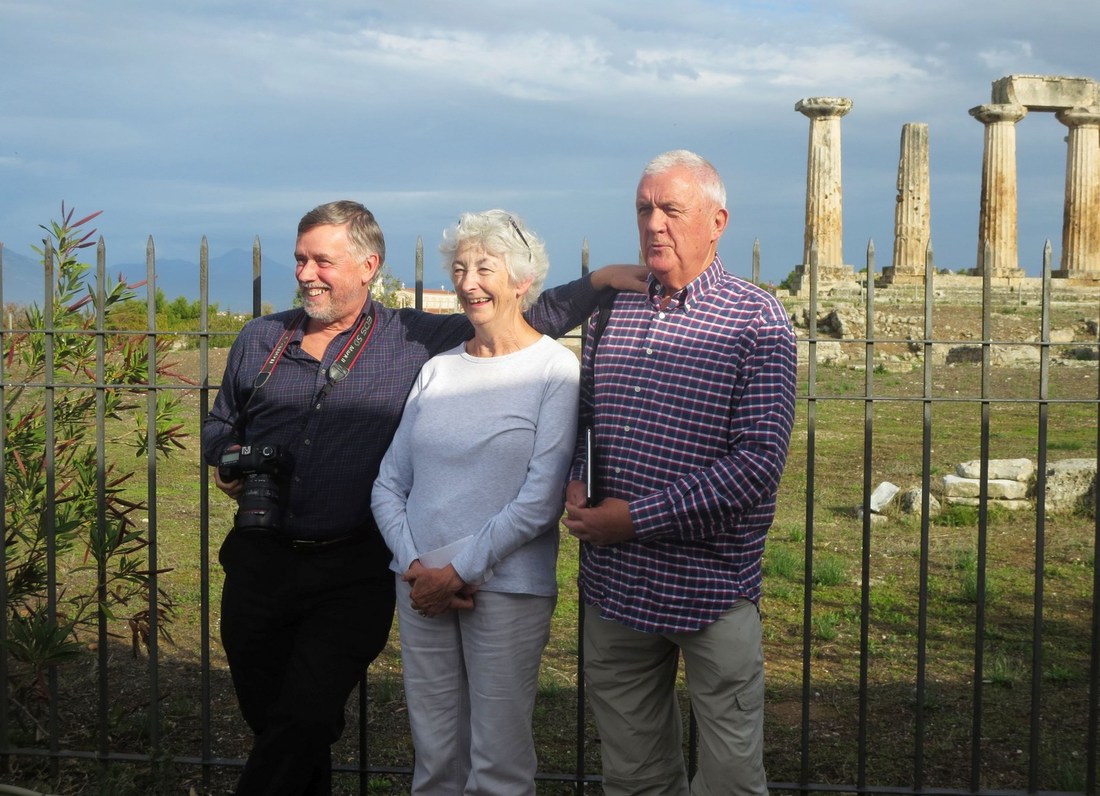
MPG trip organisers John Fielding, Heather Martin & Melvyn Jope
The previous day there had been a collection for members to donate money for our driver, Yiorgos, seeing as he had been such an excellent presence. Heather presented him with this over lunch, he was thrilled and so were we to see the look of delight on his face. He had been a superb driver and host for the whole trip, always smiling and on hand to help with the slightest thing.
Heavy rain greeted us near the airport, getting us in the mood to return back home to wet wintry weather. Our flight was delayed by an hour, meaning we had plenty of time to relax after going through security. Some of us enjoyed a few “going home” drinks, ending the trip the same way we started – with alcohol!
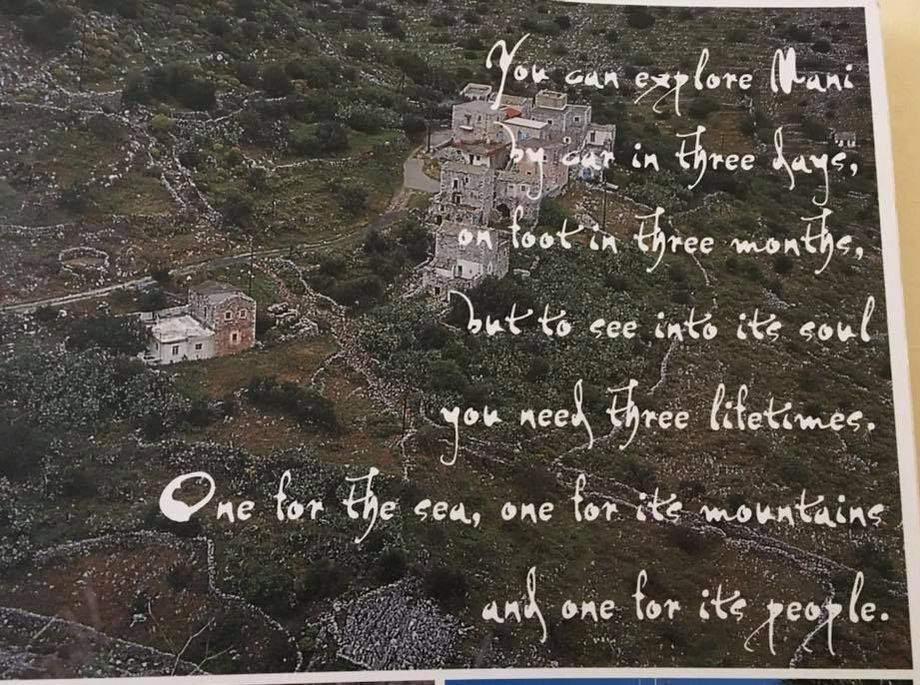
A final thought from Melvyn
Thanks to the following for additional photographs: Jim Cable; Sona Harrap; Melvyn Jope; Stephen Jury
Full list of plants noted (flowering and non-flowering):
A
Abies cephalonica
Allium ampeloprasum
Allium callimischon
Amygdalus webbii
Anagyris foetida
Anemone coronaria
Arbutus andrachne
Arbutus unedo
Arisarum vulgare
Aristolochia sempervirens
Artemisia arborescens
Arum italicum
Asparagus aphyllus
Asplenium ceterach
B
Bellis sylvestris
Brugmansia sp.
C
Calamintha nepeta
Campanula topaliana
Campanula versicolor
Capparis spinosa
Castanea sativa
Celtis australis
Centaurea sp.
Centranthus ruber
Cercis siliquastrum
Cerinthe sp.
Cichorium intybus
Clematis cirrhosa
Clematis vitalba
Colchicum cupanii
Colchicum pusillum
Coridothymus capitatus
Cotinus coggygria
Crataegus monogyna
Crocus biflorus ssp. melantherus
Crocus boryi
Crocus goulimyi
Crocus laevigatus
Crocus niveus
Cyclamen graecum
Cyclamen hederifolium
Cyclamen hederifolium ssp. crassifolium
D
Diospyros kaki
Drimia numidica
E
Erica arborea
Erica manipuliflora
Eriobotrya japonica
Euphorbia chamaesyce
Ecballium elaterium
Ephedra fragilis
Eryngium campestre
Euphorbia acanthothamnos
Euphorbia characias
Euphorbia dendroides
Euphorbia rigida
F
Ferula communis
Ficus benjamina
Ficus carica
Fraxinus ornus
Freesia sp.
G
Galactites tomentosa
Galanthus reginae-olgae
Genista acanthoclada
Gomphocarpus fruticosus
H
Himantoglossum robertianum
Hyoscyamus albus
I
Iris florentina
Iris unguicularis
Isothecium myosuroides
J
Juniperus drupacea
L
Lagerstroemia indica
Lilium candidum
Lithodora zahnii
Lobaria pulmonaria
Lunaria annua ssp. pachyrhiza
M
Melia azedarach
Mirabilis jalapa
Morus alba
N
Narcissus obsoletus
Narcissus tazetta
O
Ocimum tenuiflorum
Olea europaea
Ophrys sp.
Opuntia ficus-indica
Orchis italica
Orobanche sp.
P
Persicaria capitata
Pharbitis learii
Phlomis fruticosa
Phoenix canariensis
Phytolacca americana
Pinus halepensis
Pistacia terebinthus
Platanus orientalis
Polypodium australe
Populus alba
Prospero autumnale
Ptilostemon chamaepeuce
Pyrus spinosa
Q
Quercus coccifera
Quercus macrolepis
Quercus pubescens
R
Robinia pseudoacacia
Rosa canina
Rubus ulmifolius ssp. sanctus
Ruscus aculeatus
S
Sambucus ebulus
Scolymus hispanicus
Smilax aspera
Spartium junceum
Spiranthes spiralis
Sternbergia lutea
U
Umbilicus horizontalis
V
Verbascum sinuatum
Verbascum undulatum
Vitex agnus-castus



